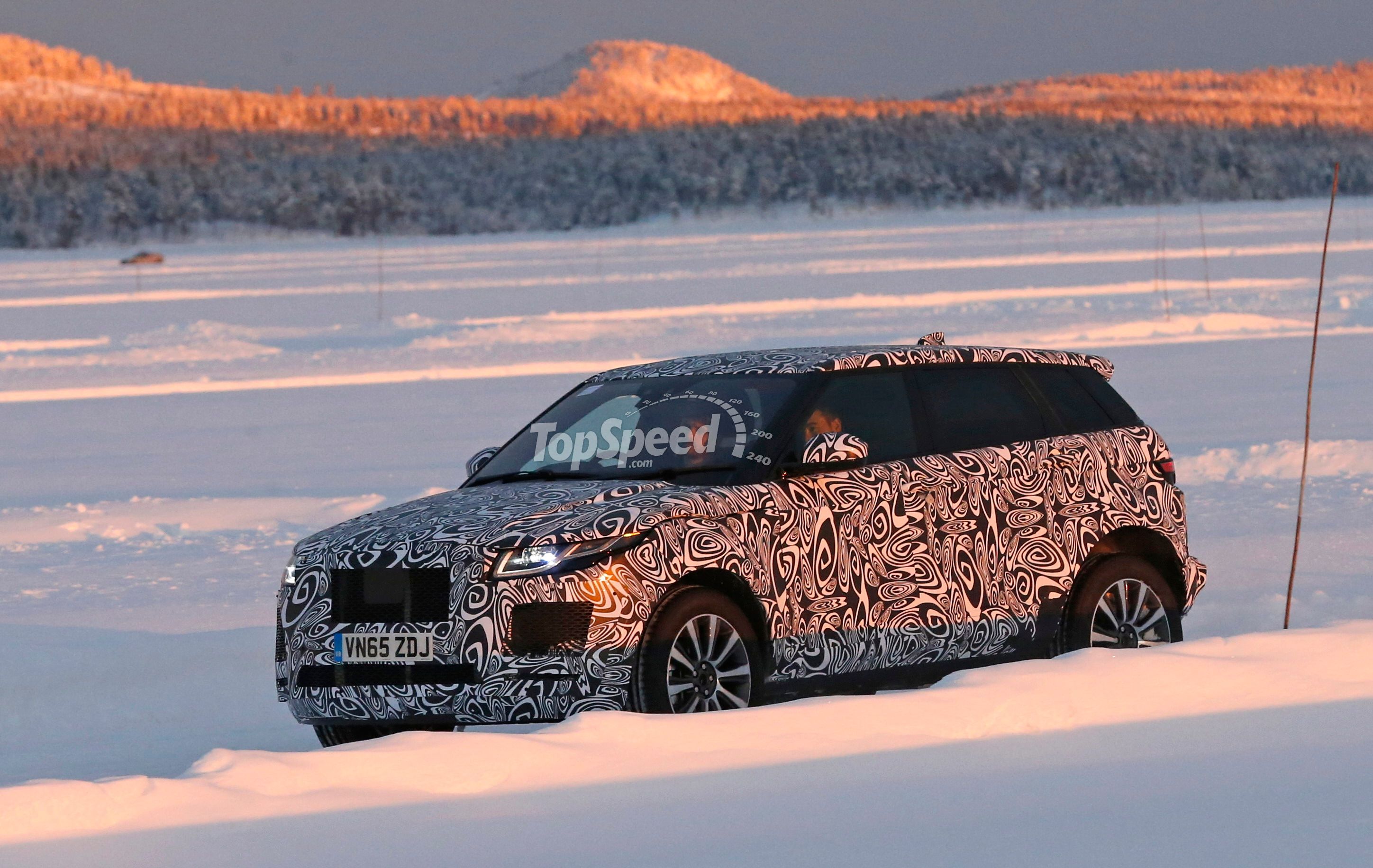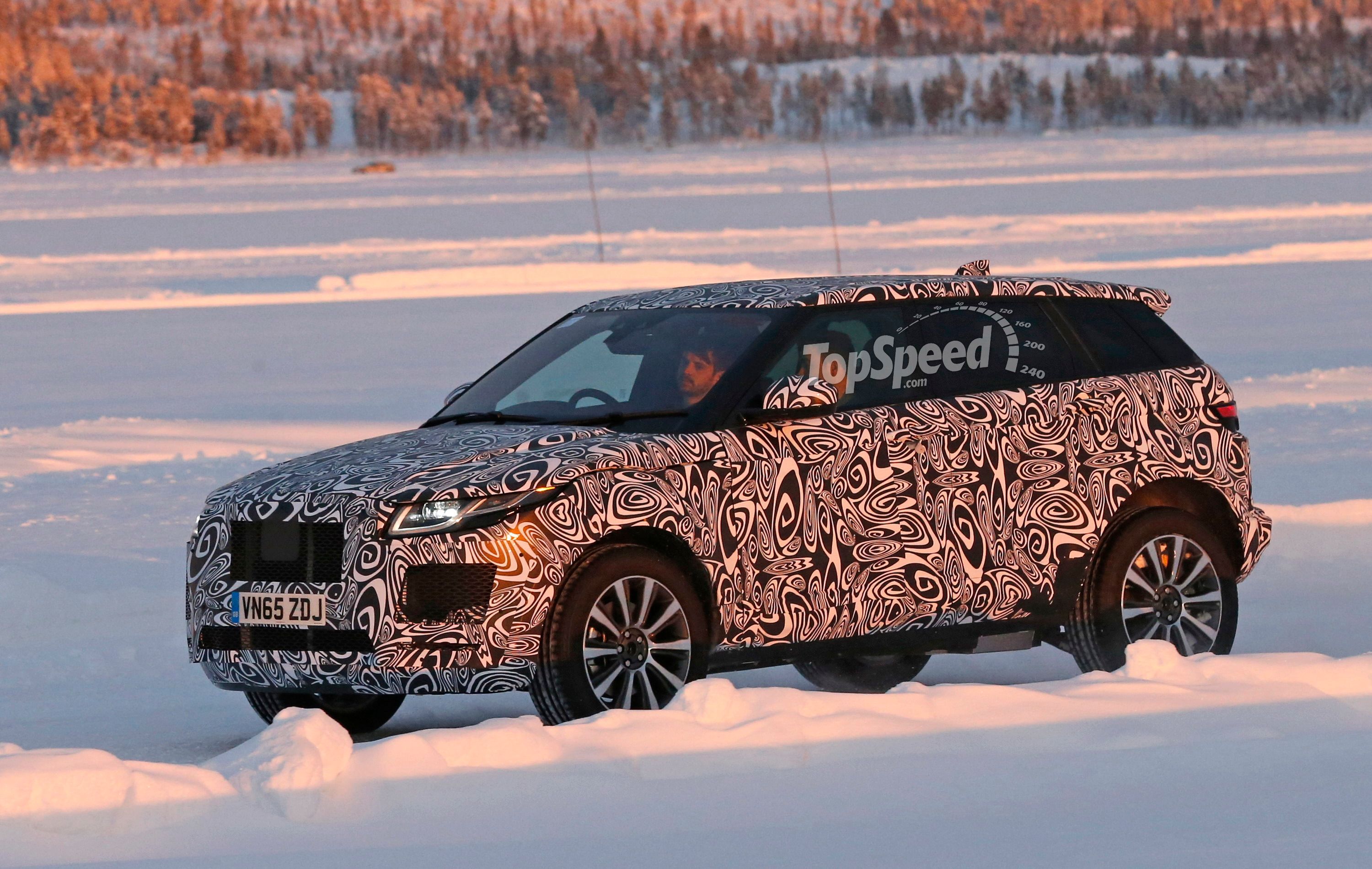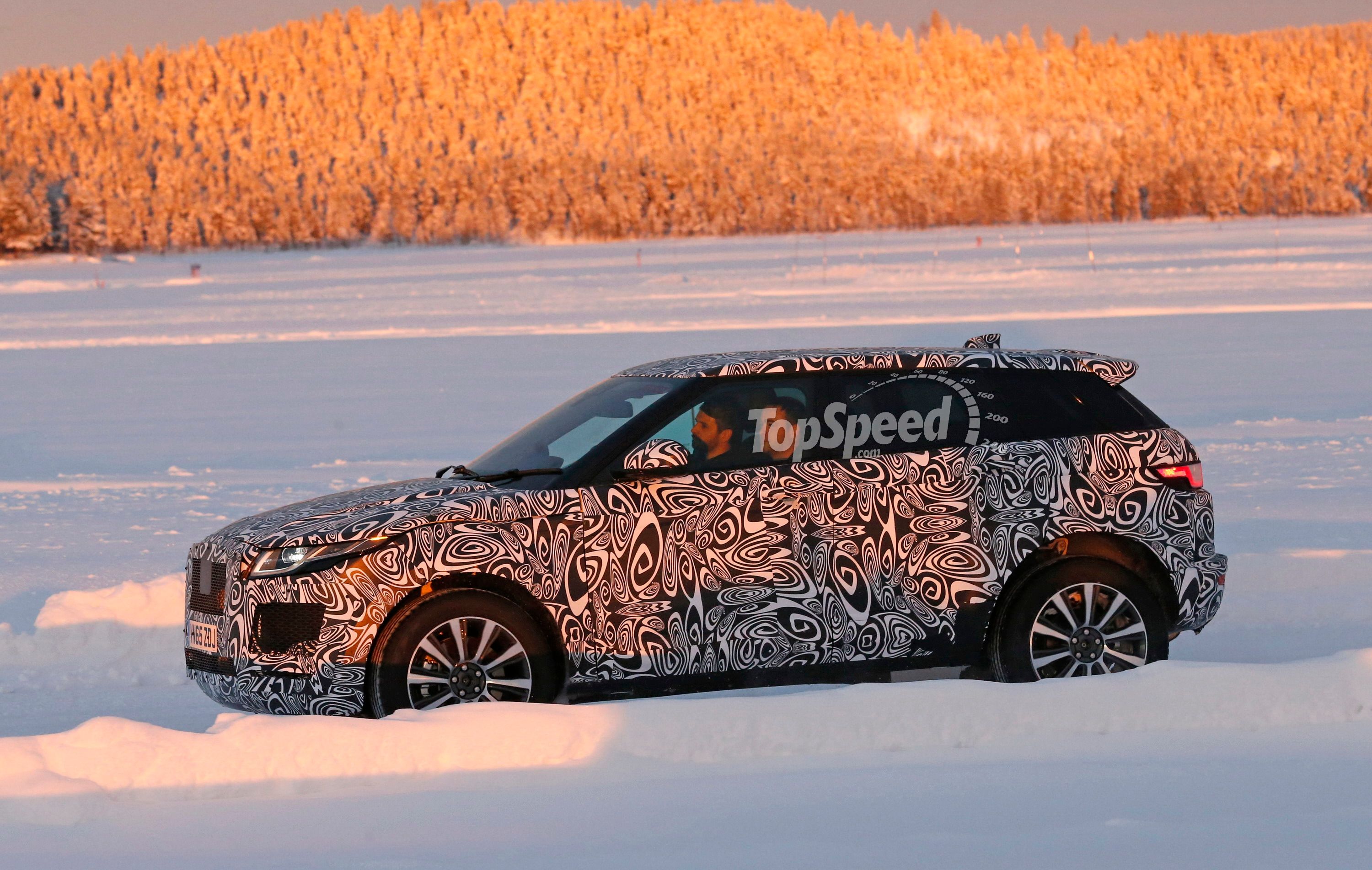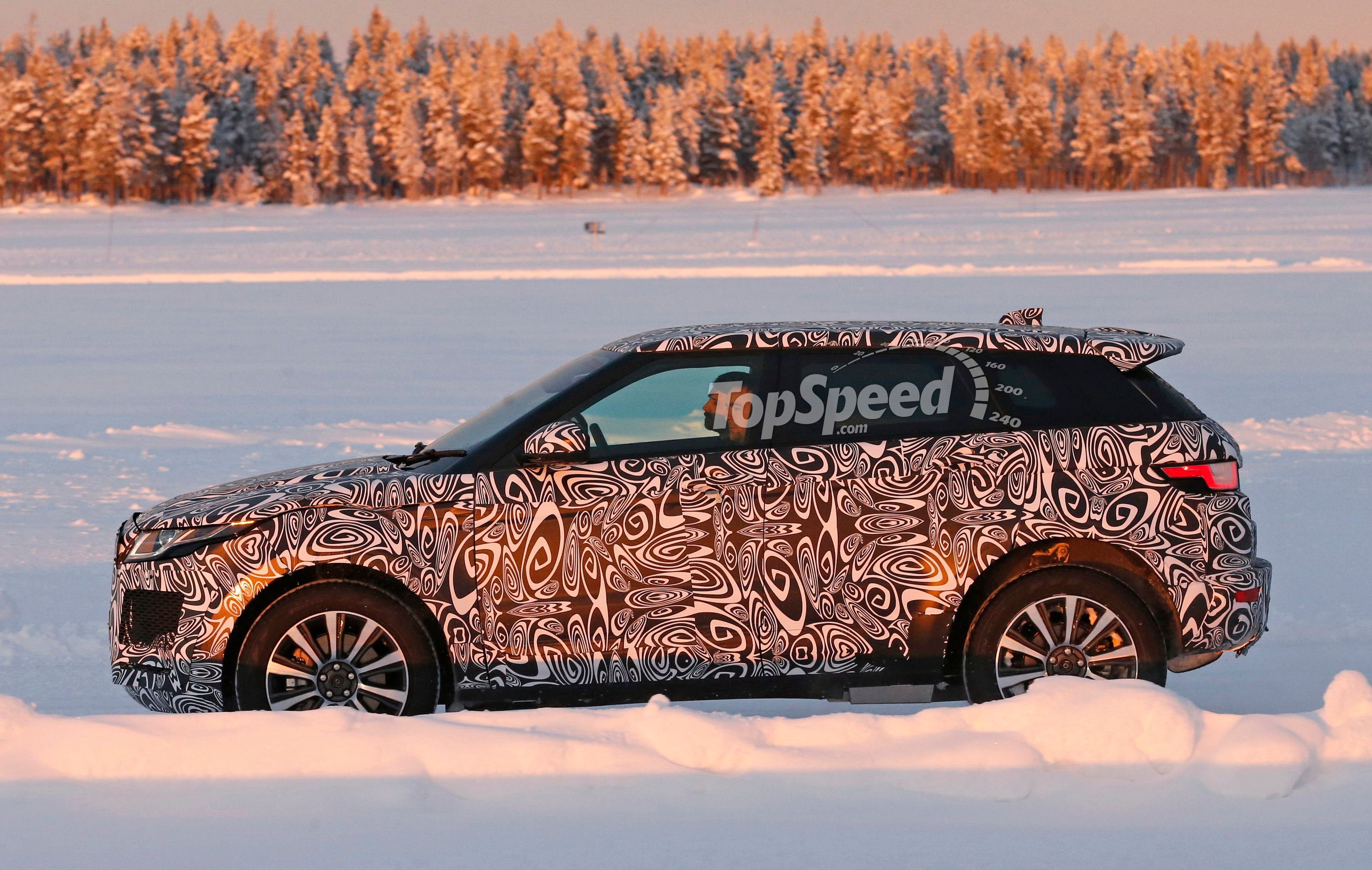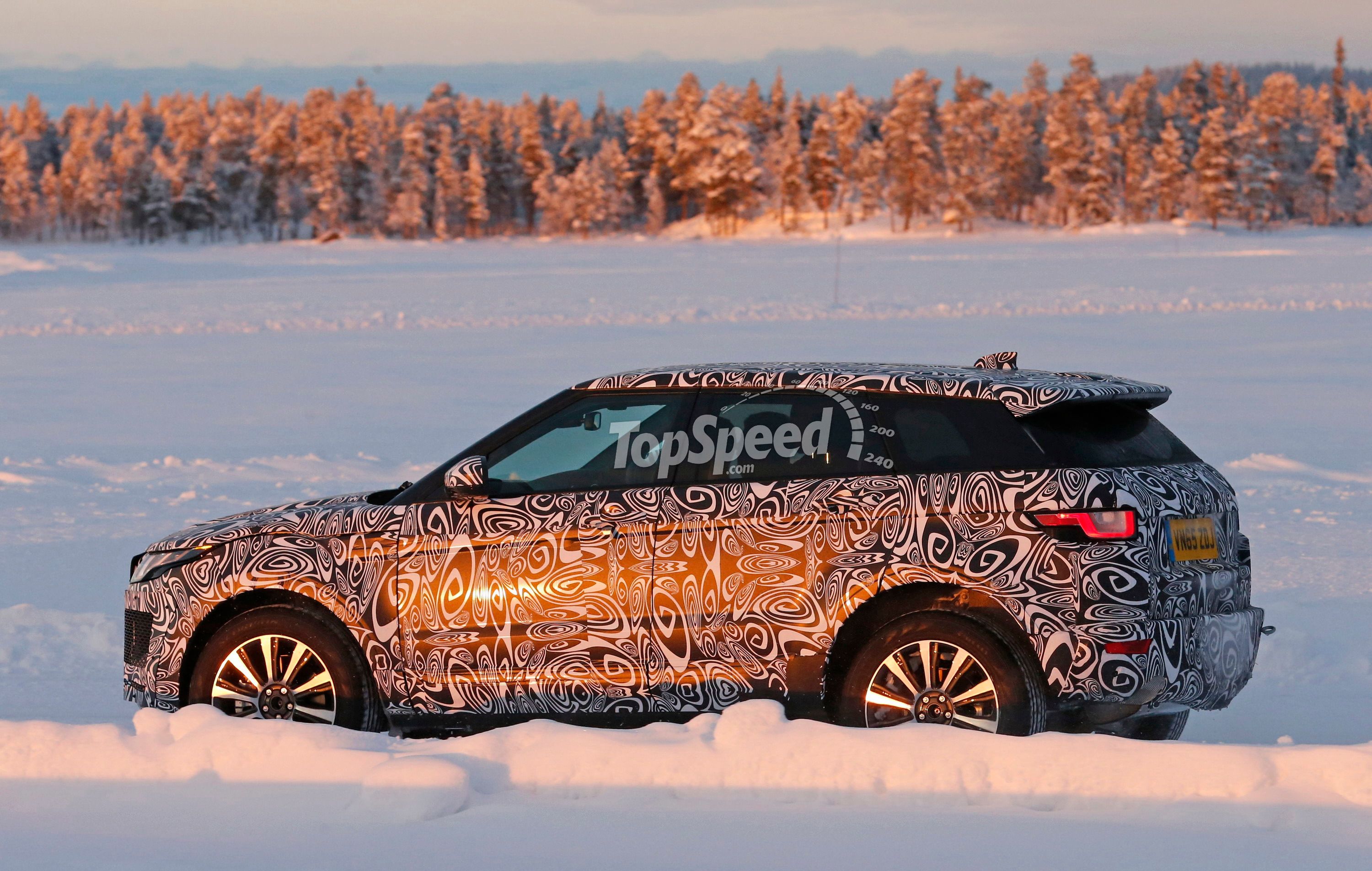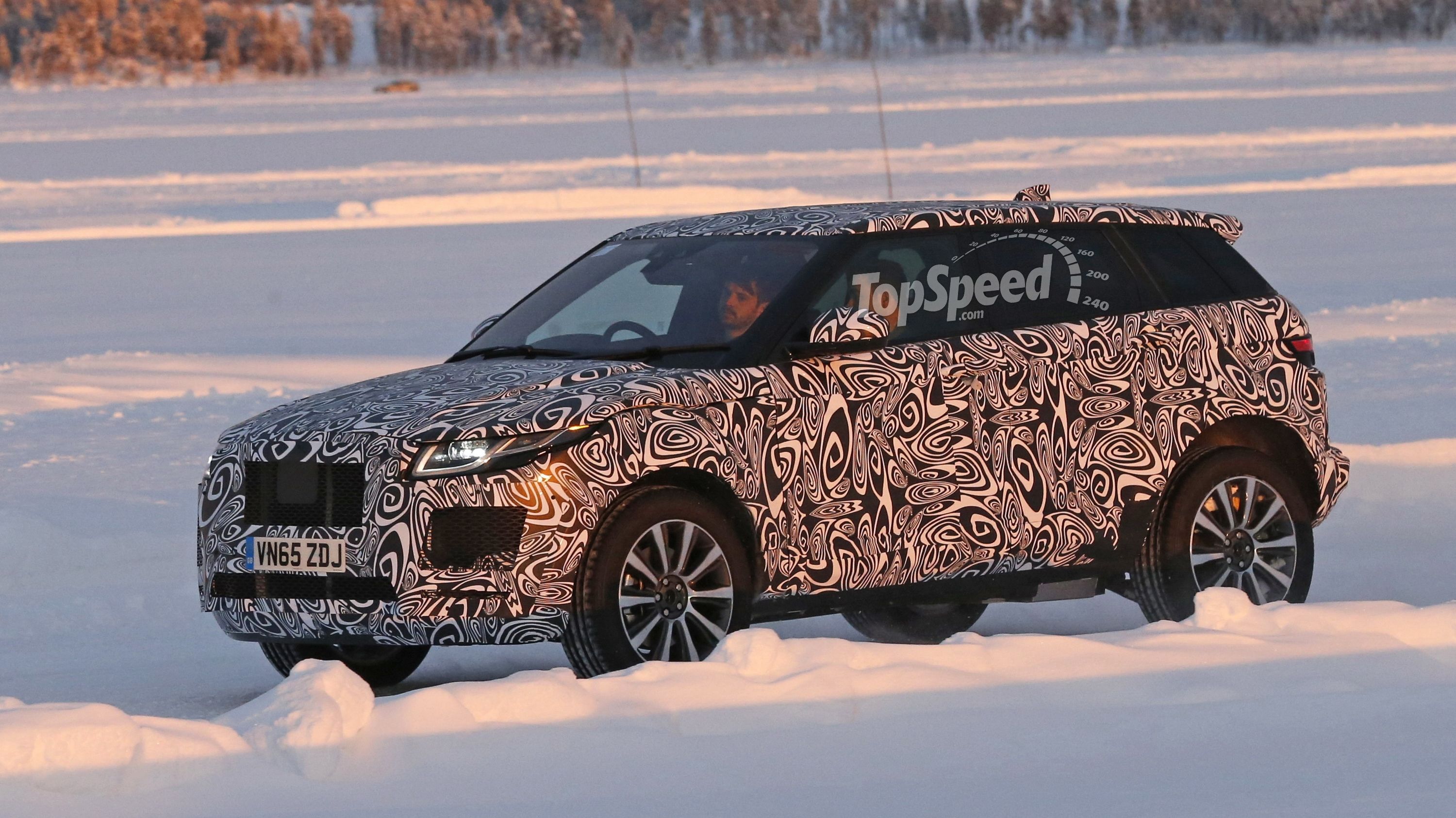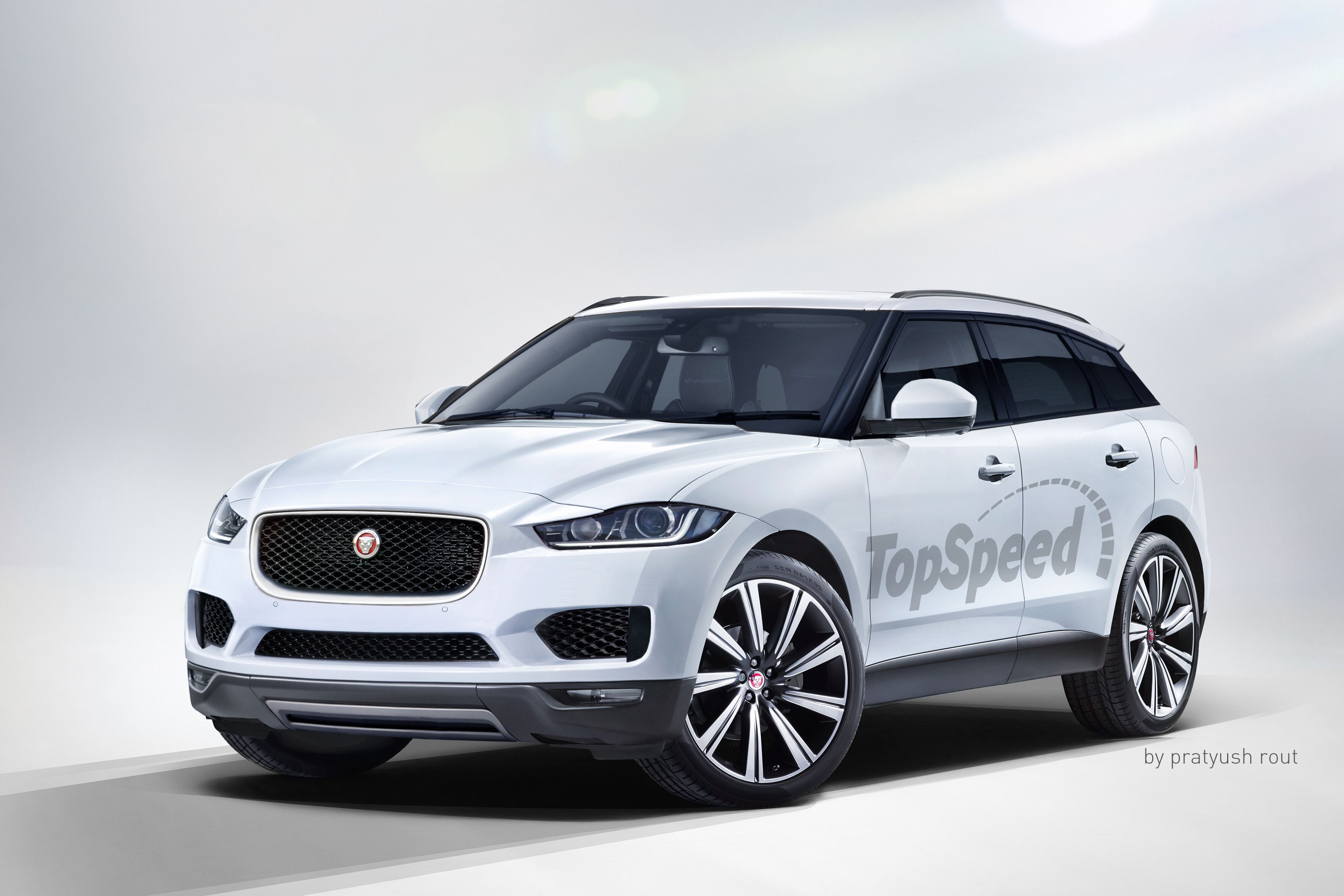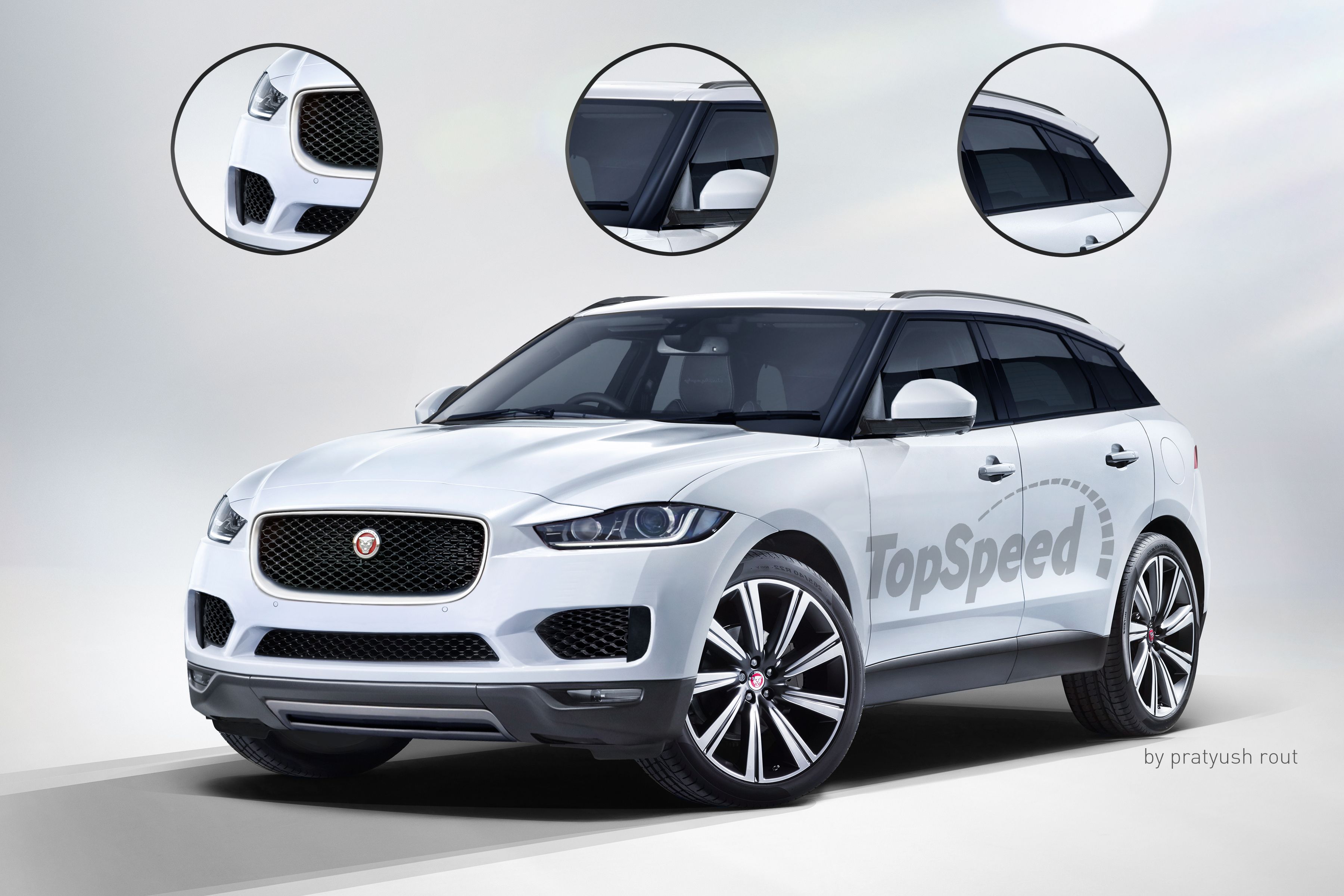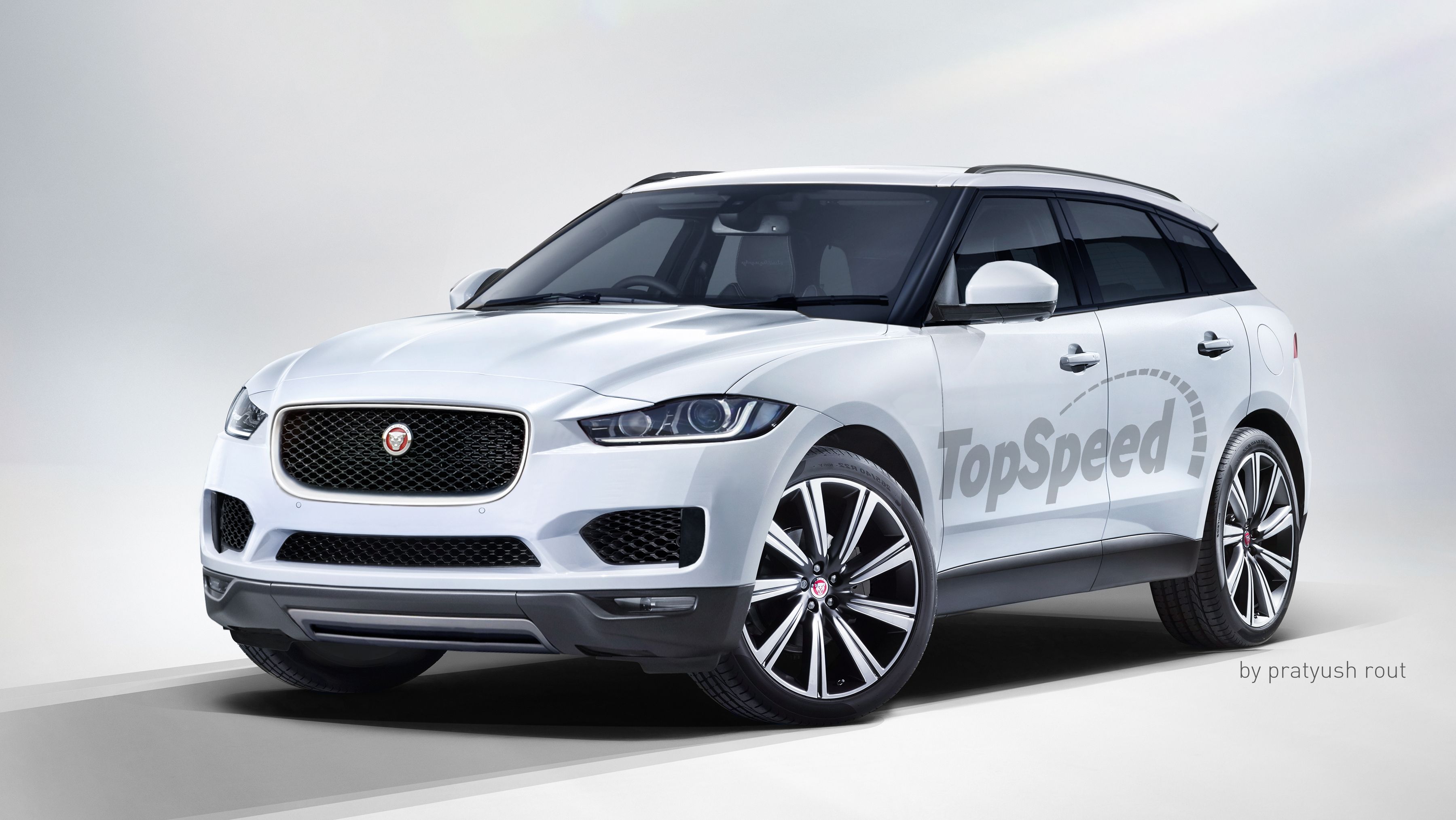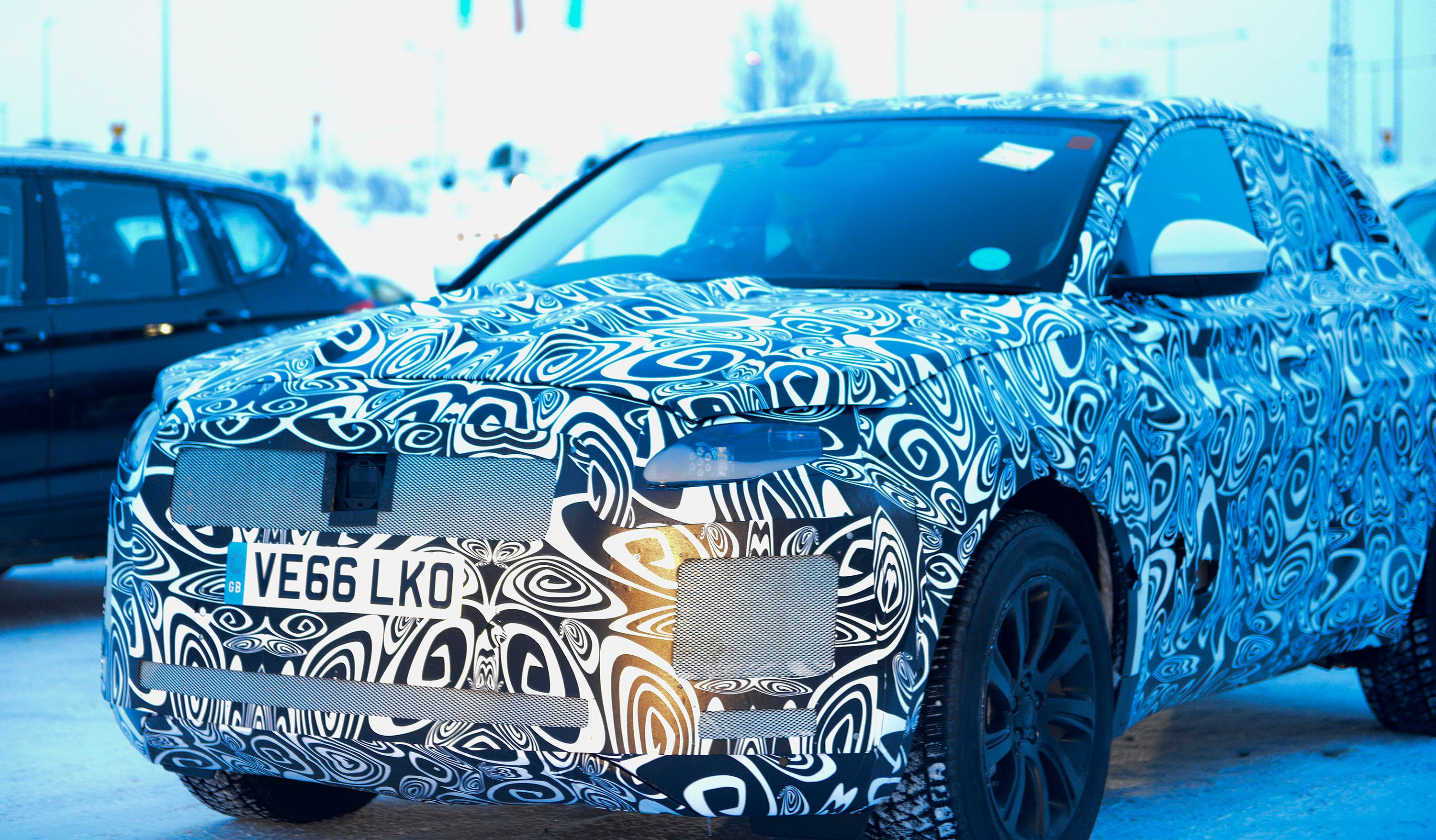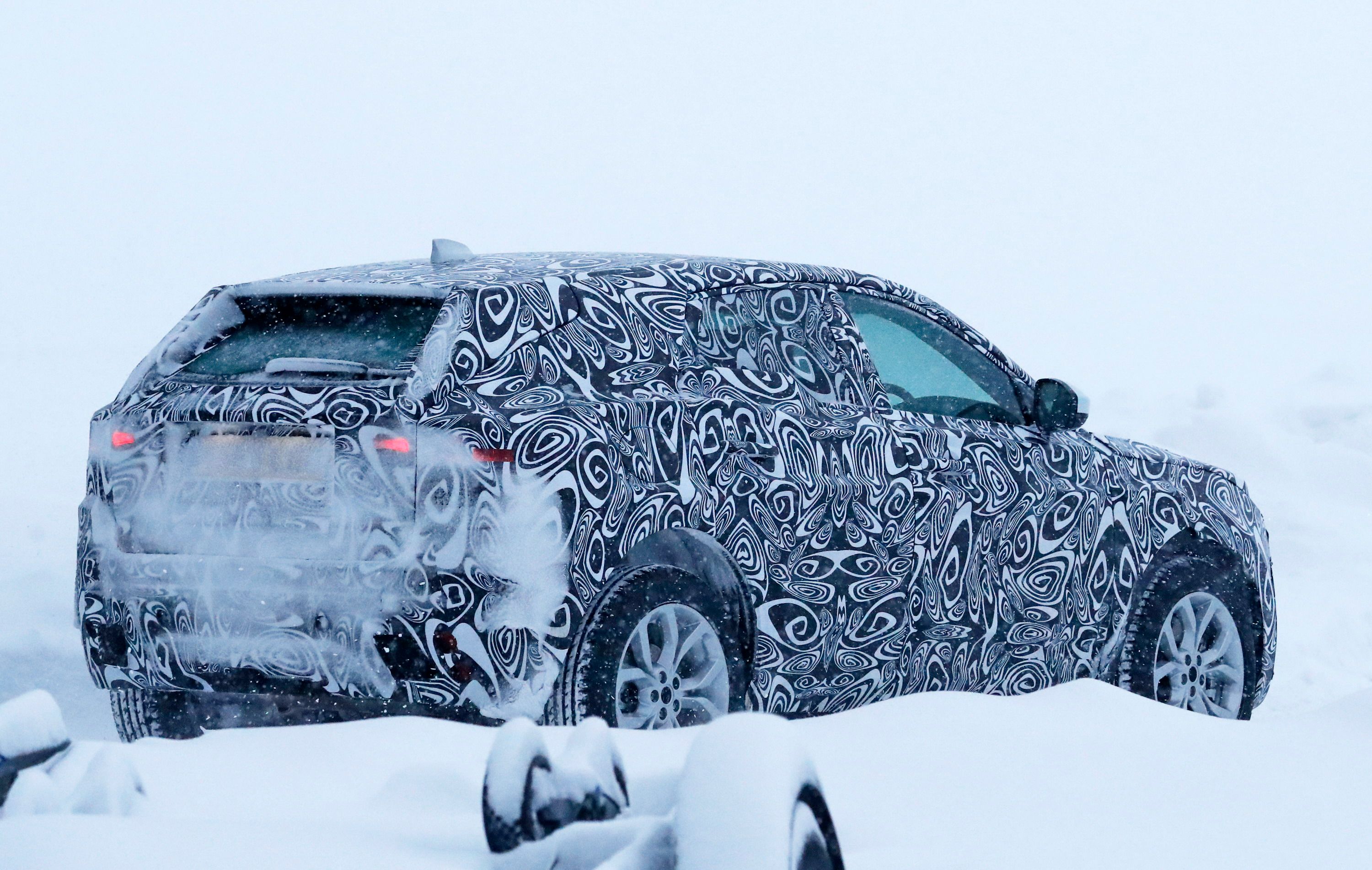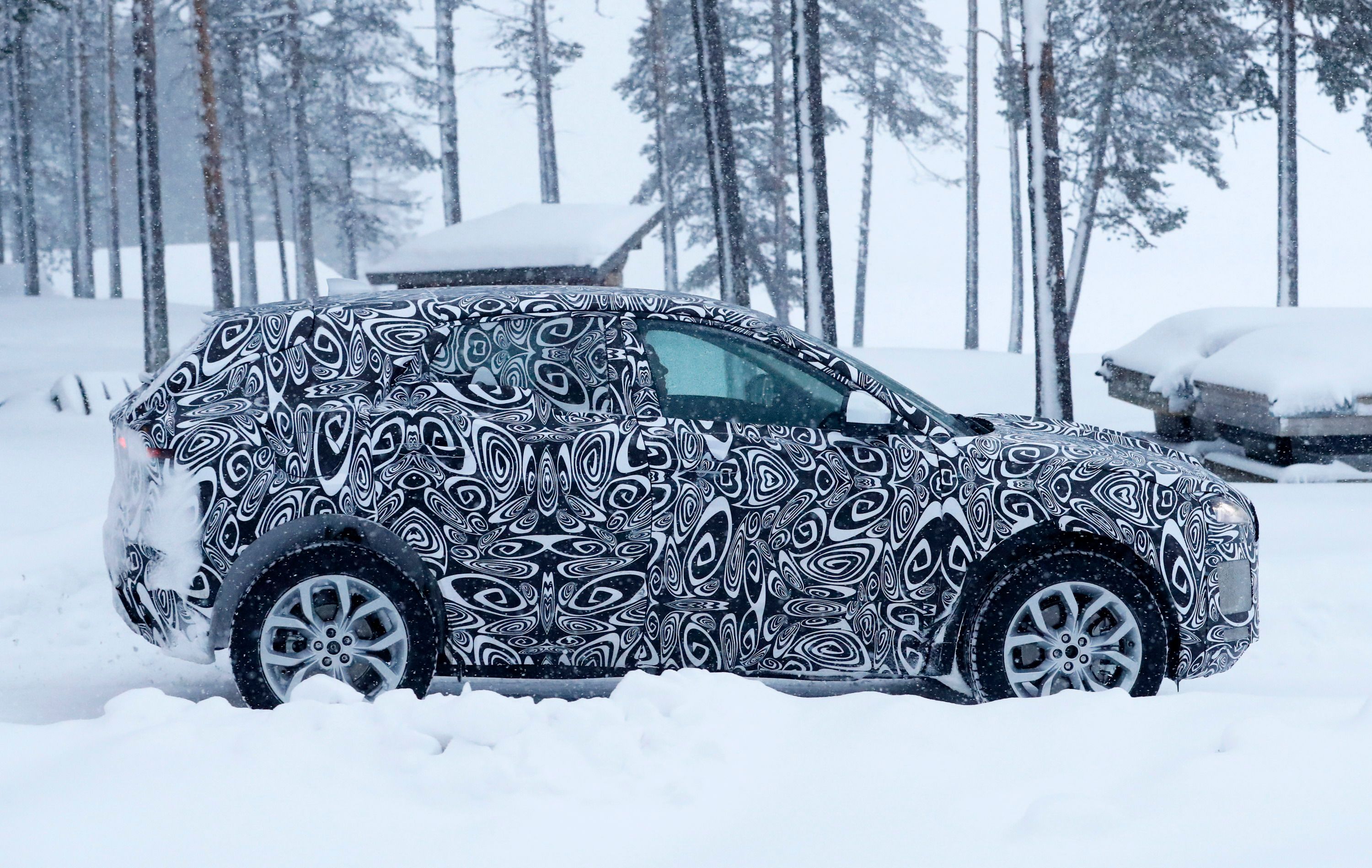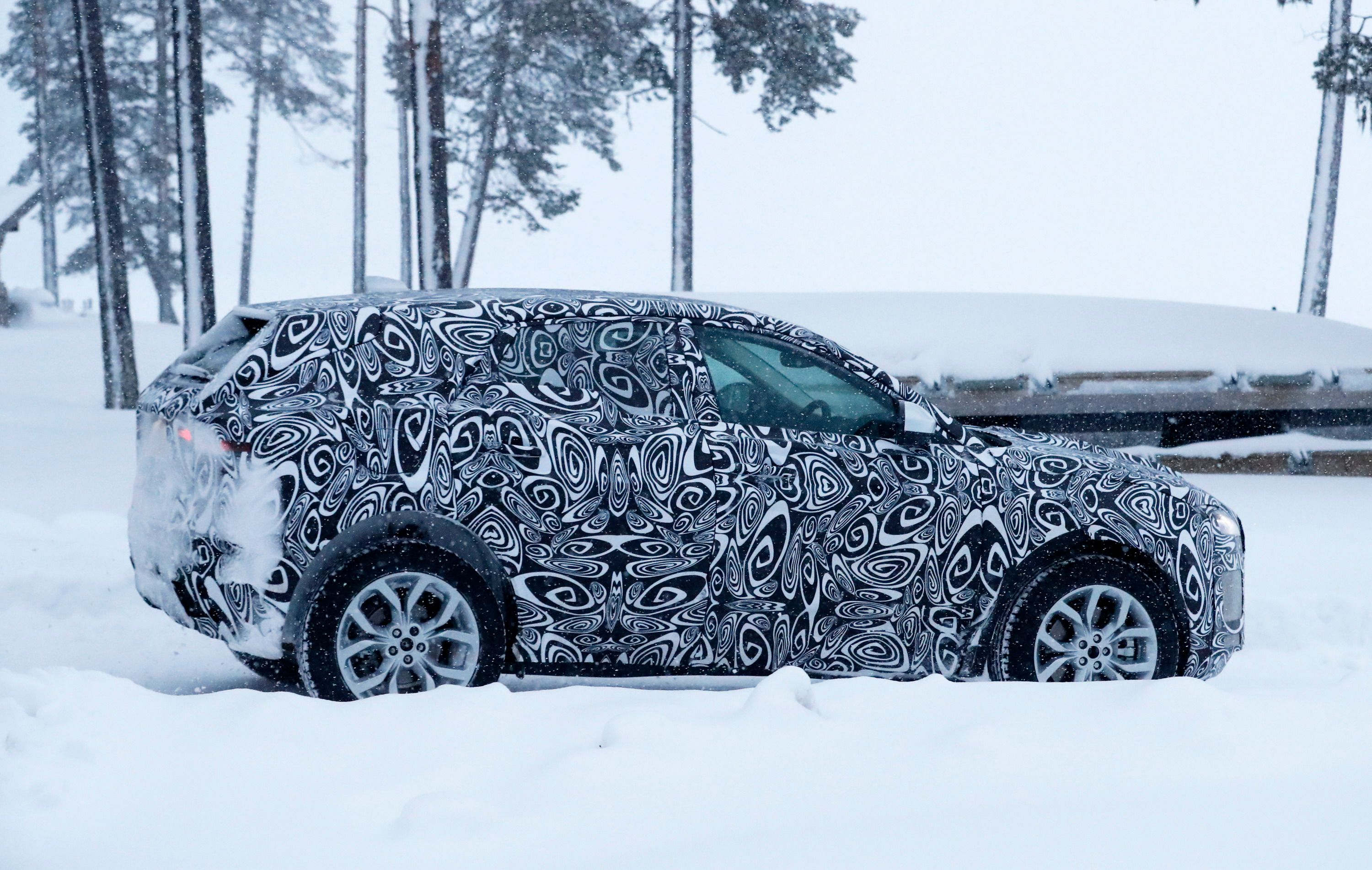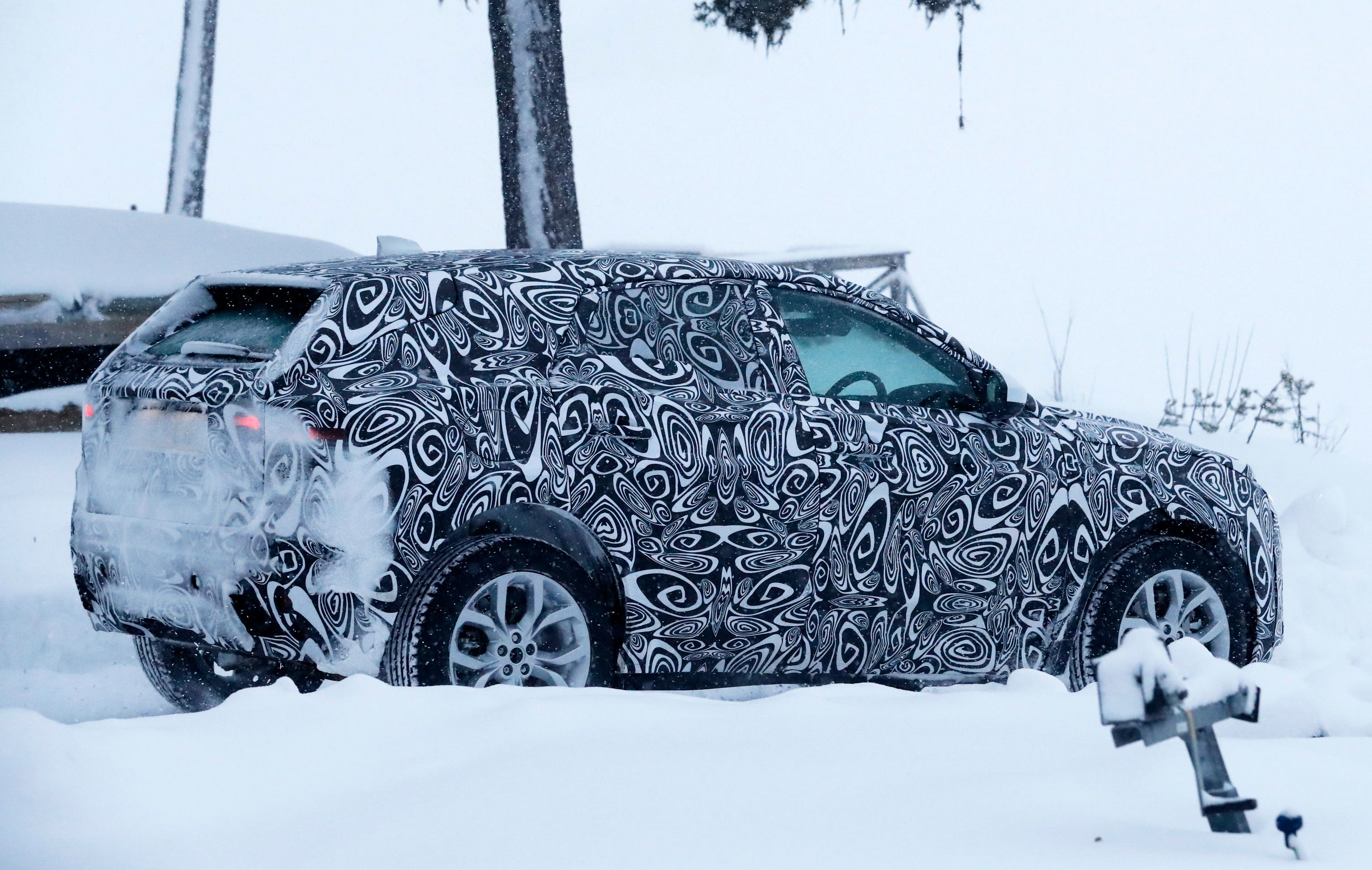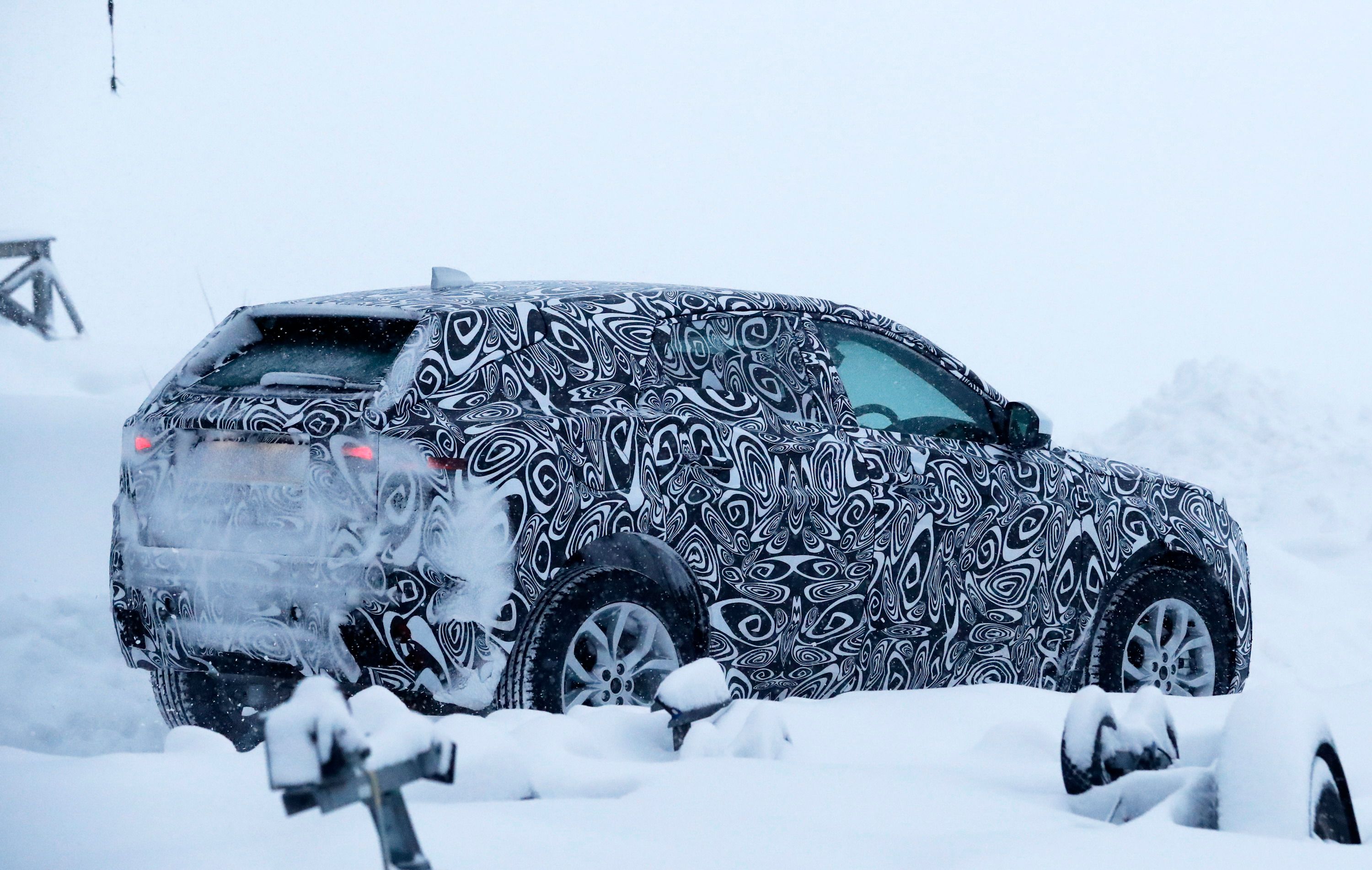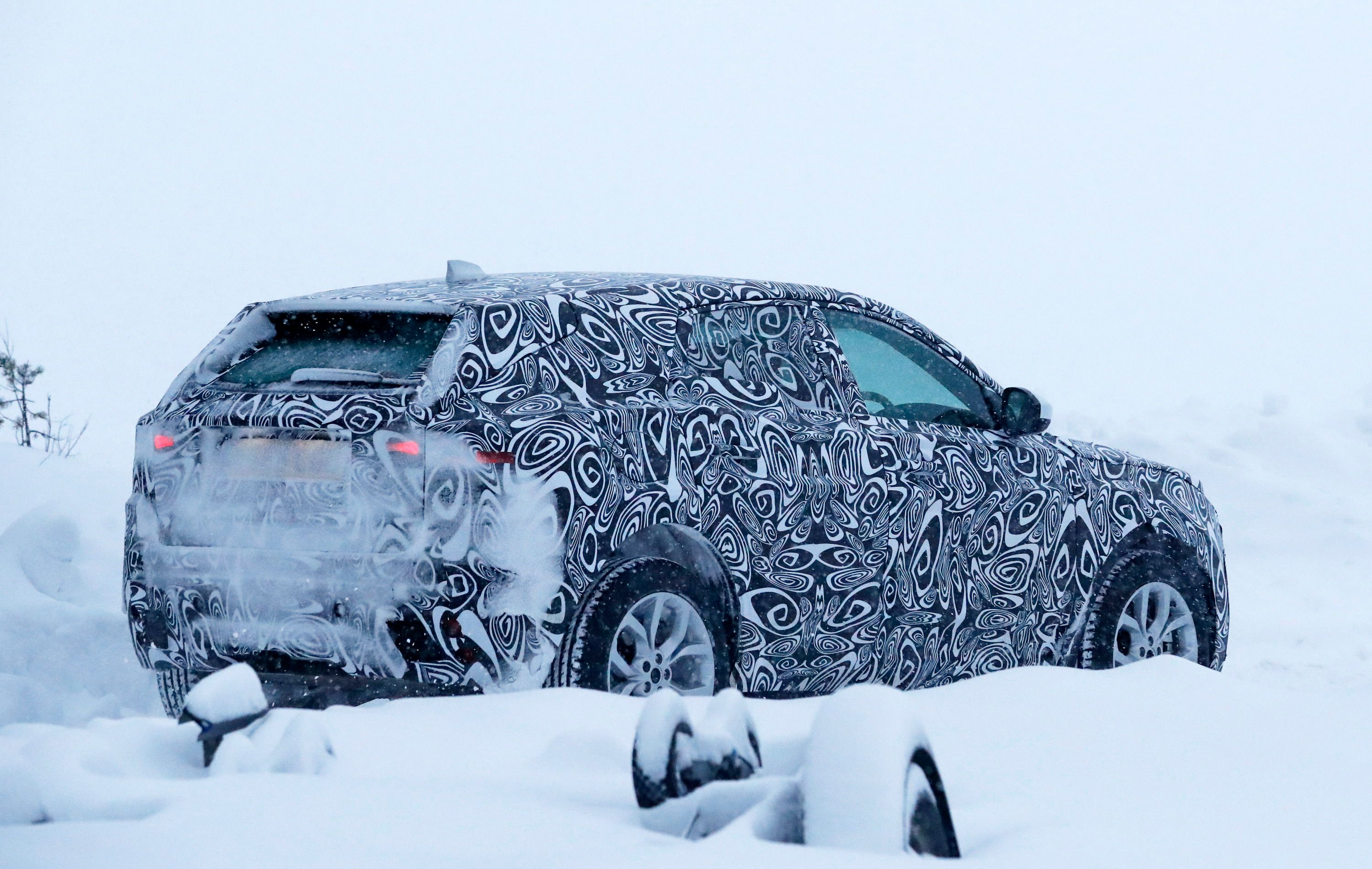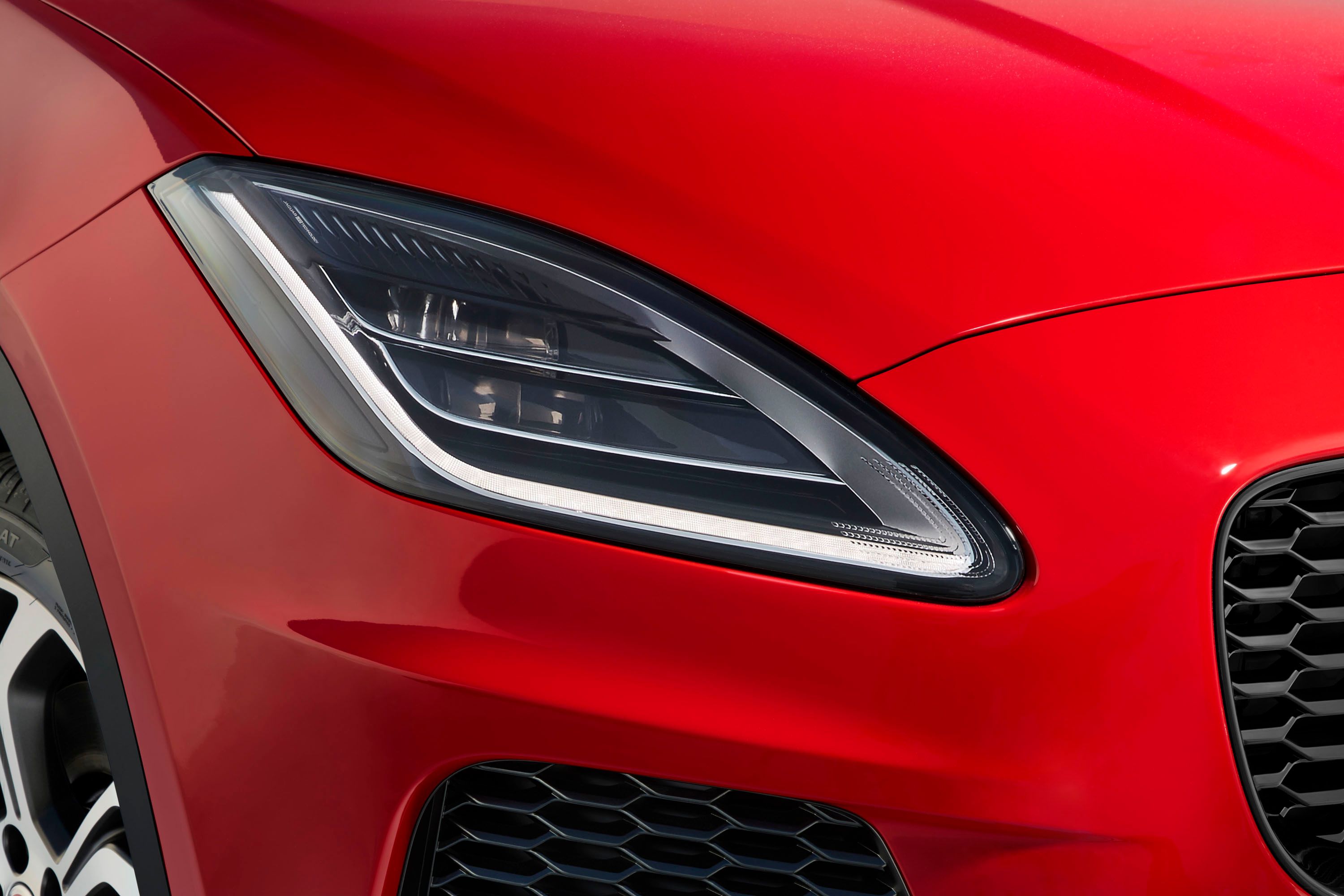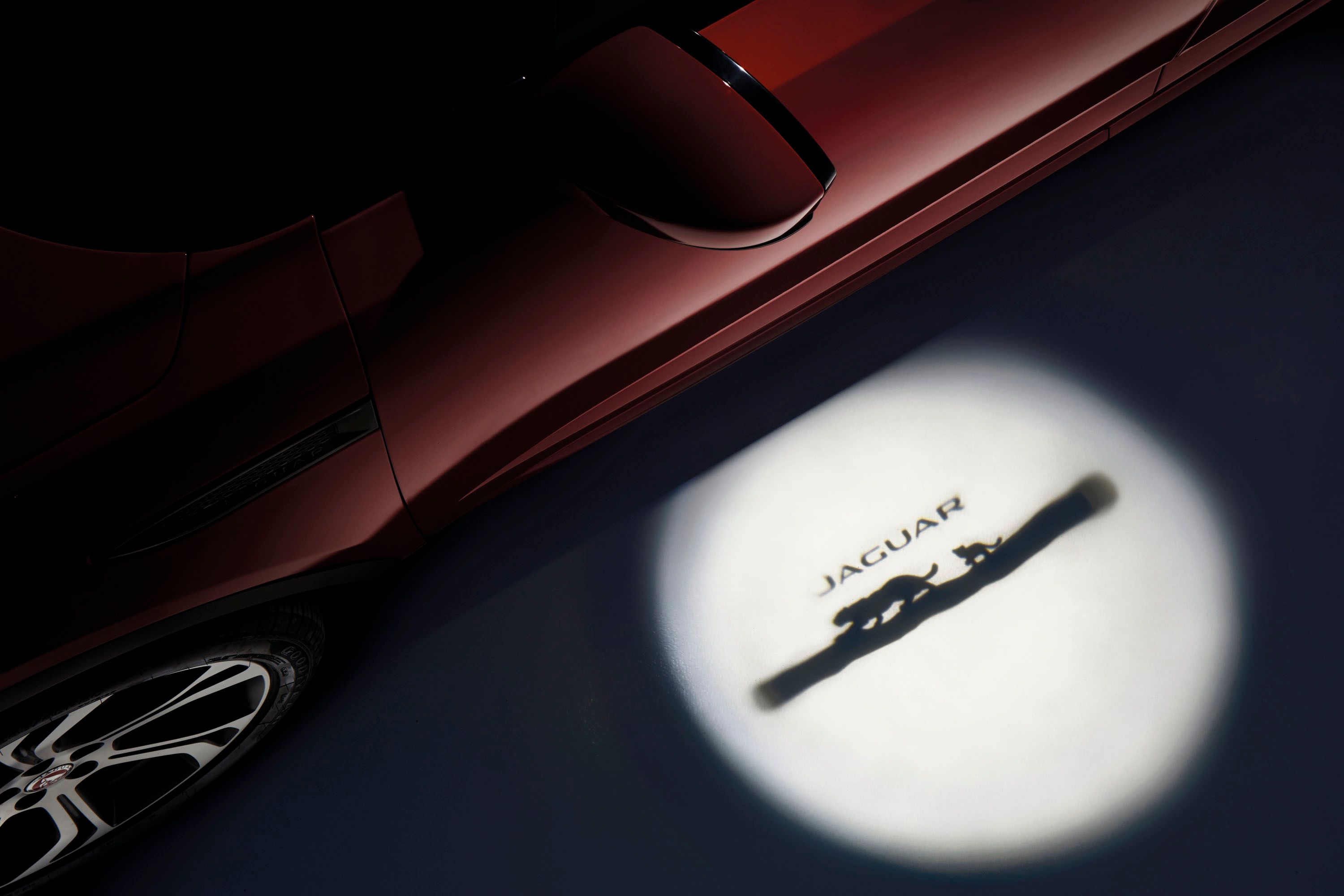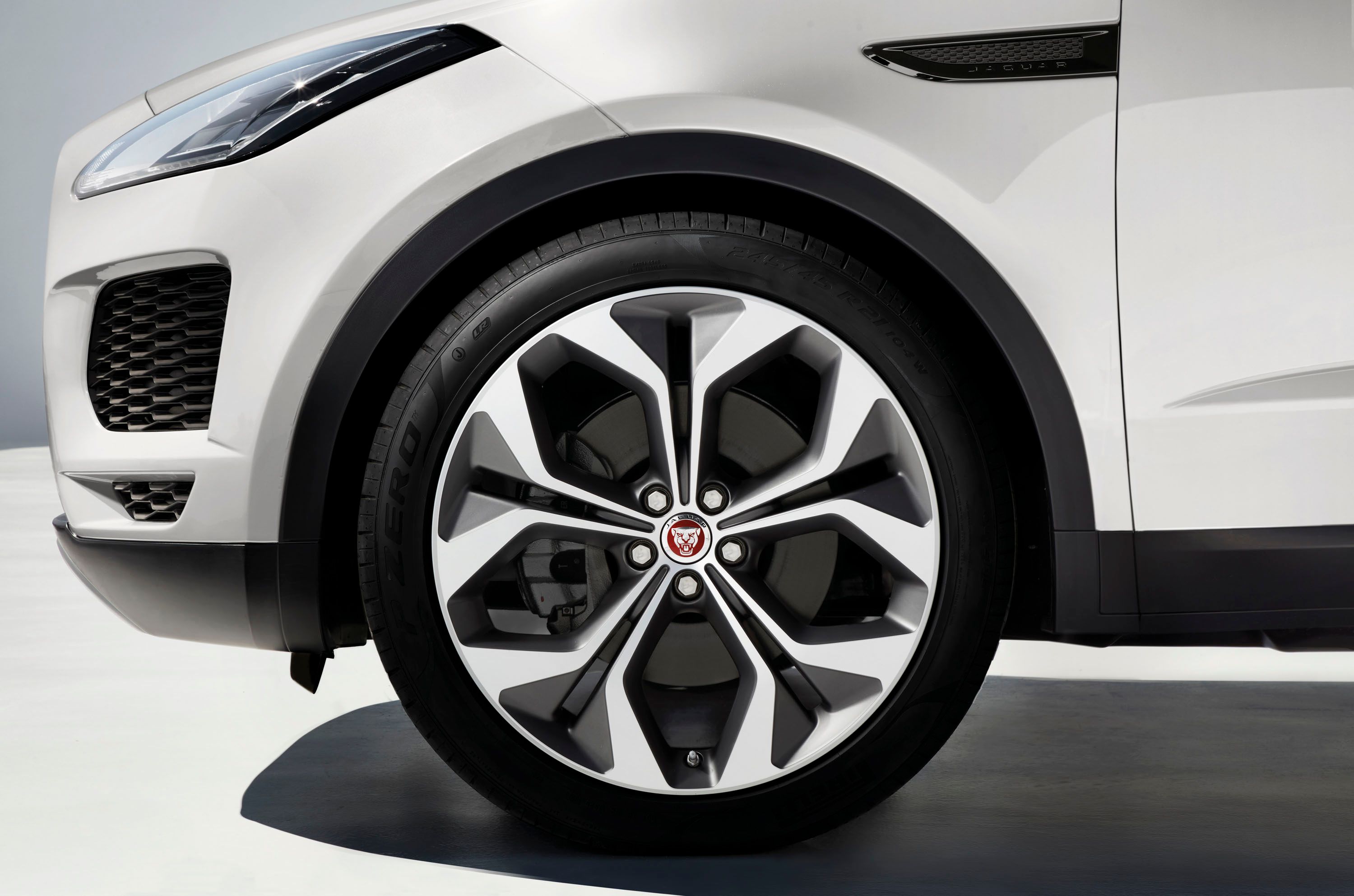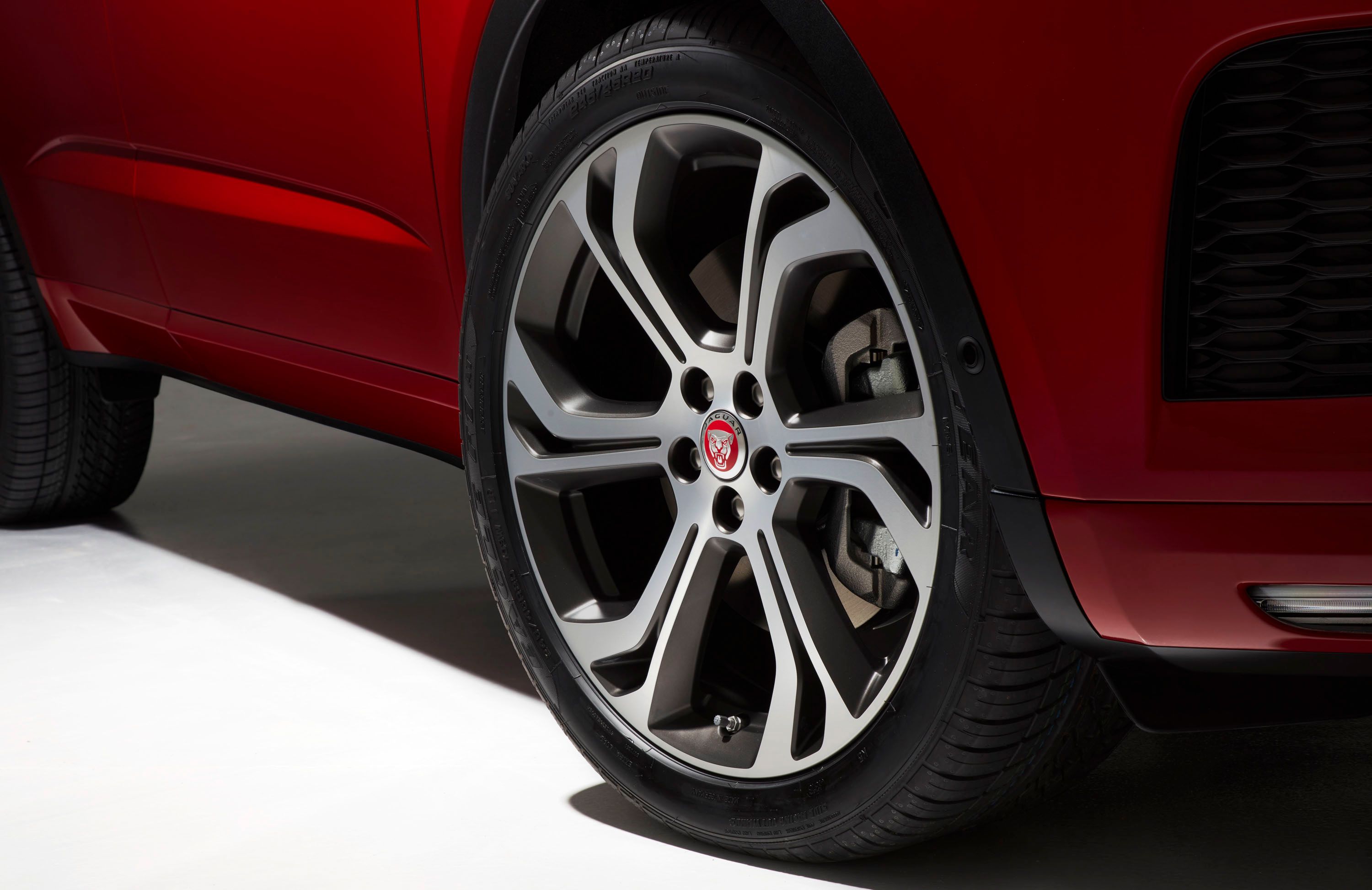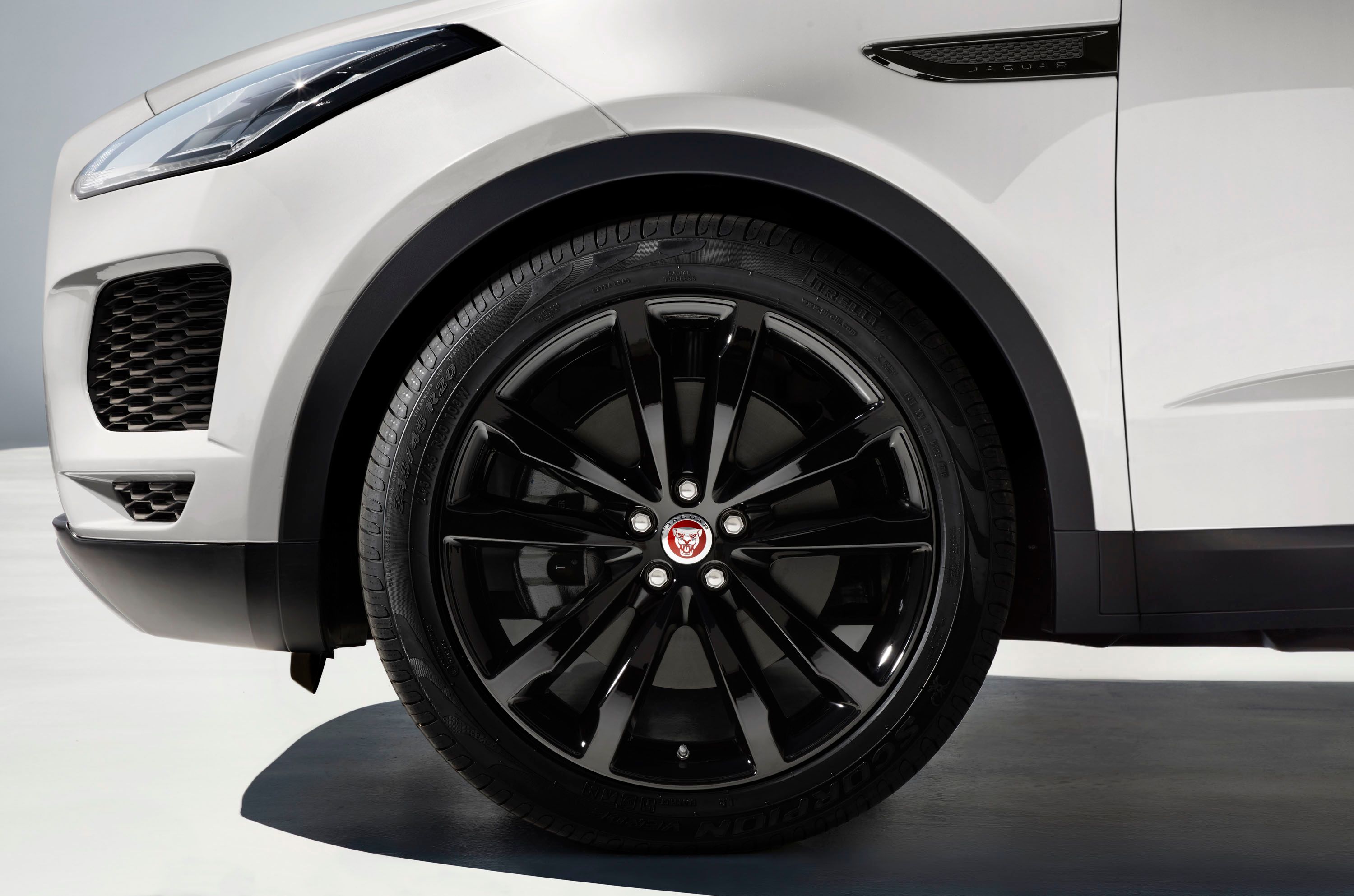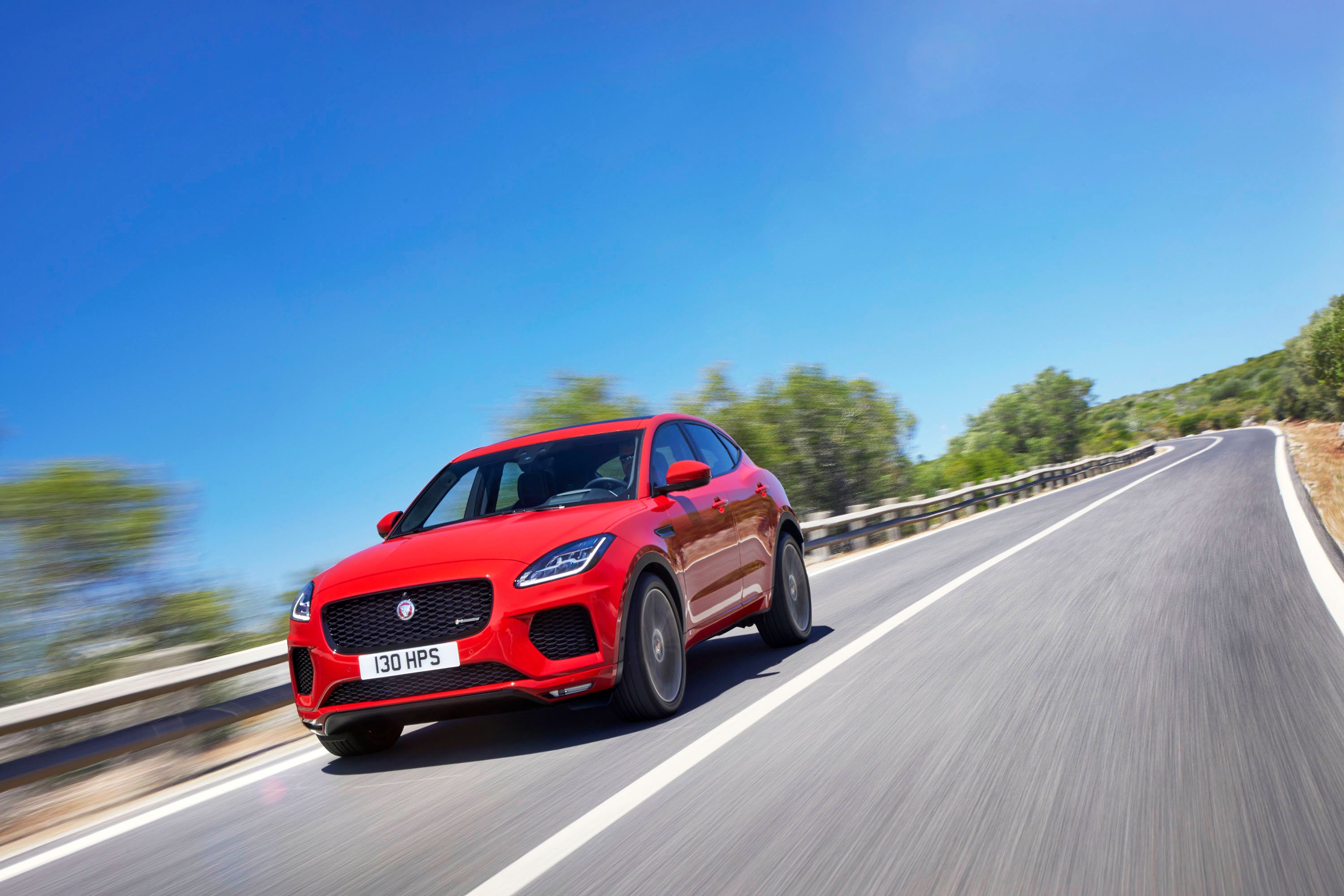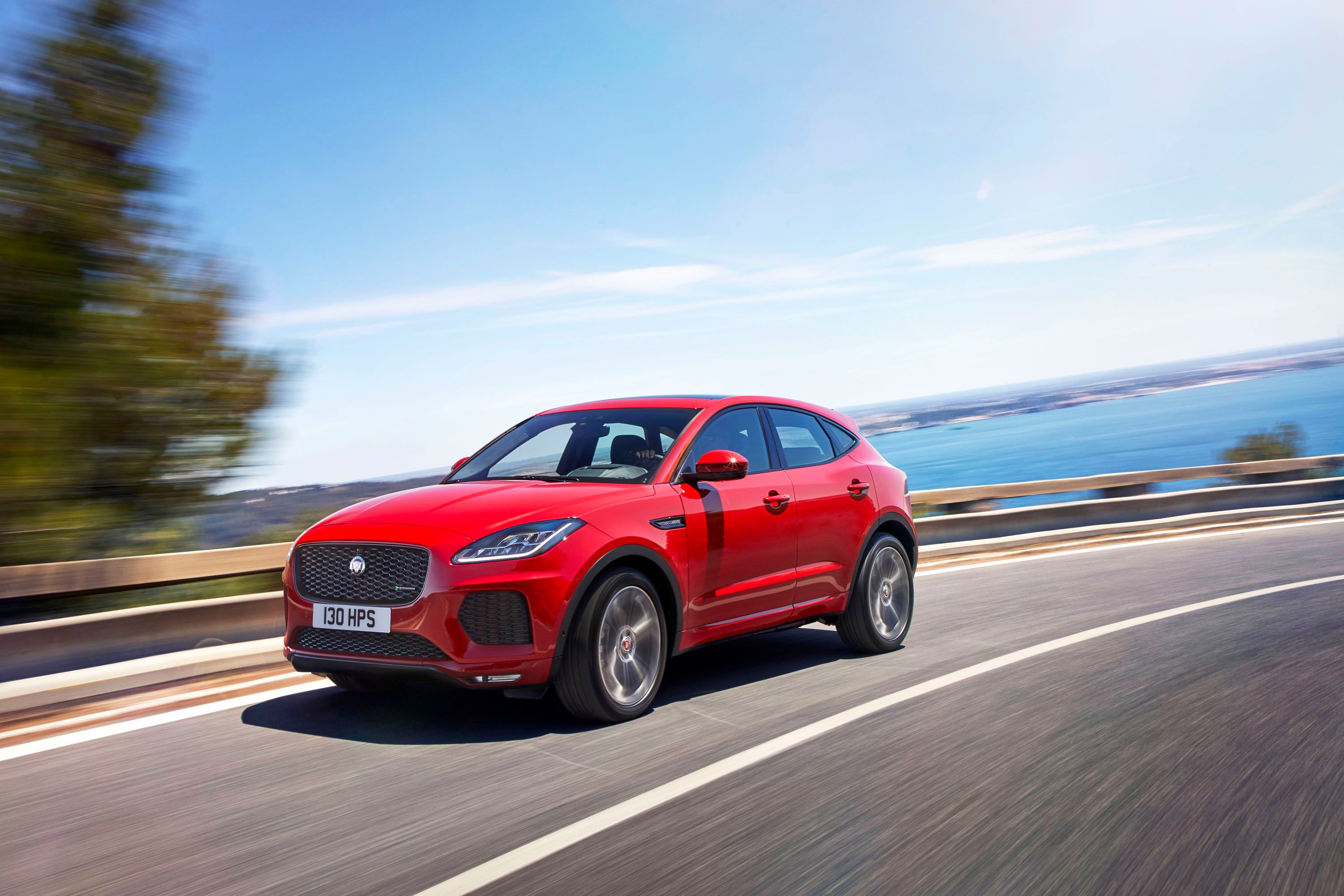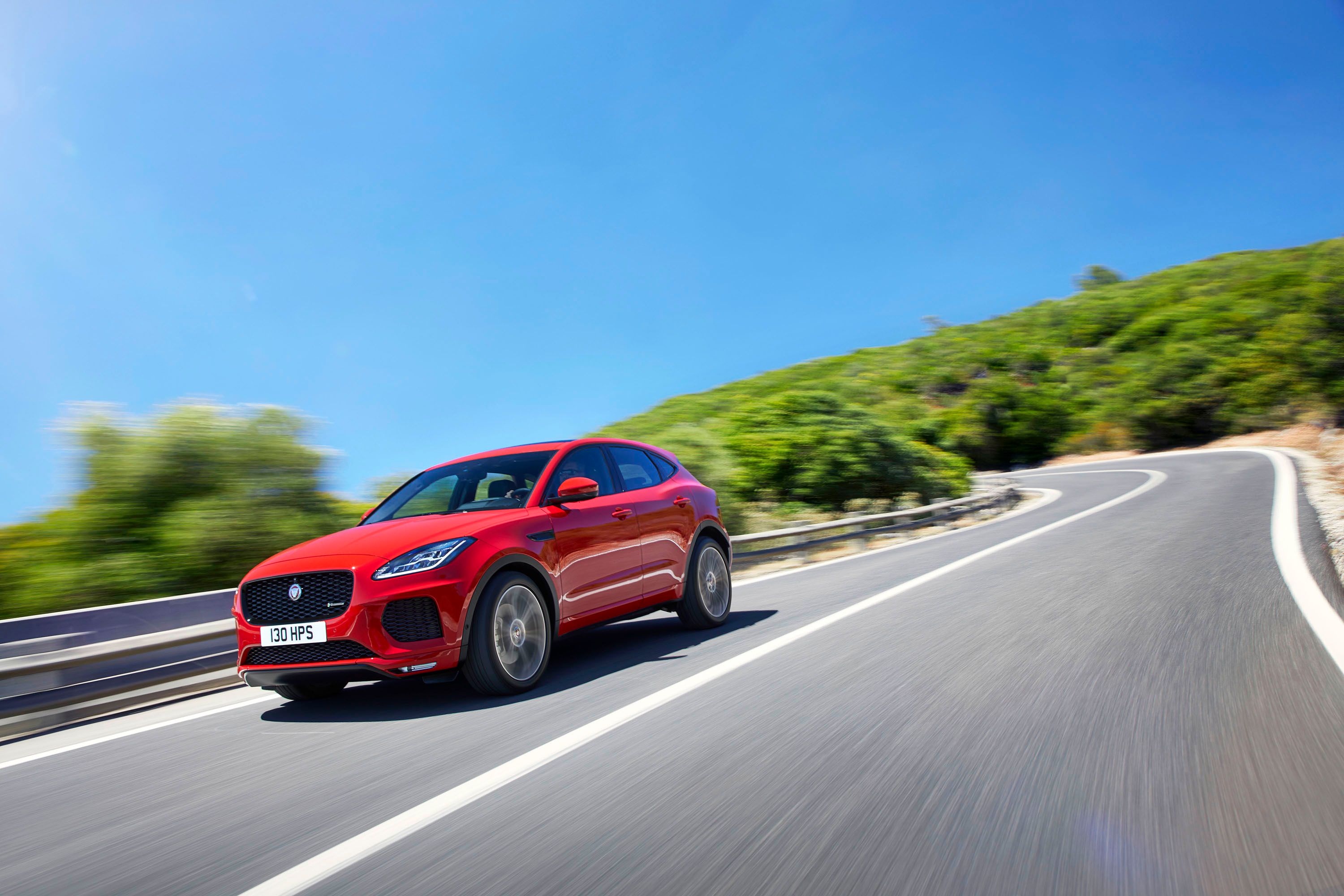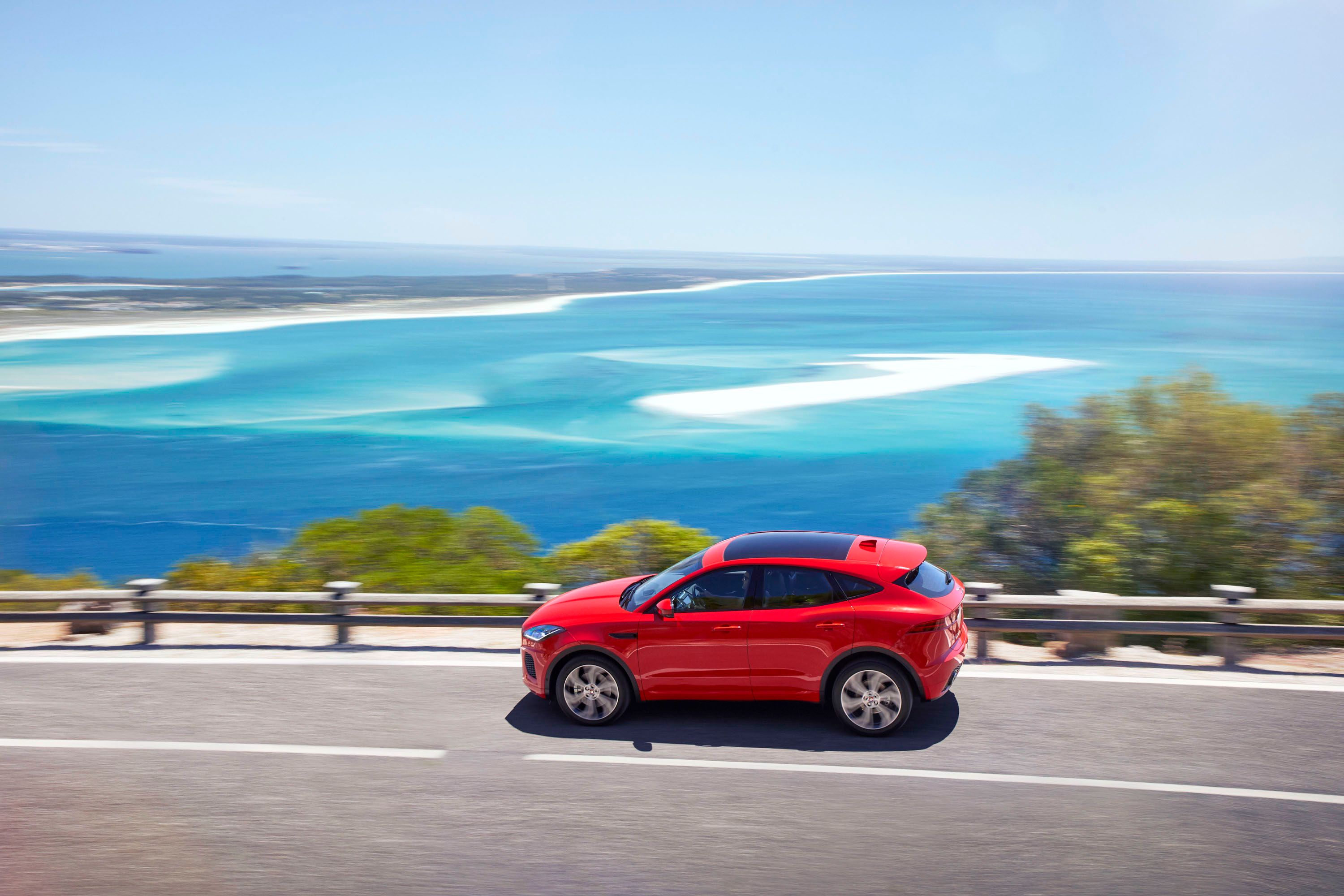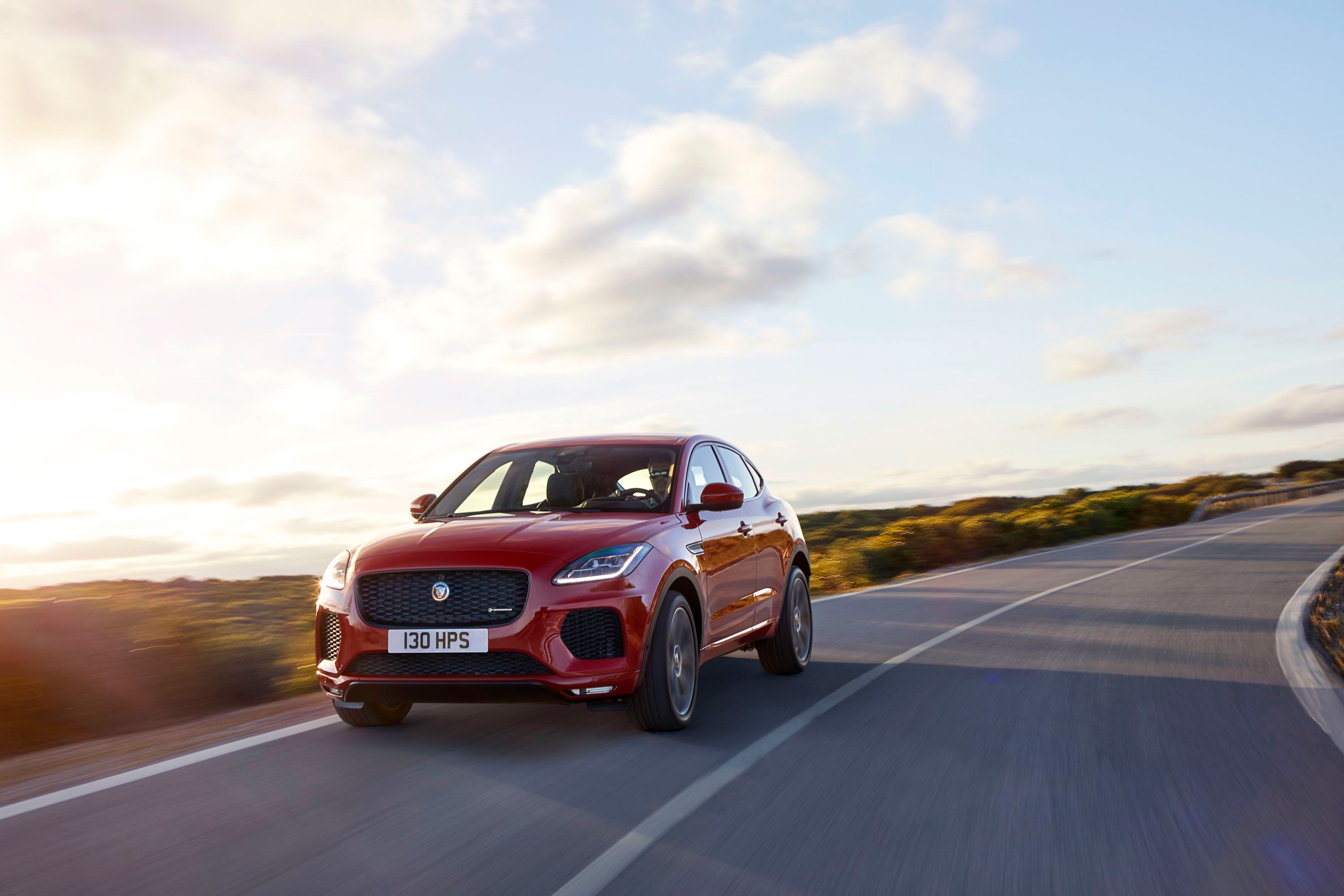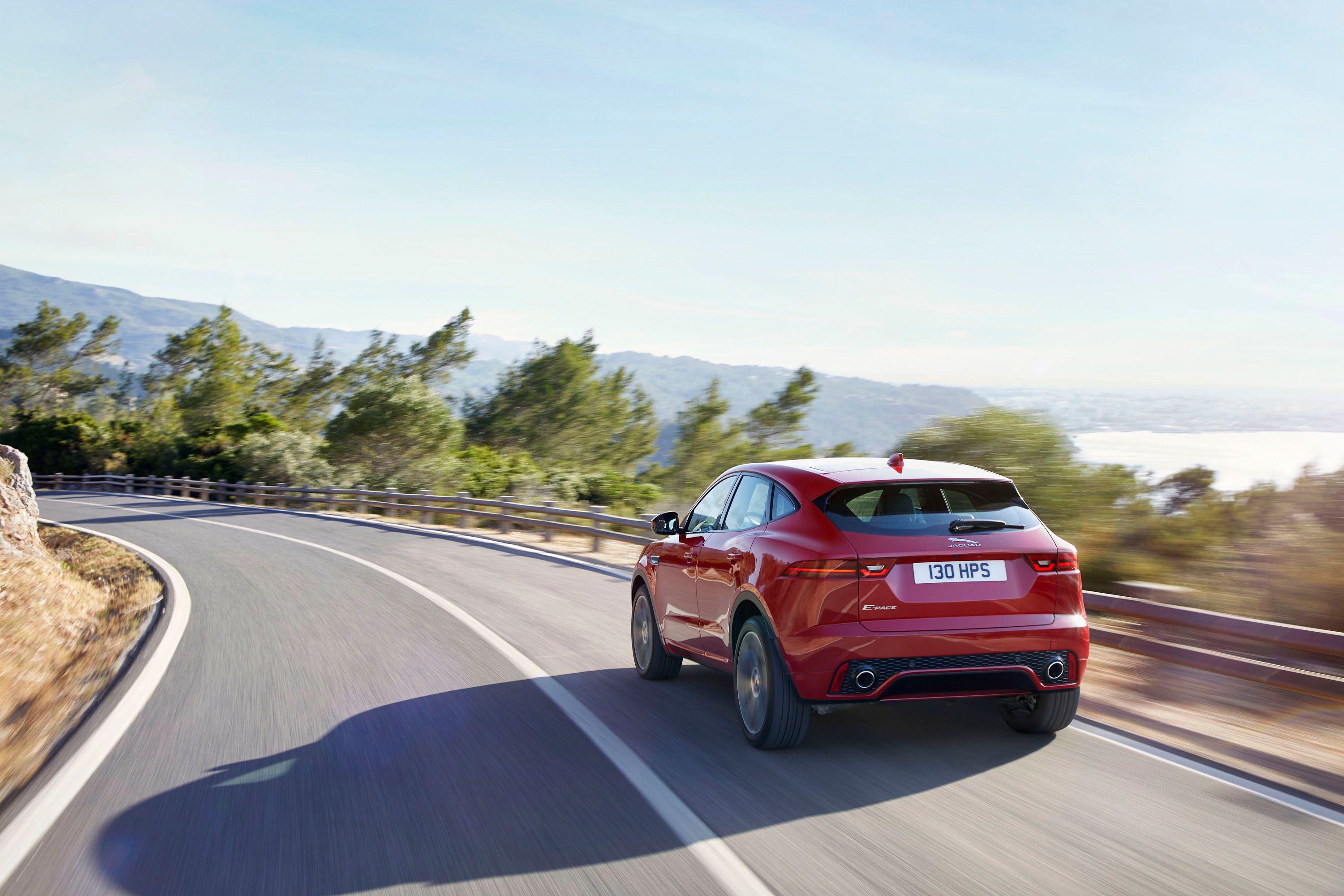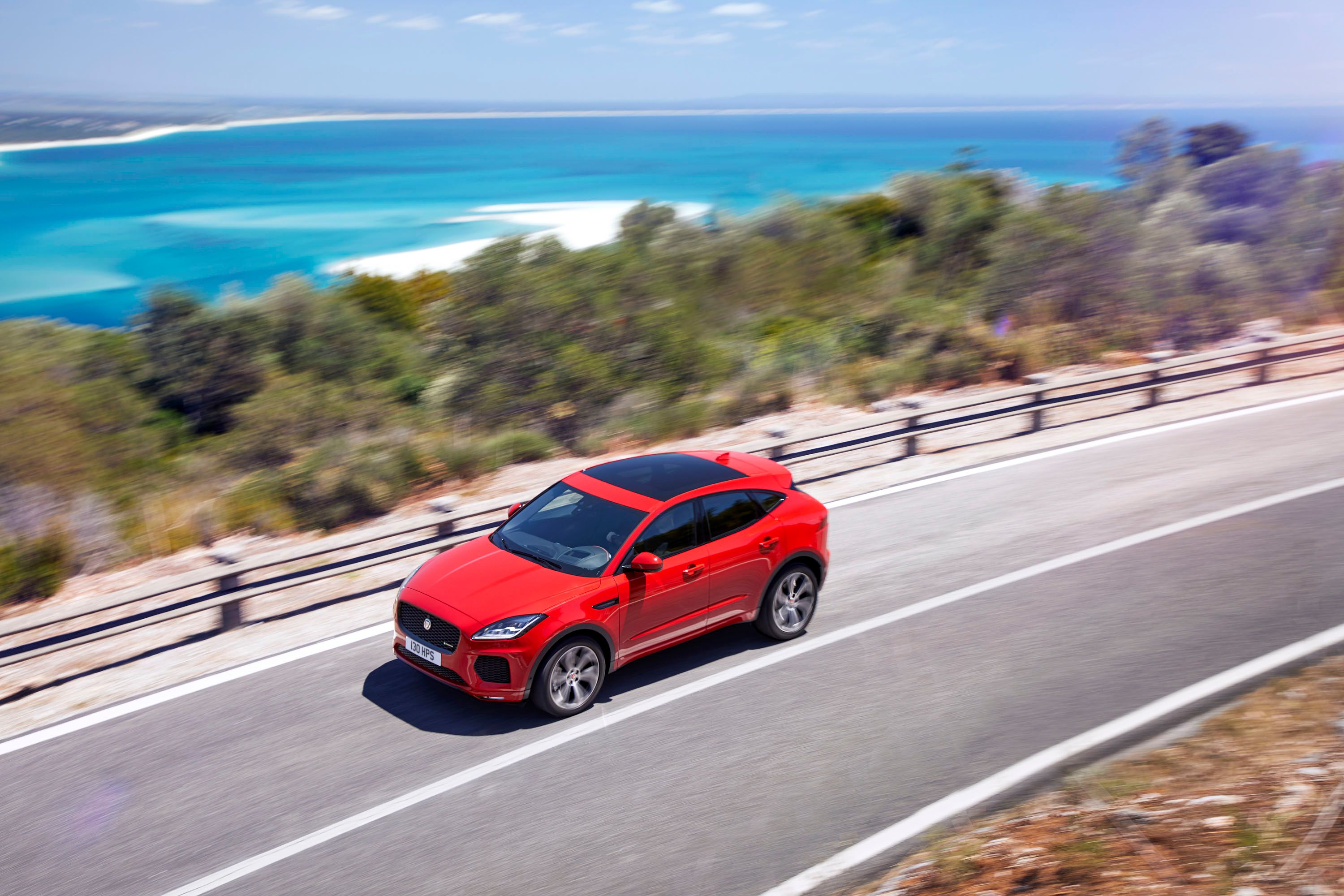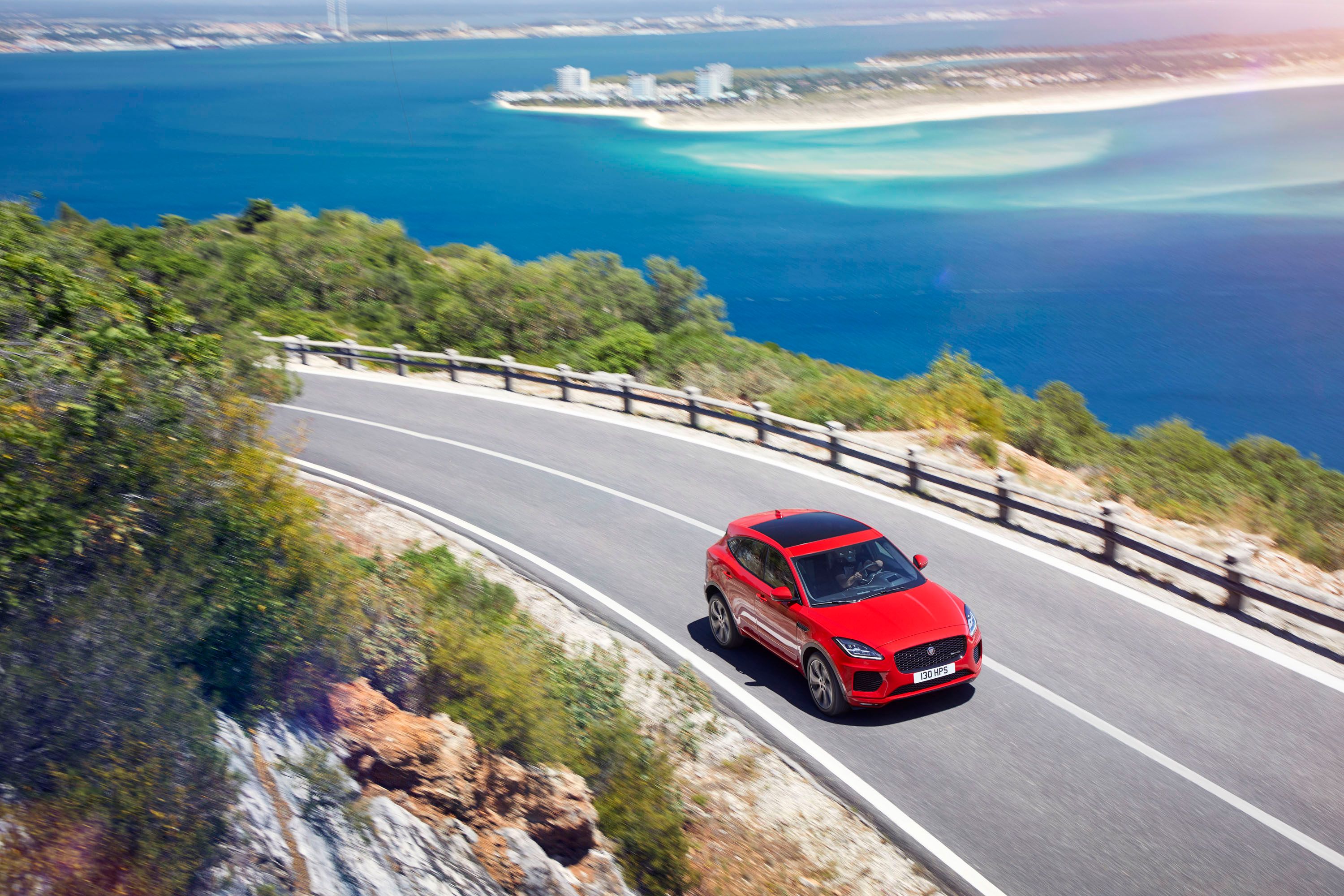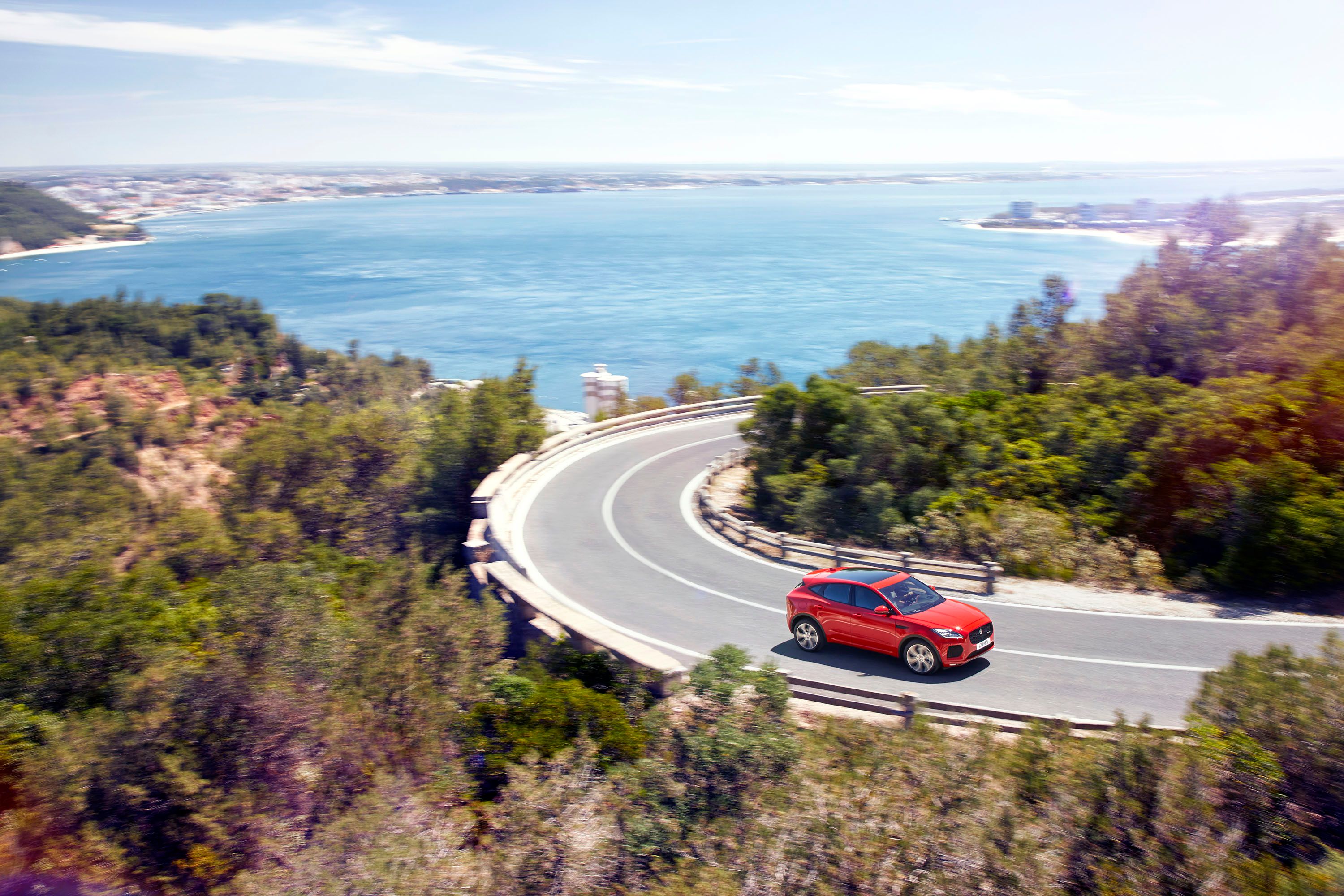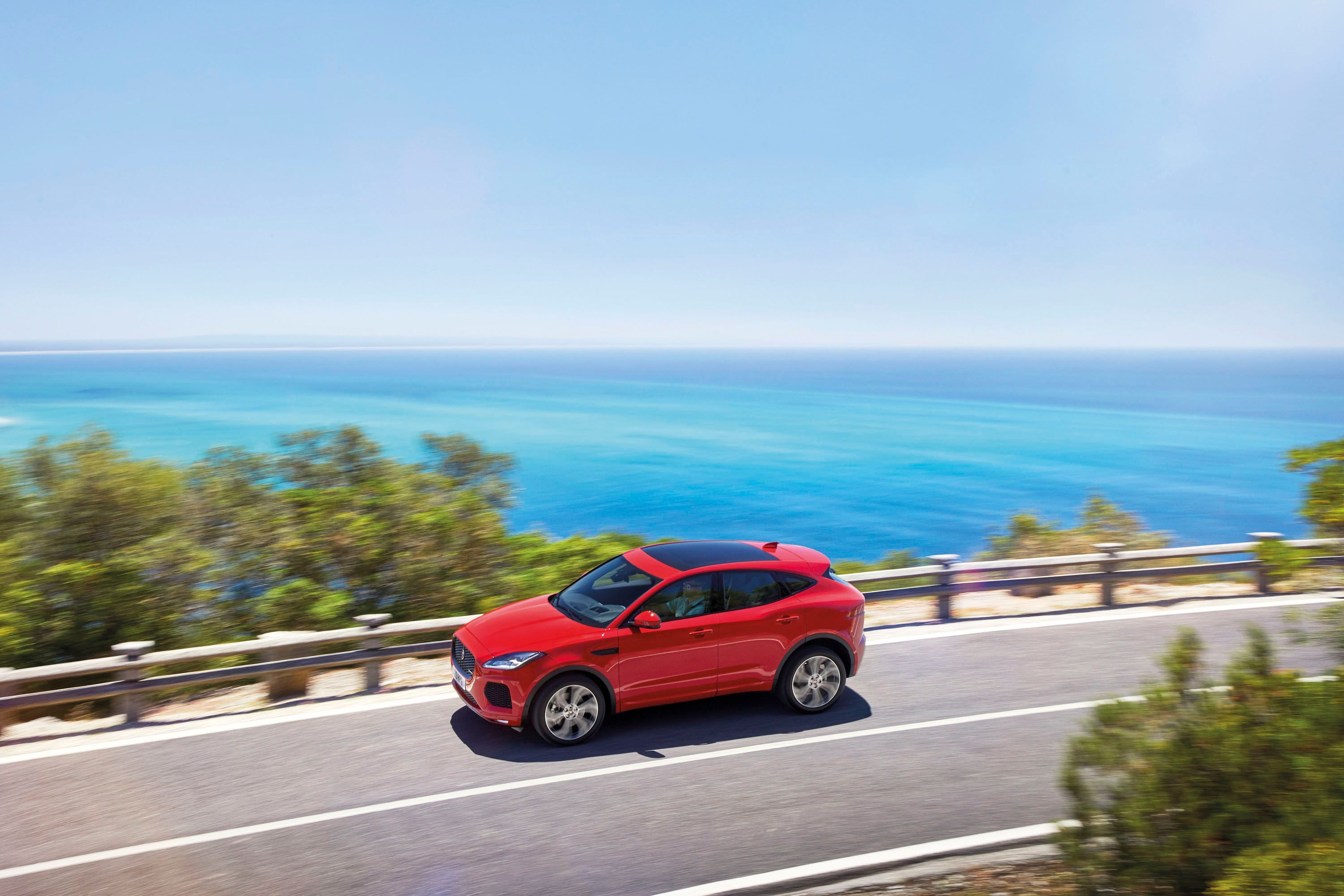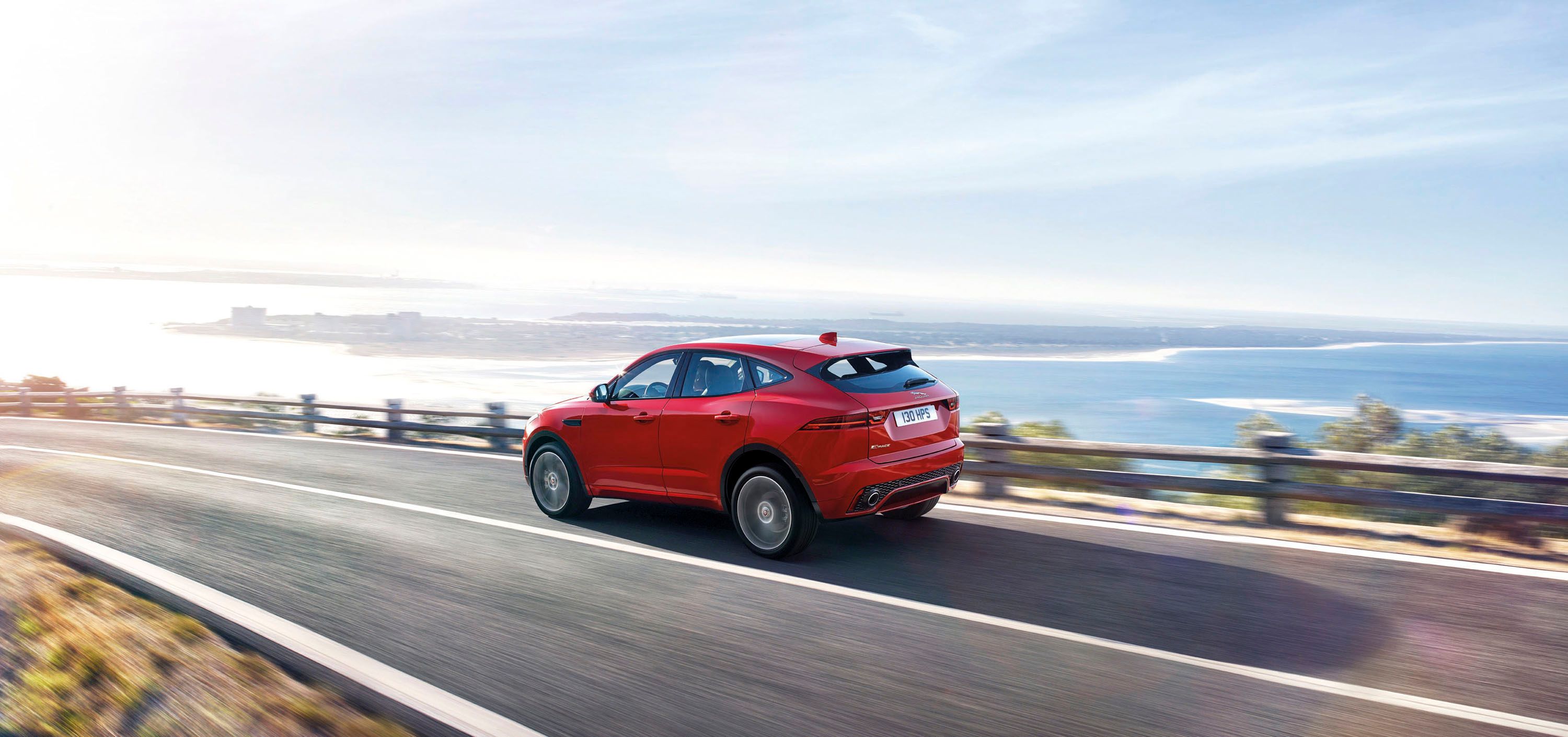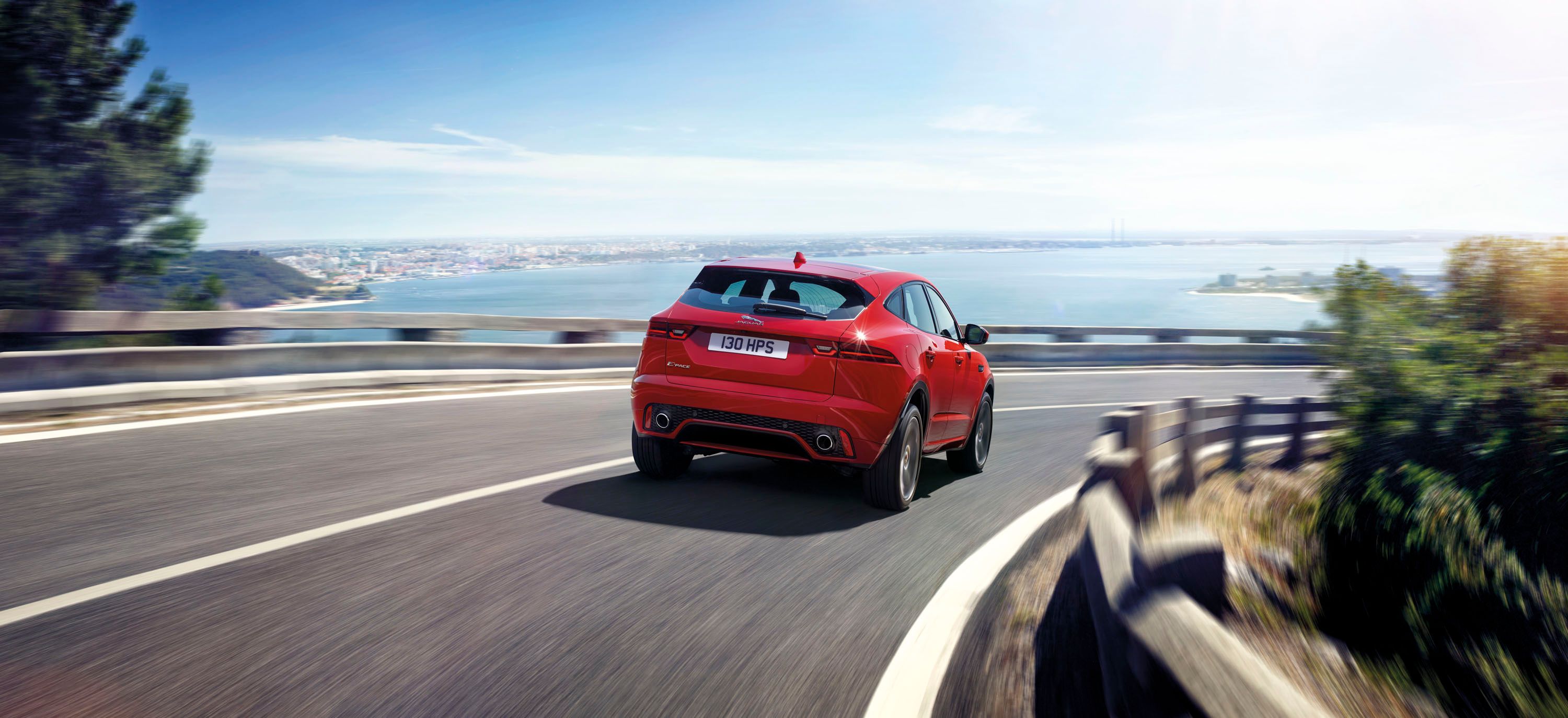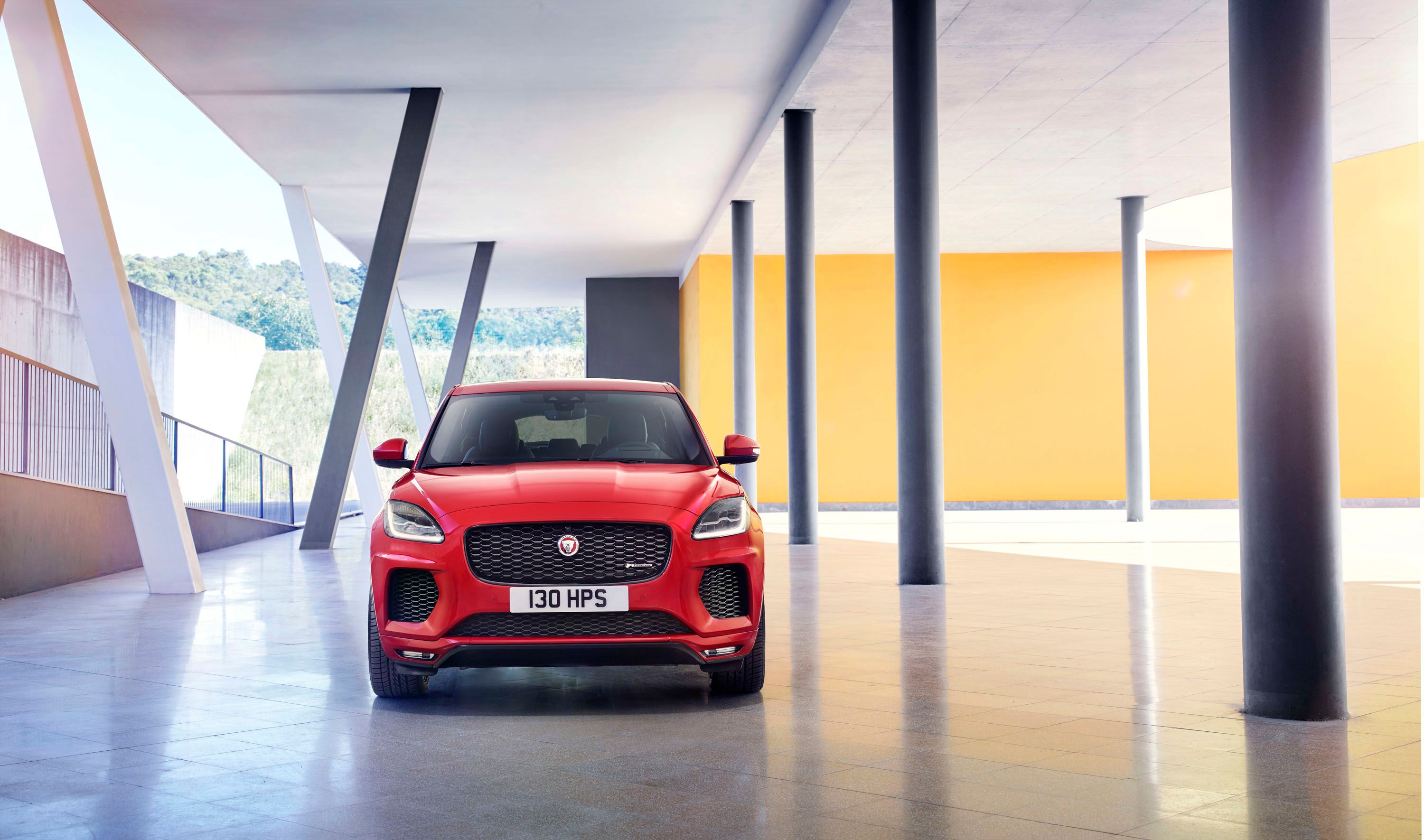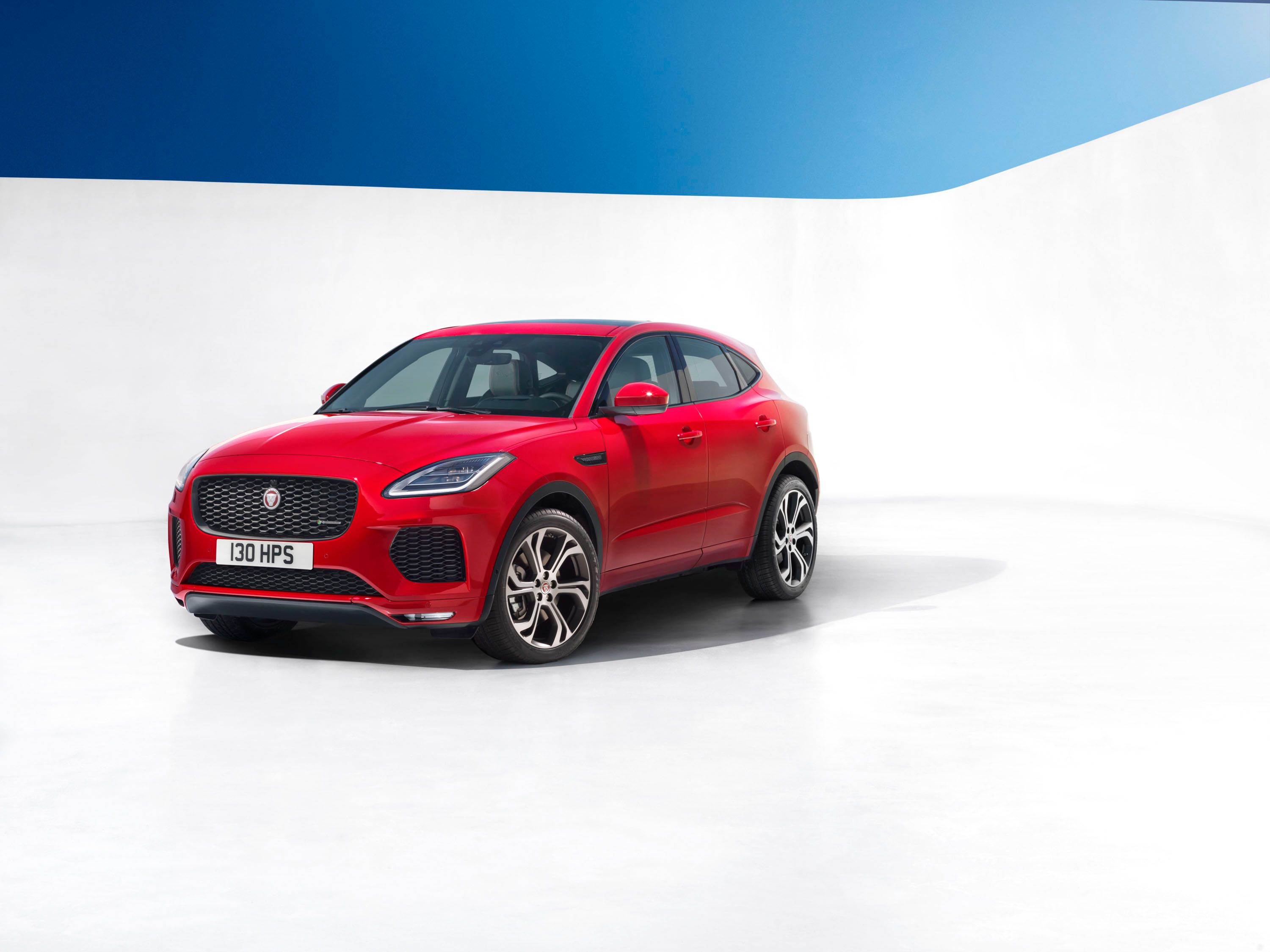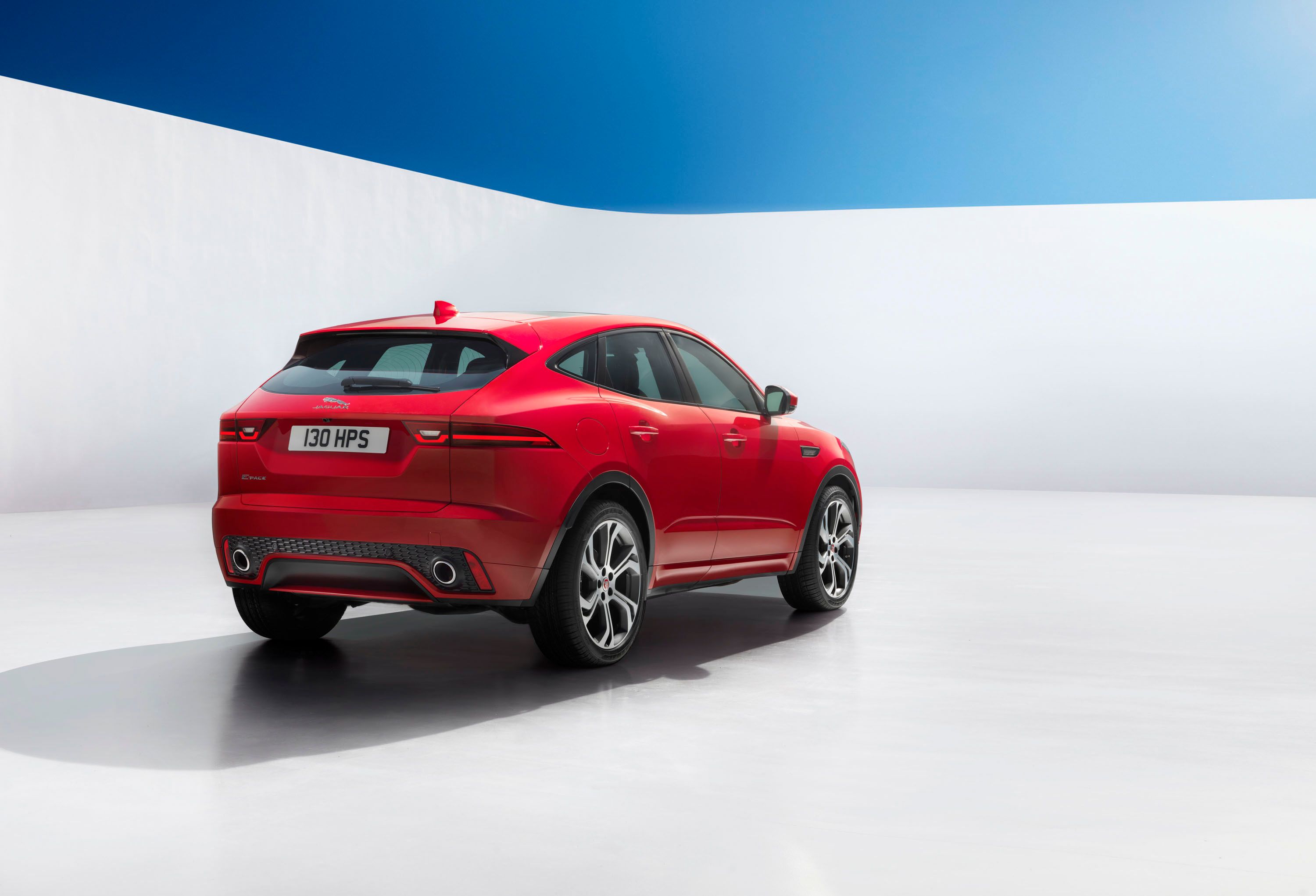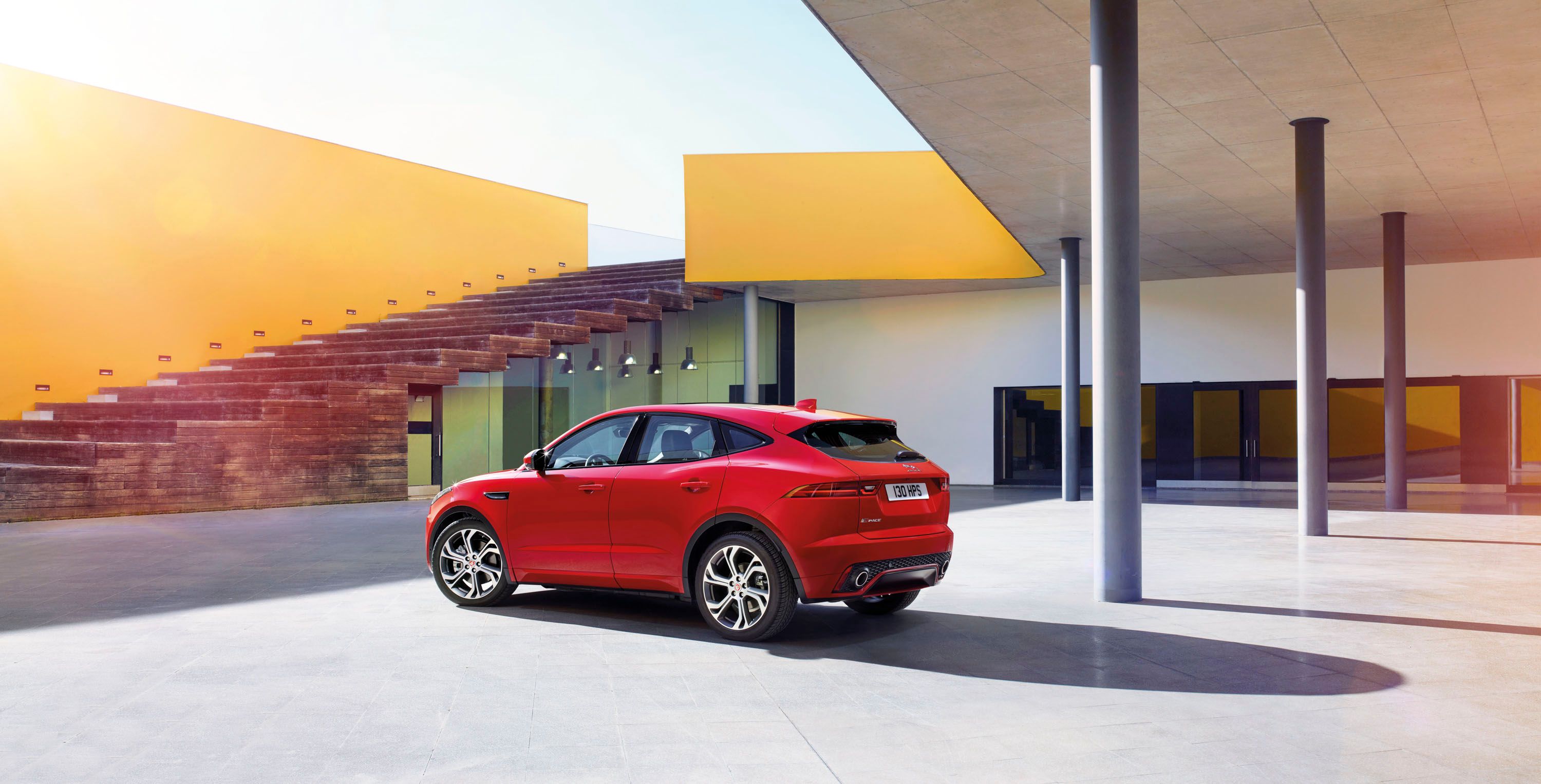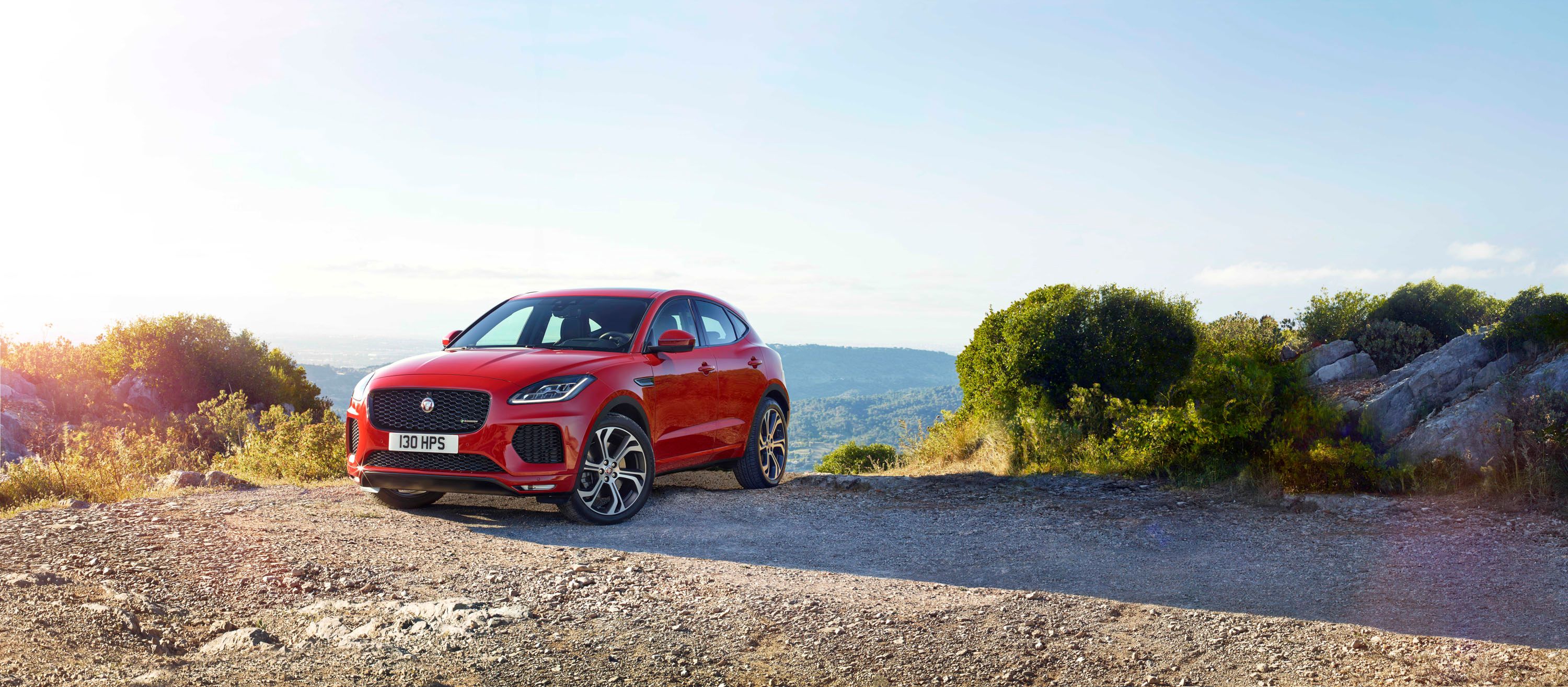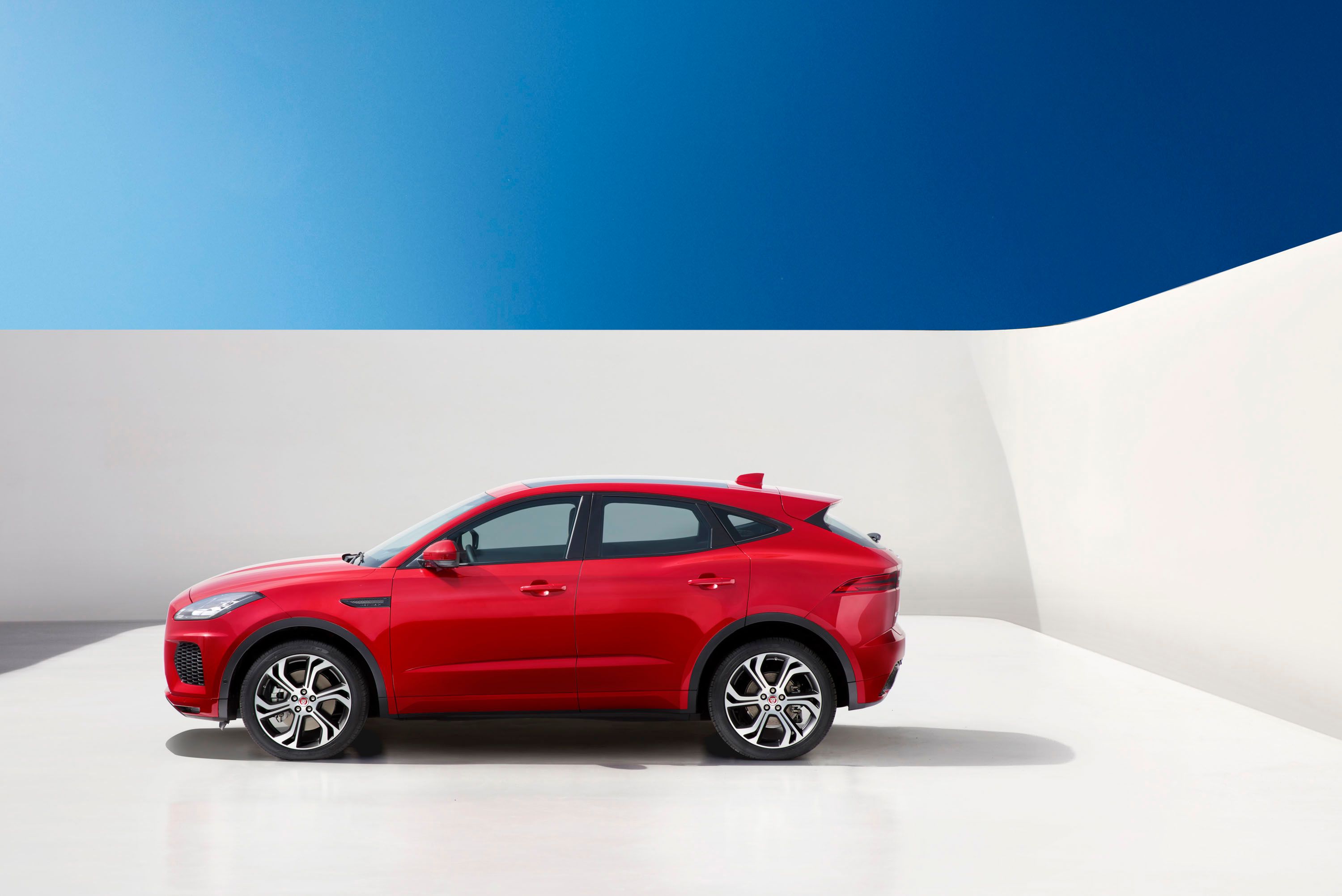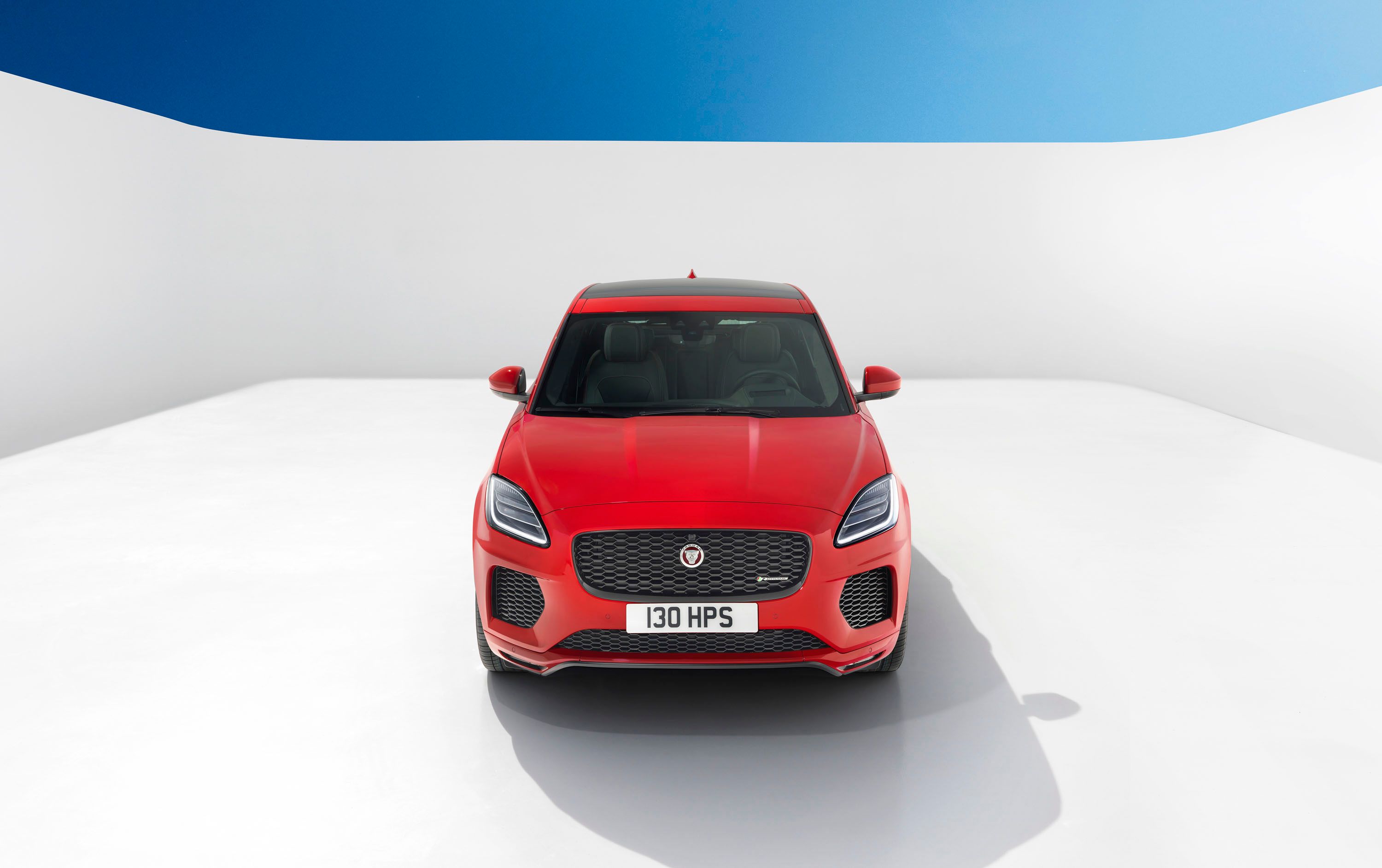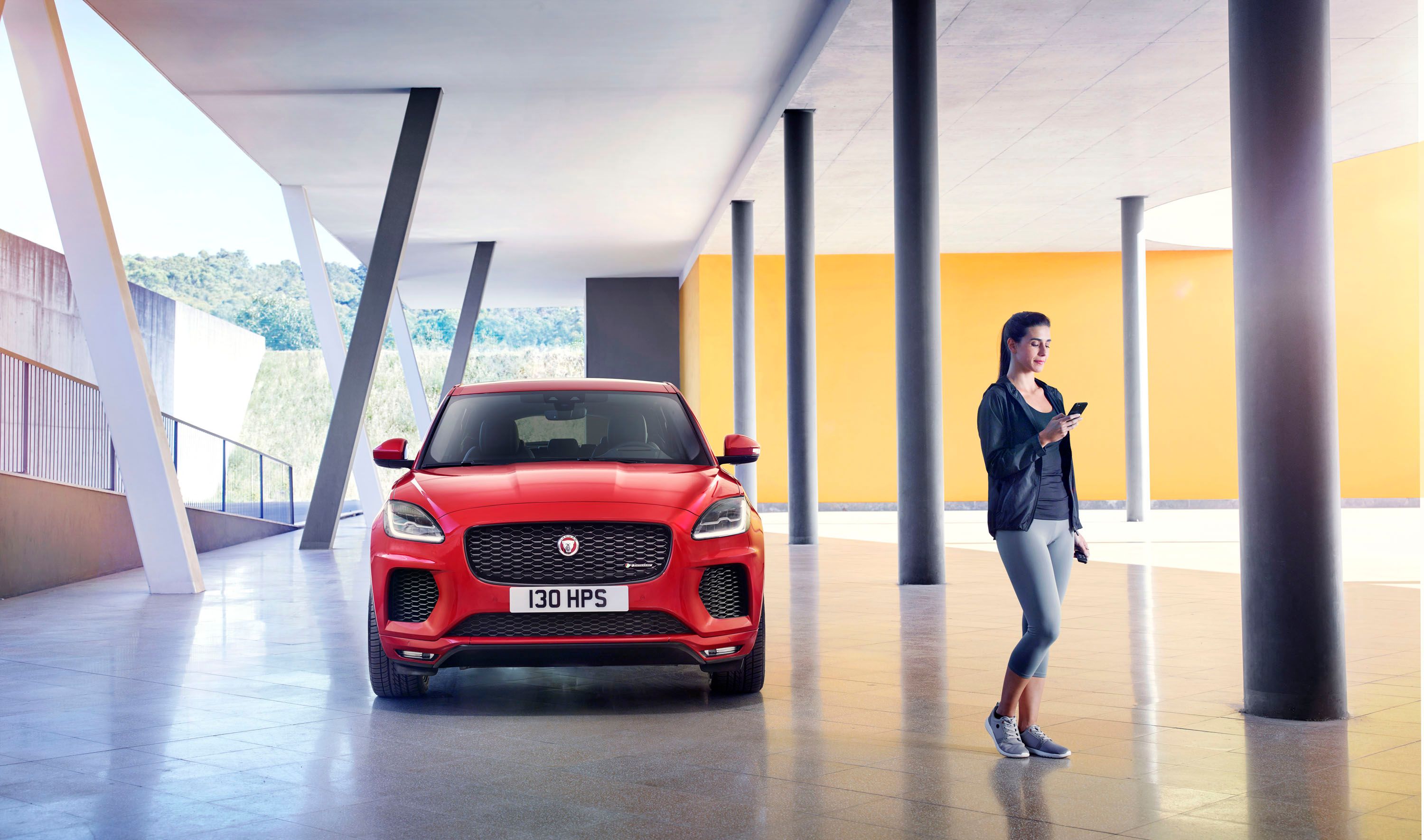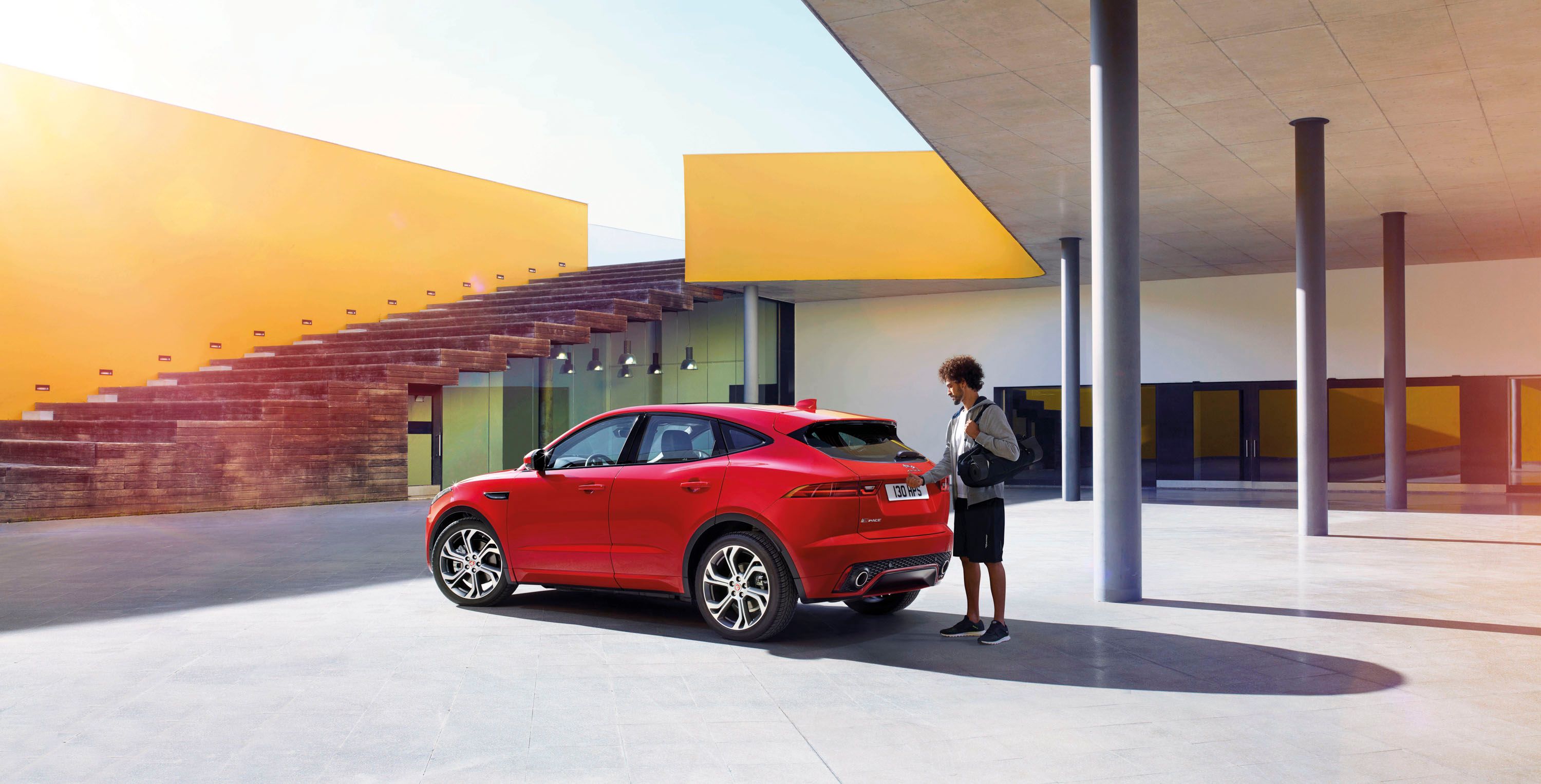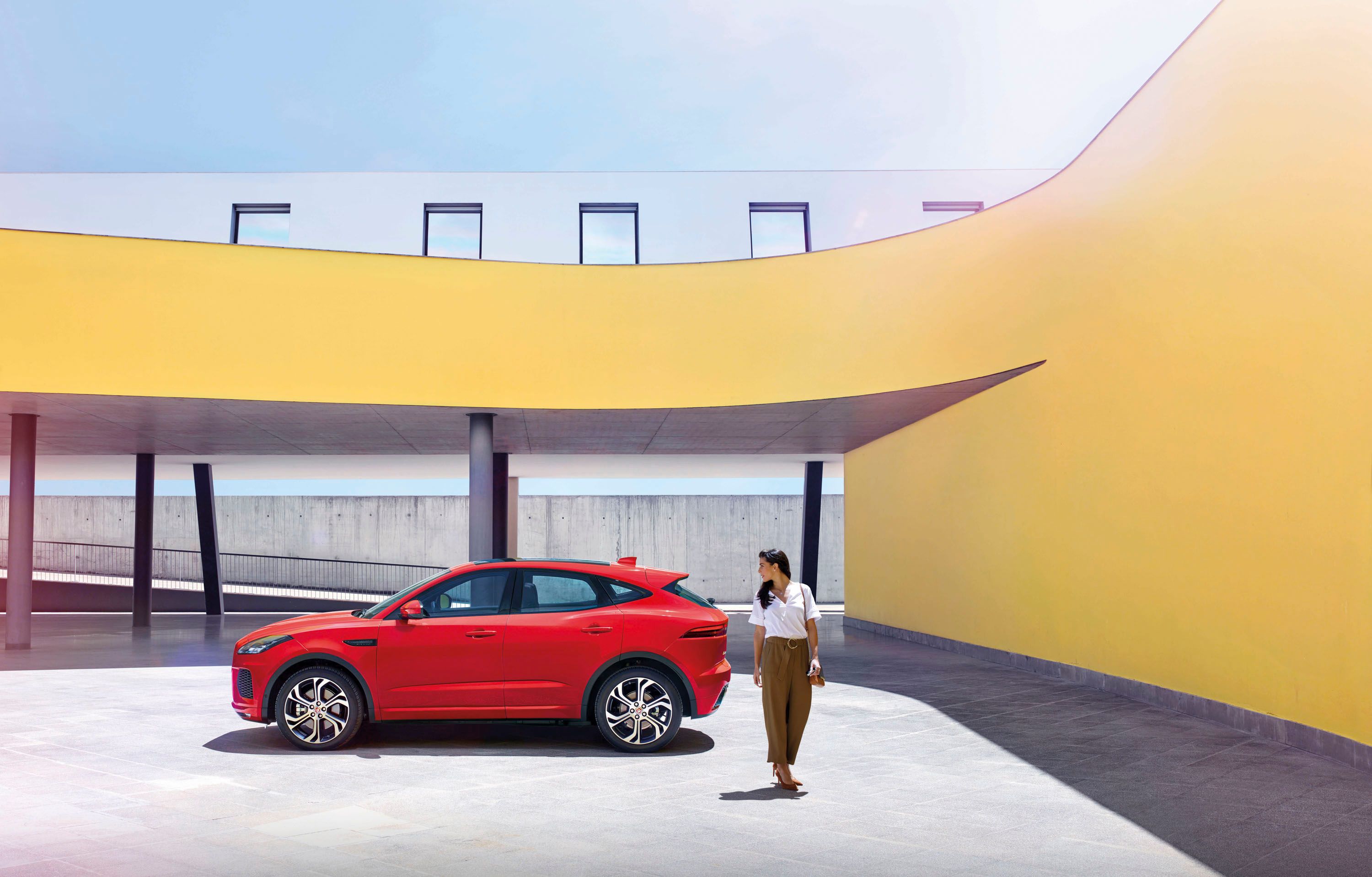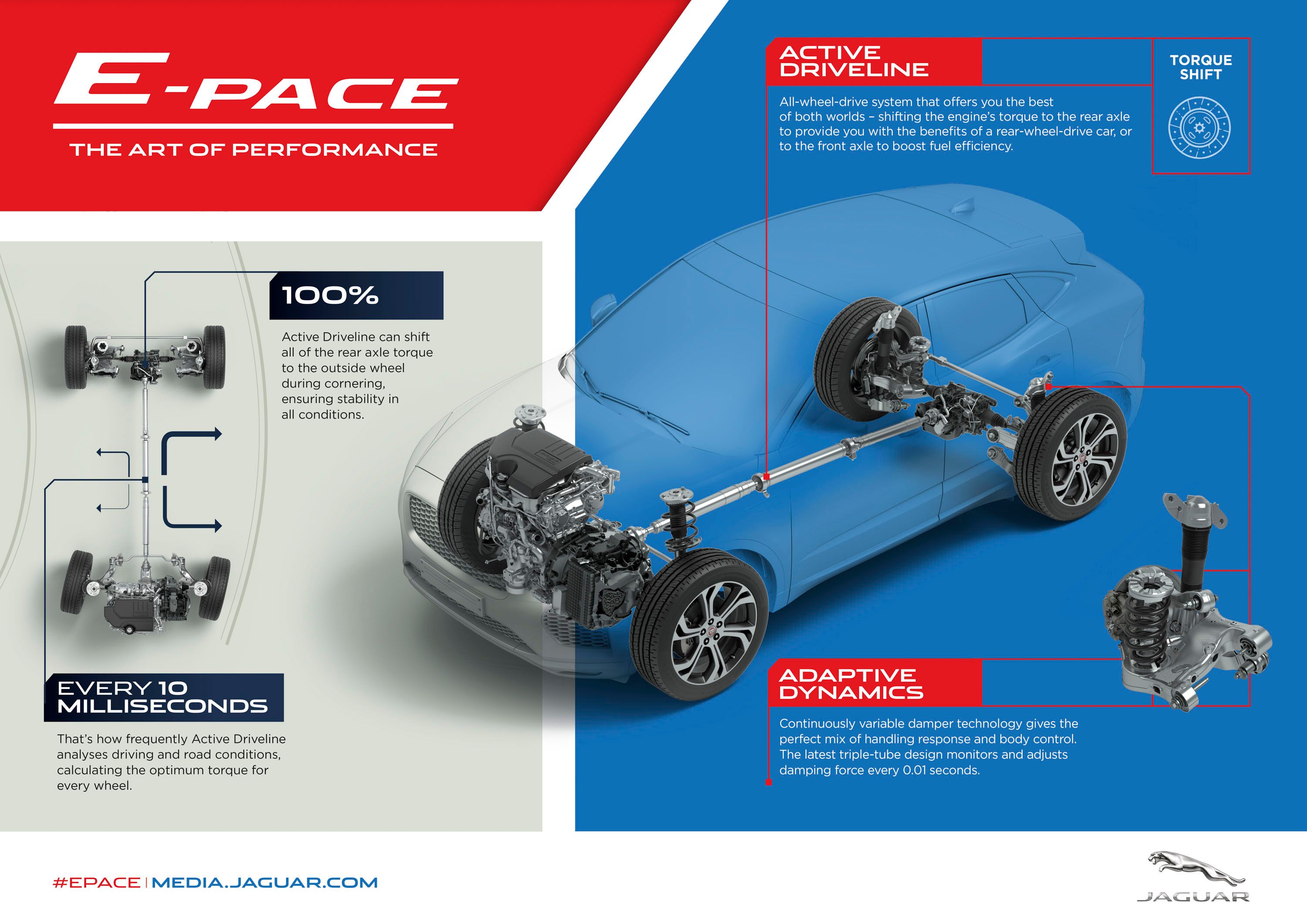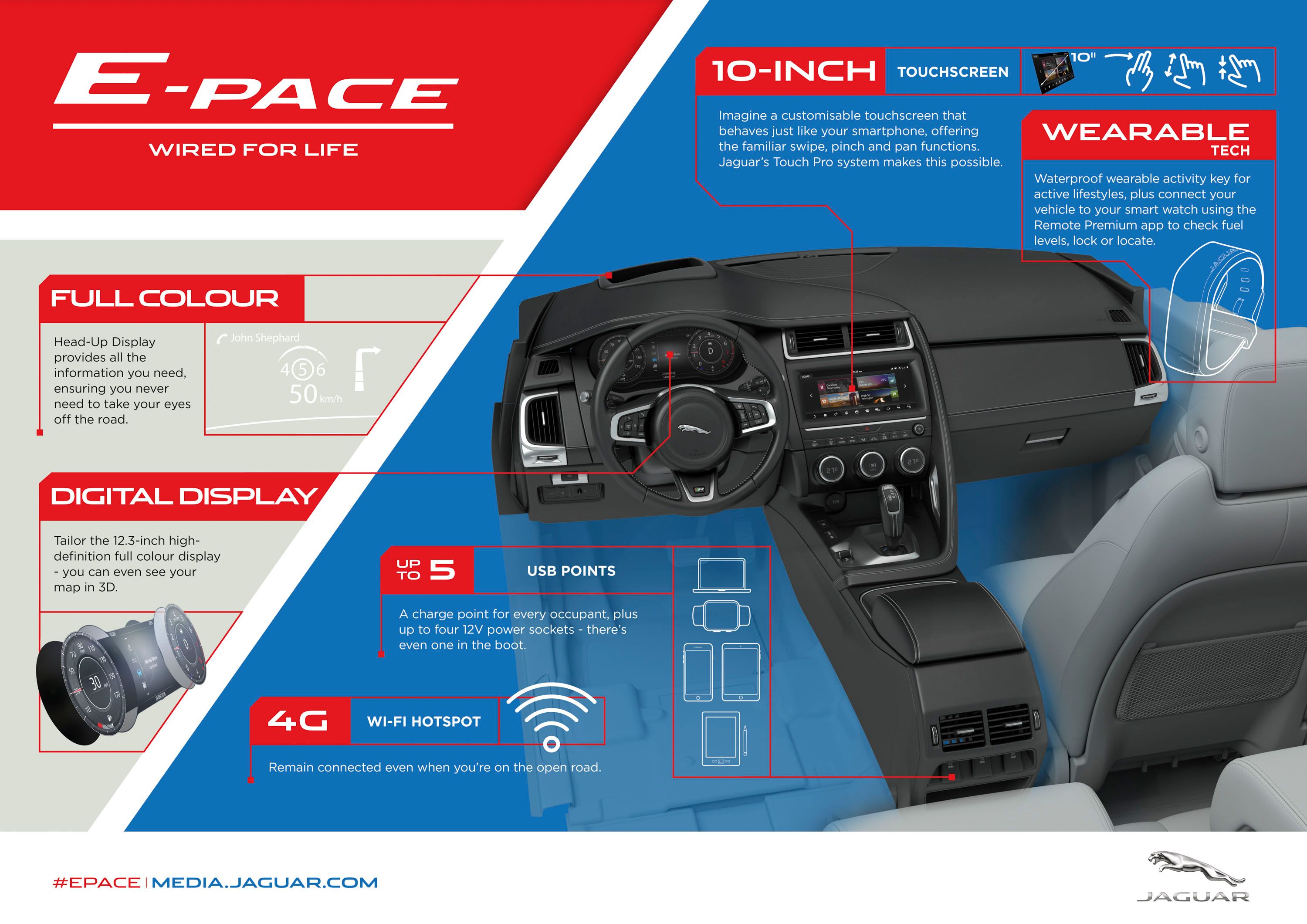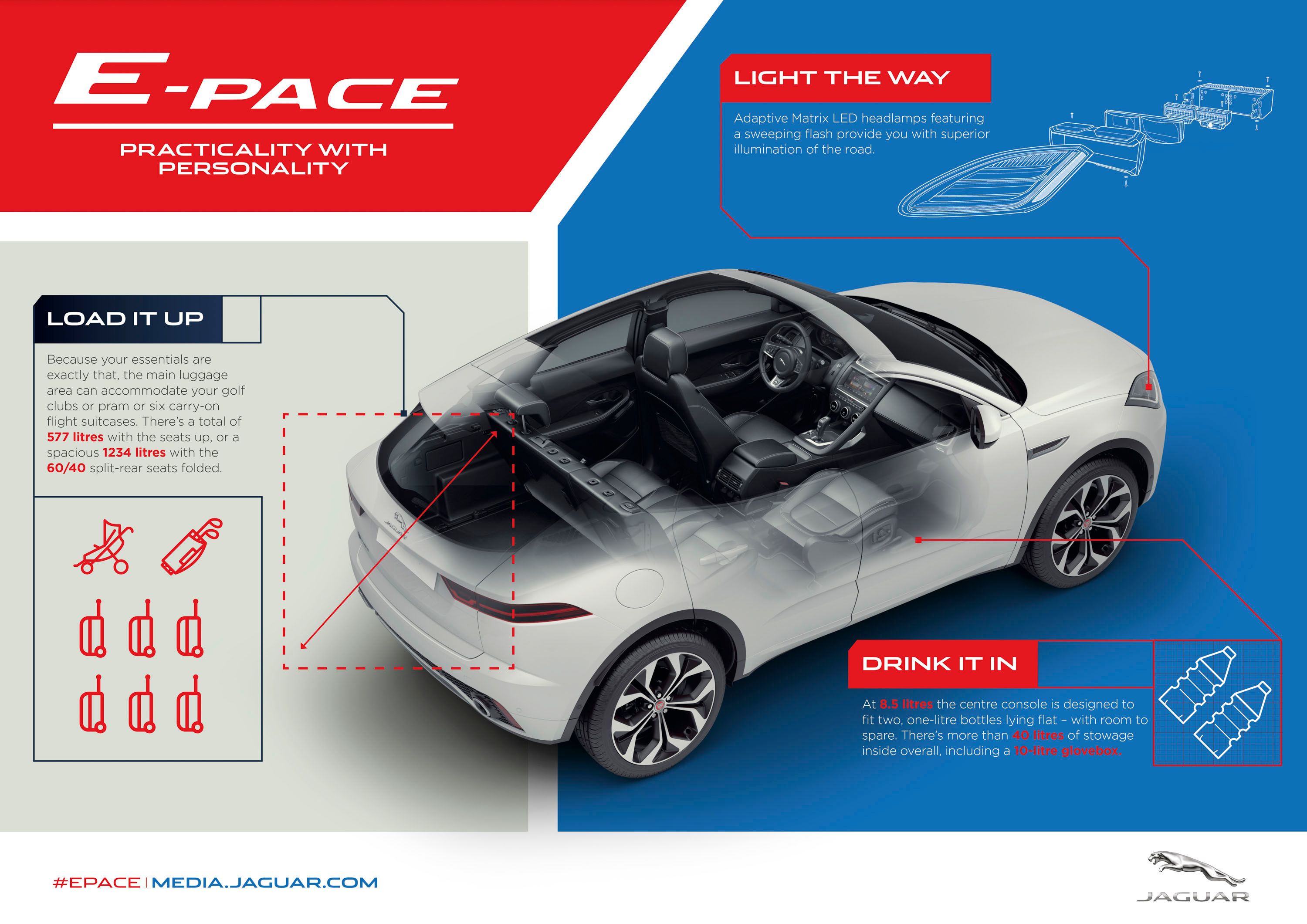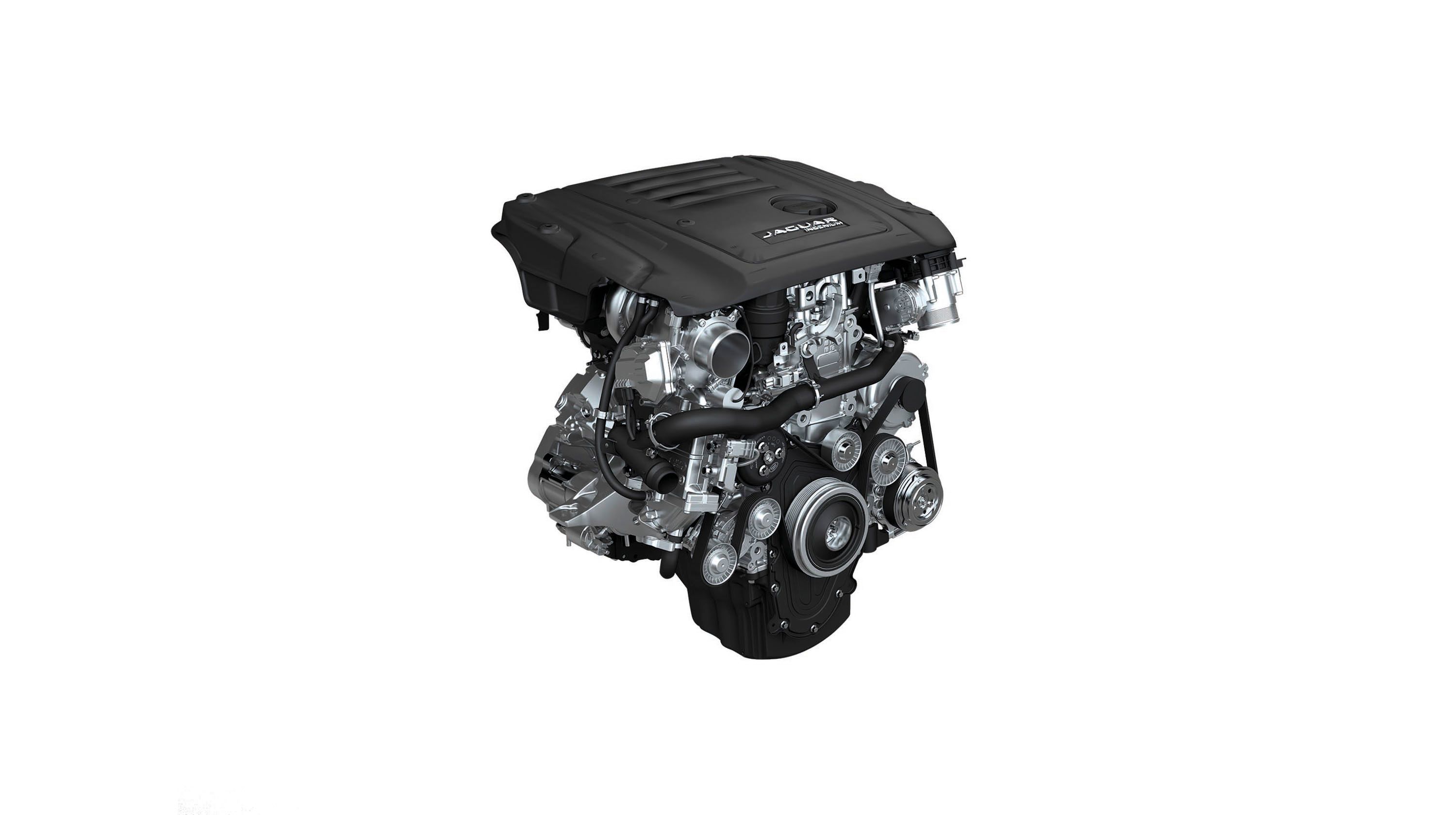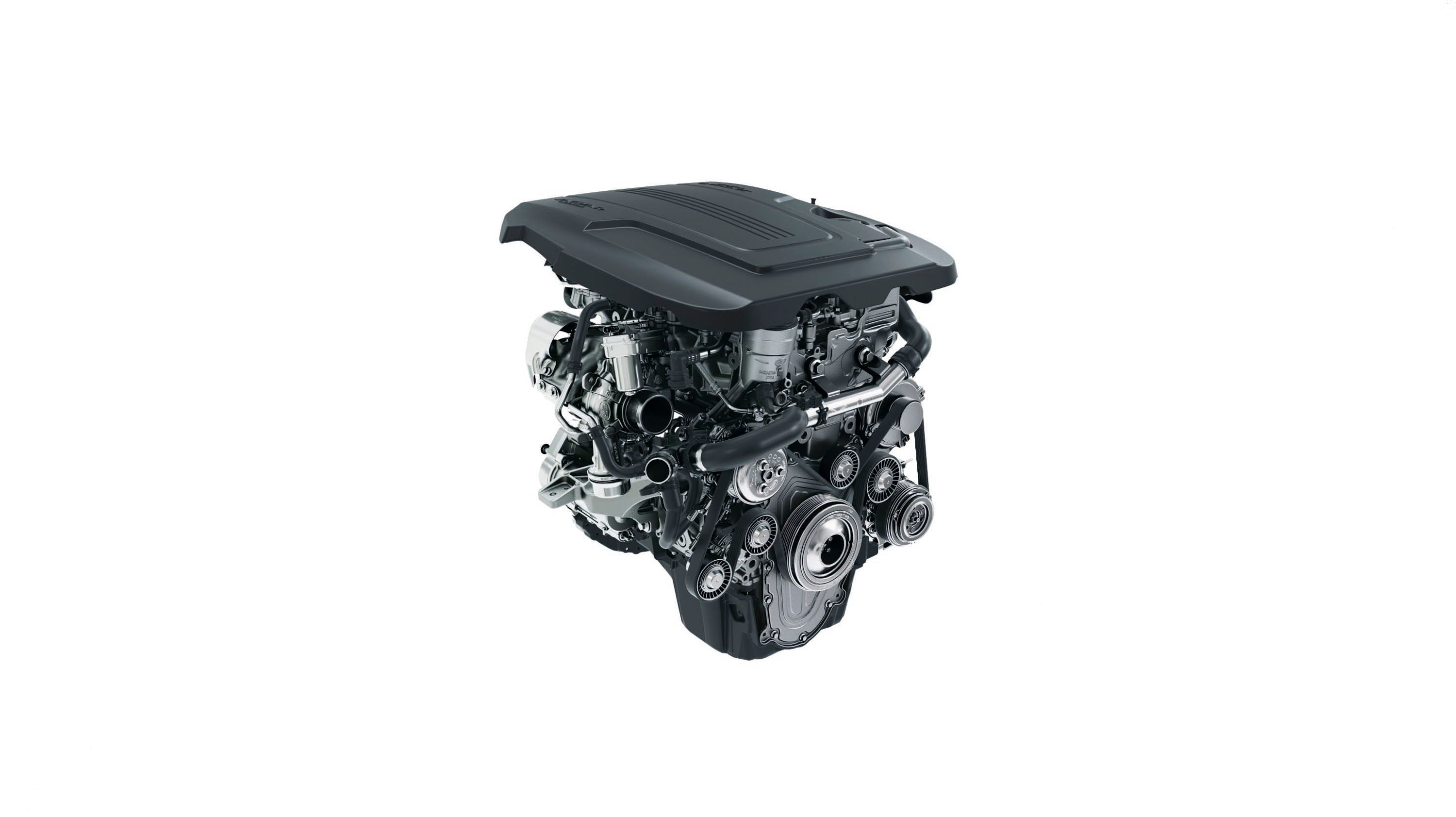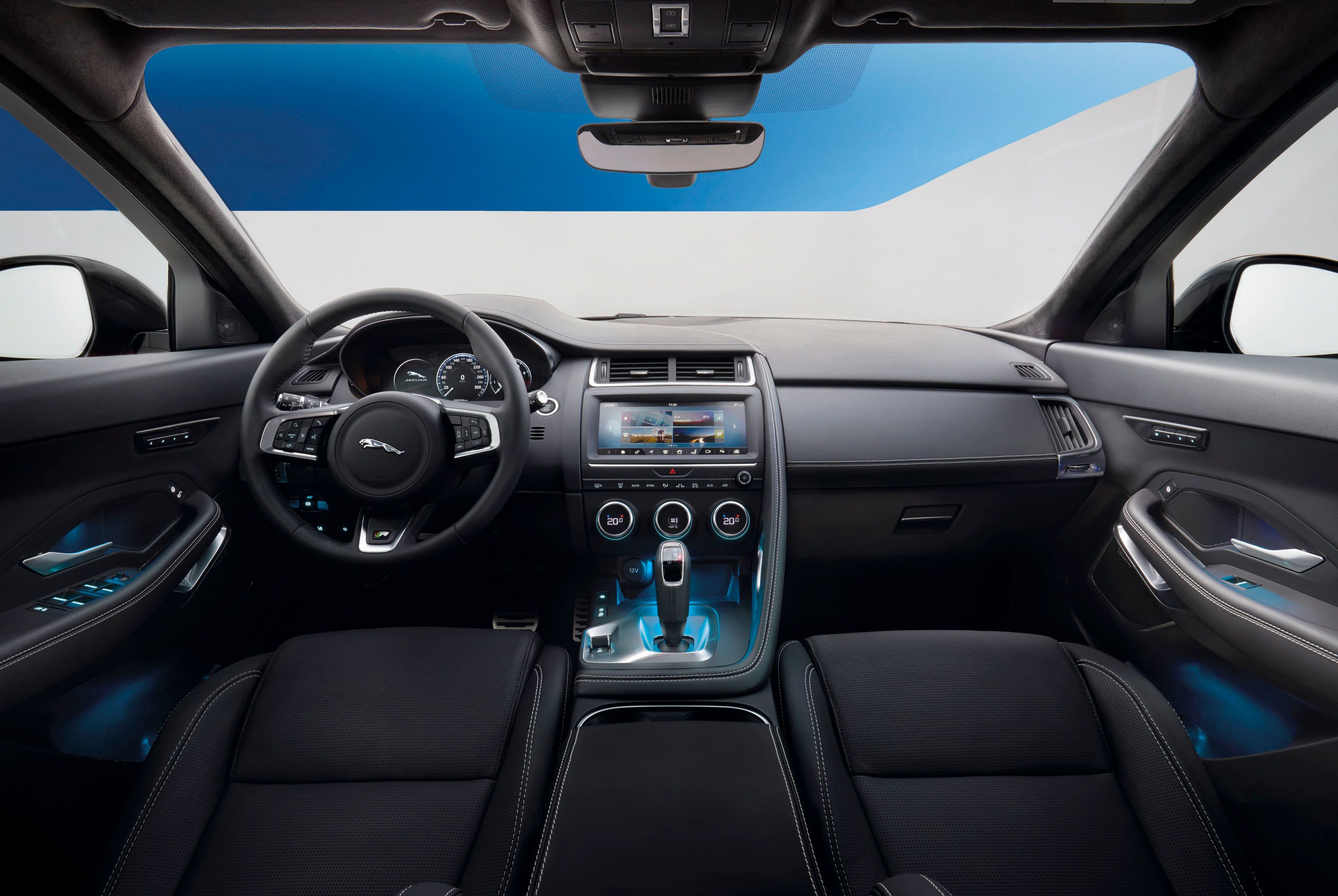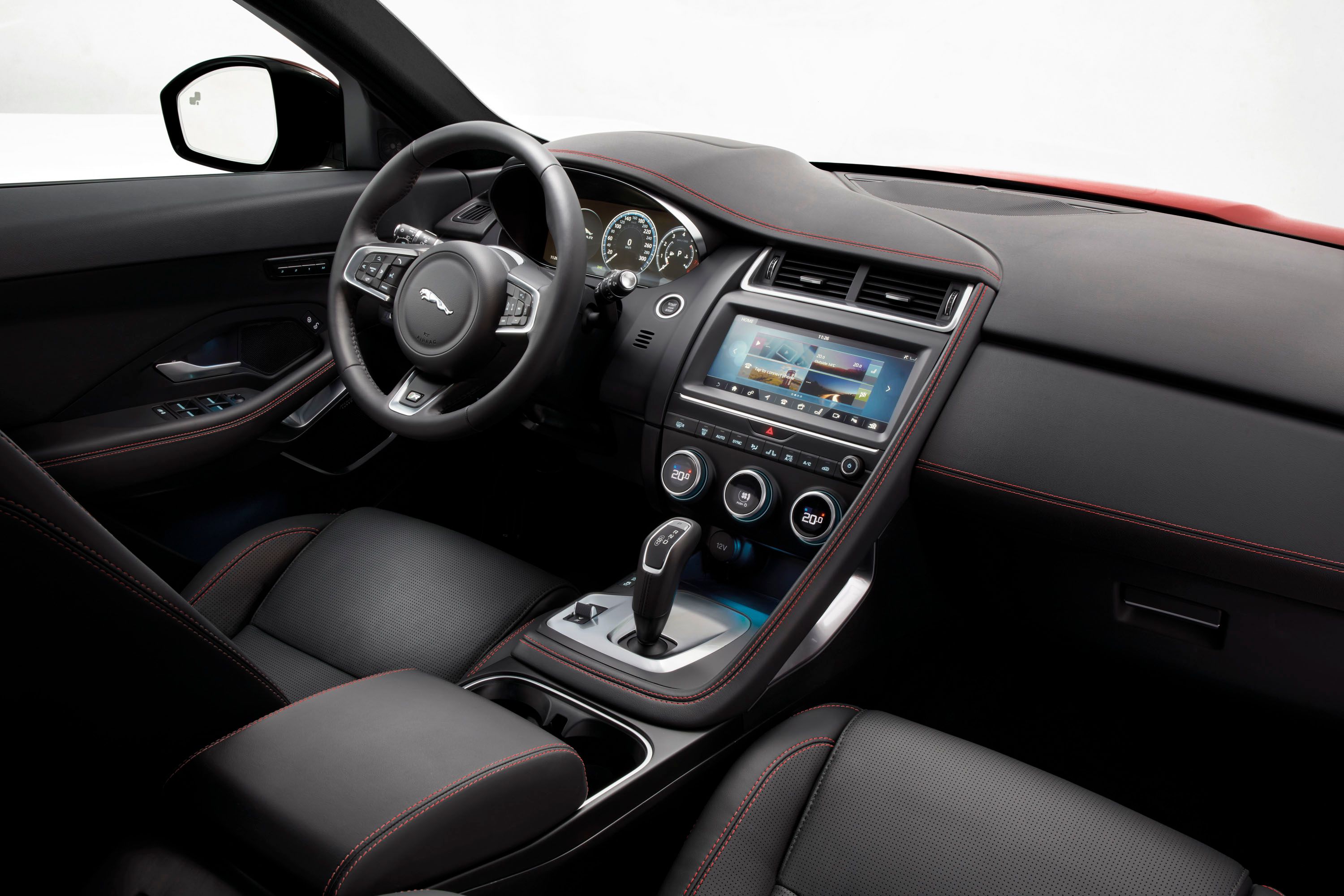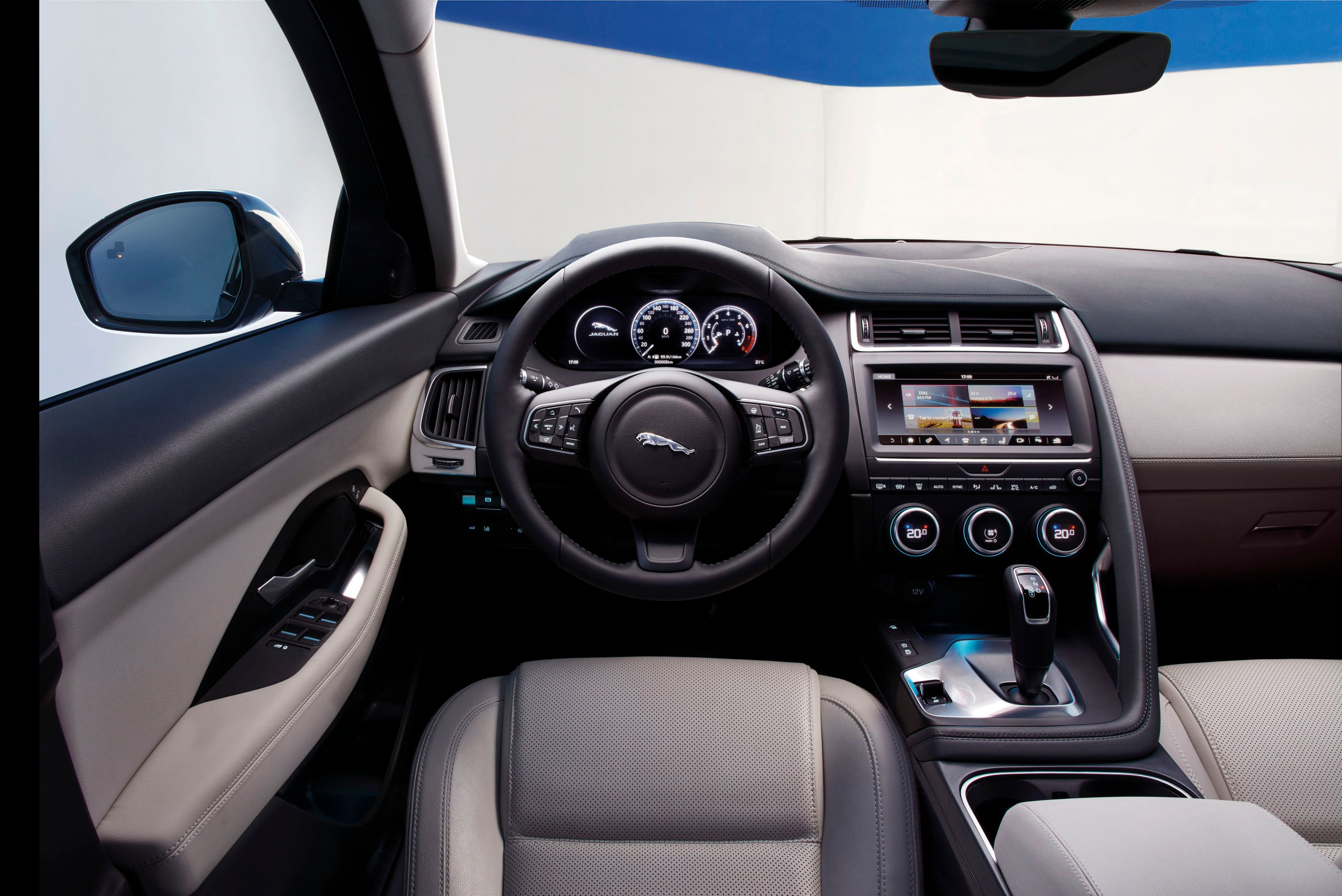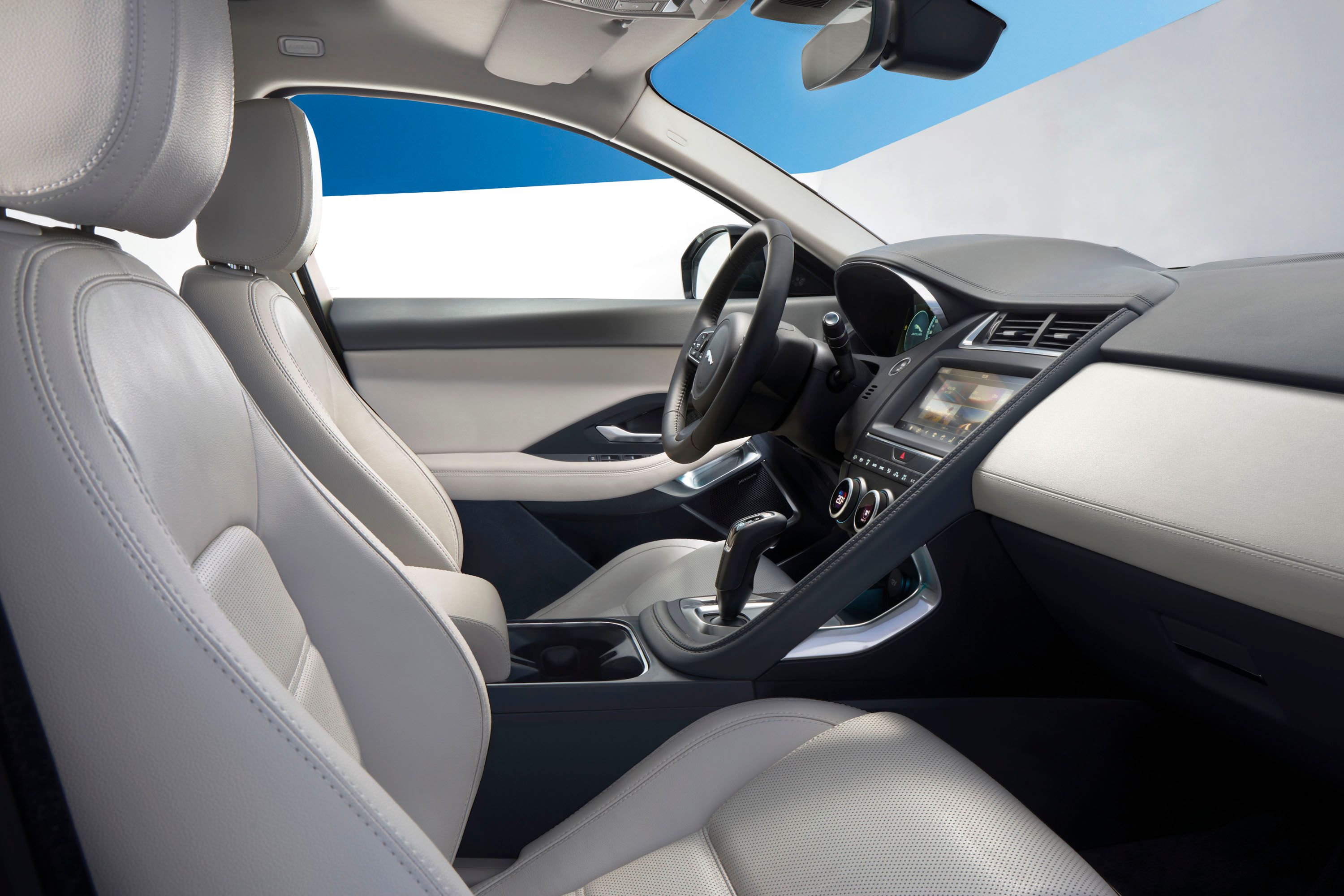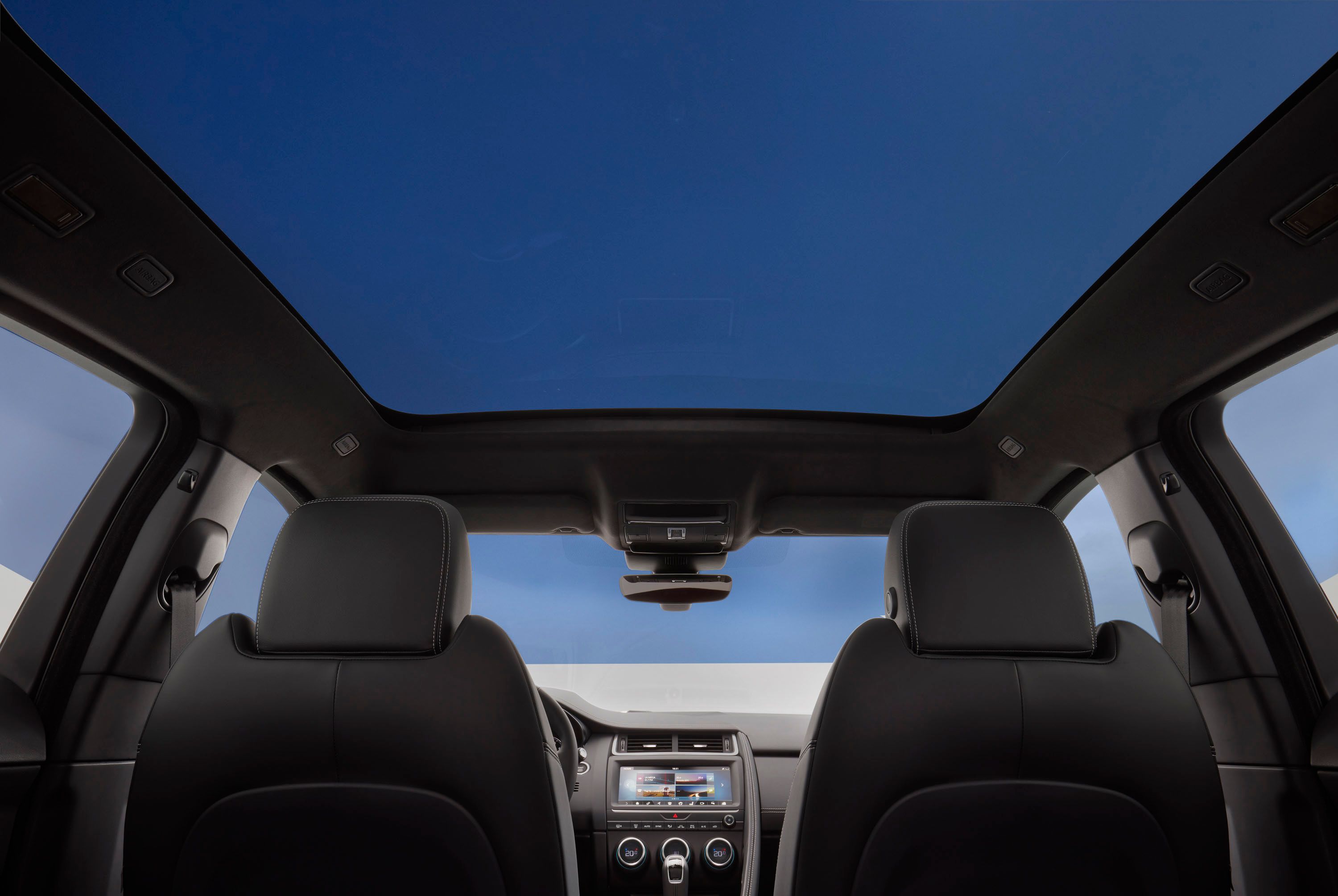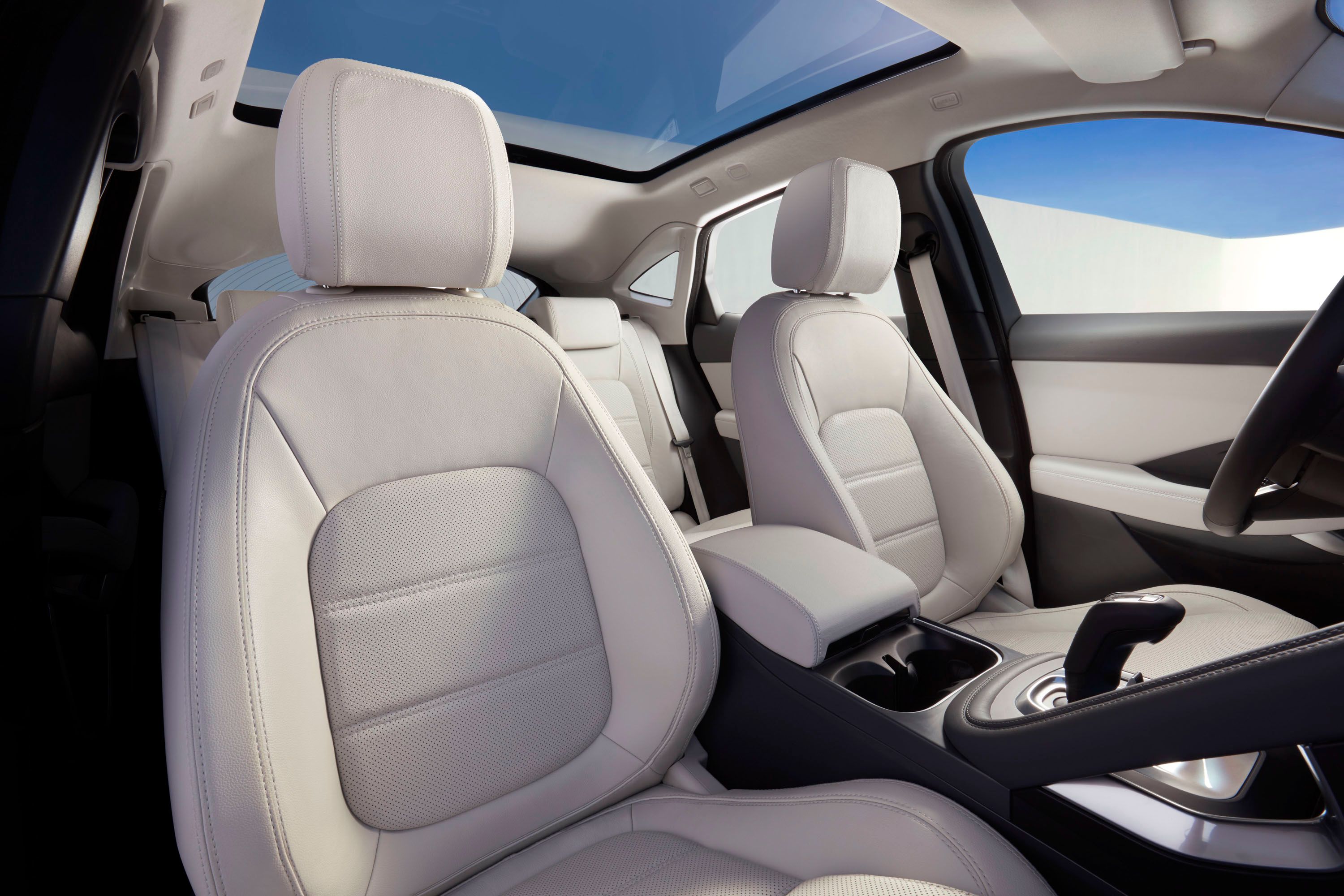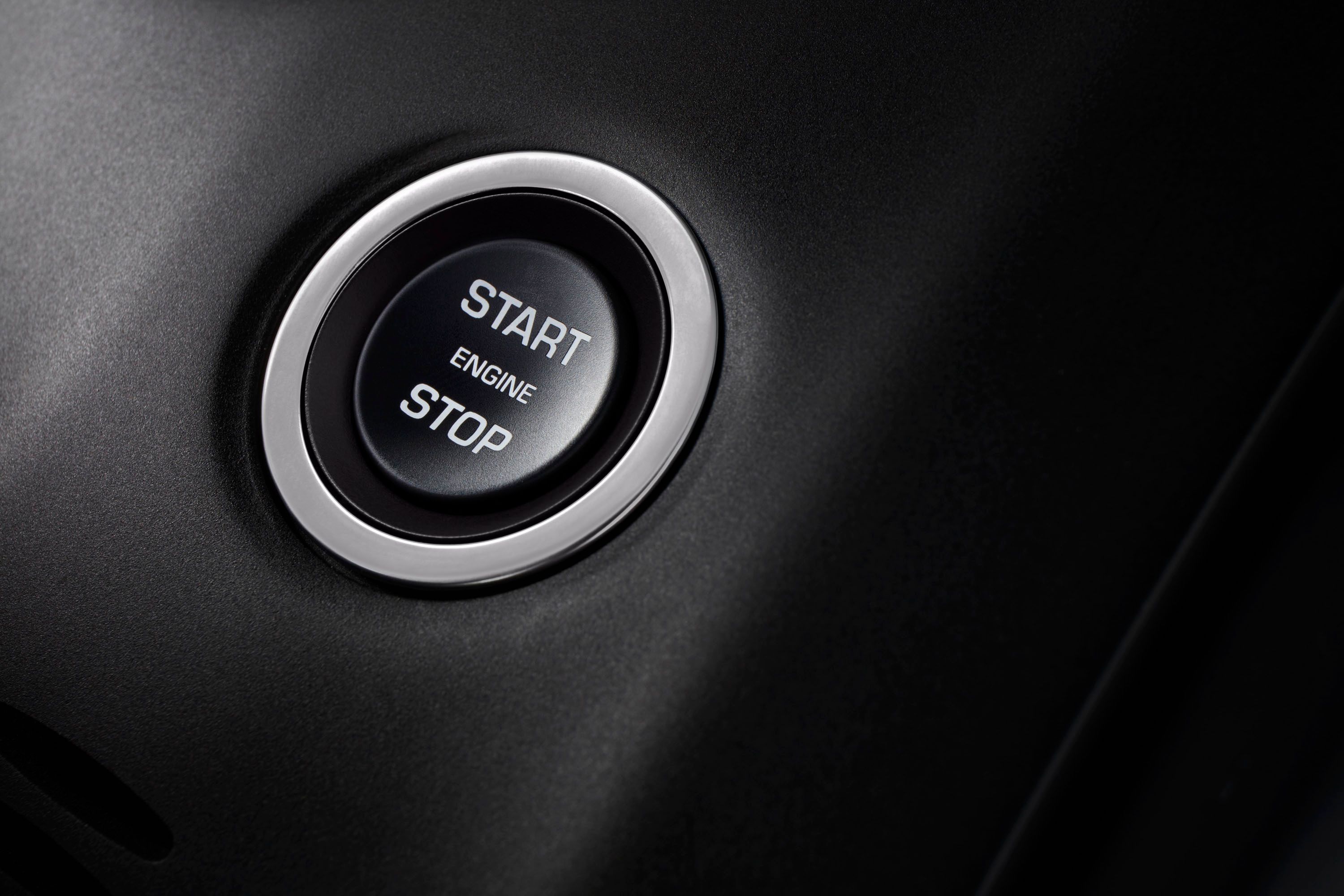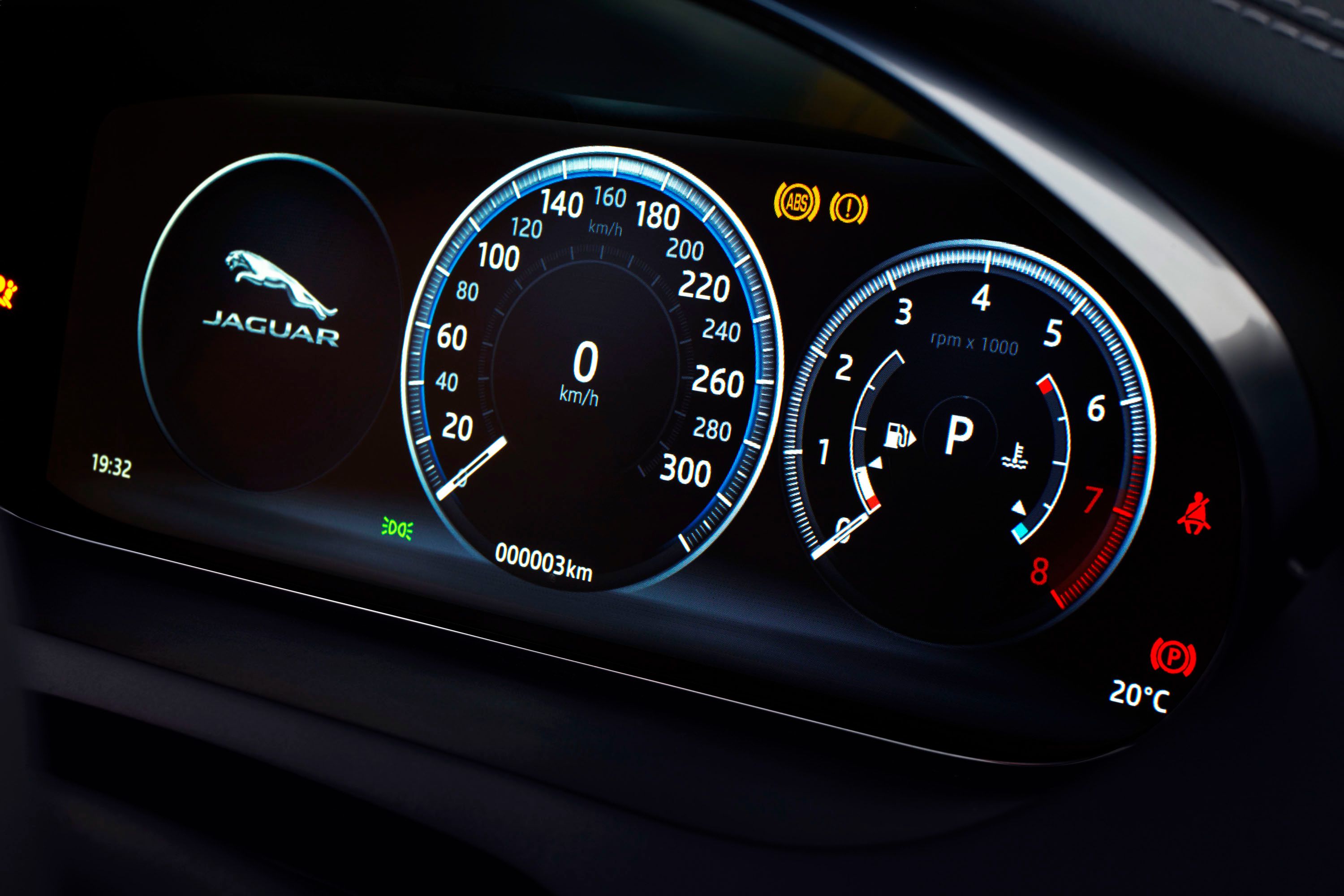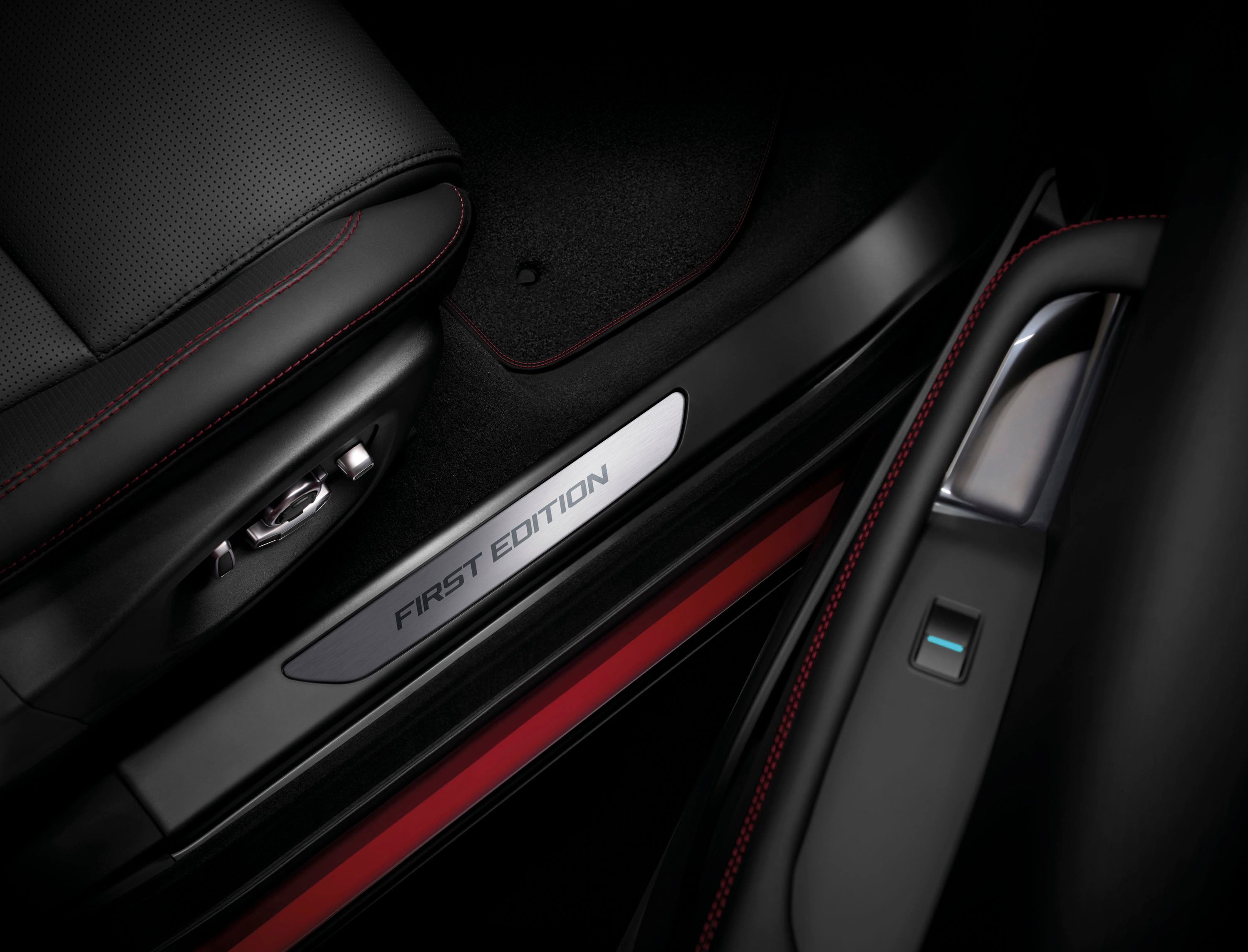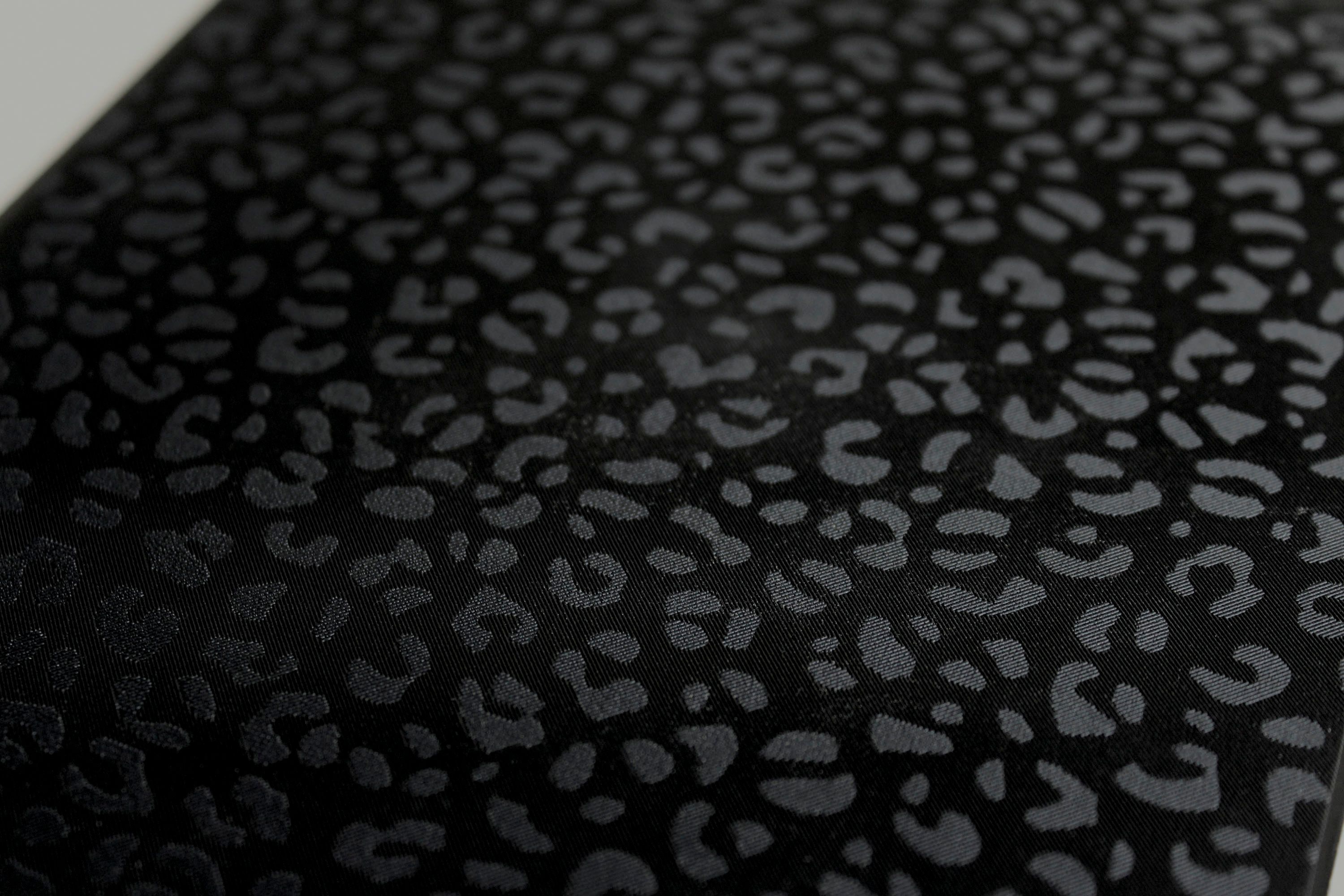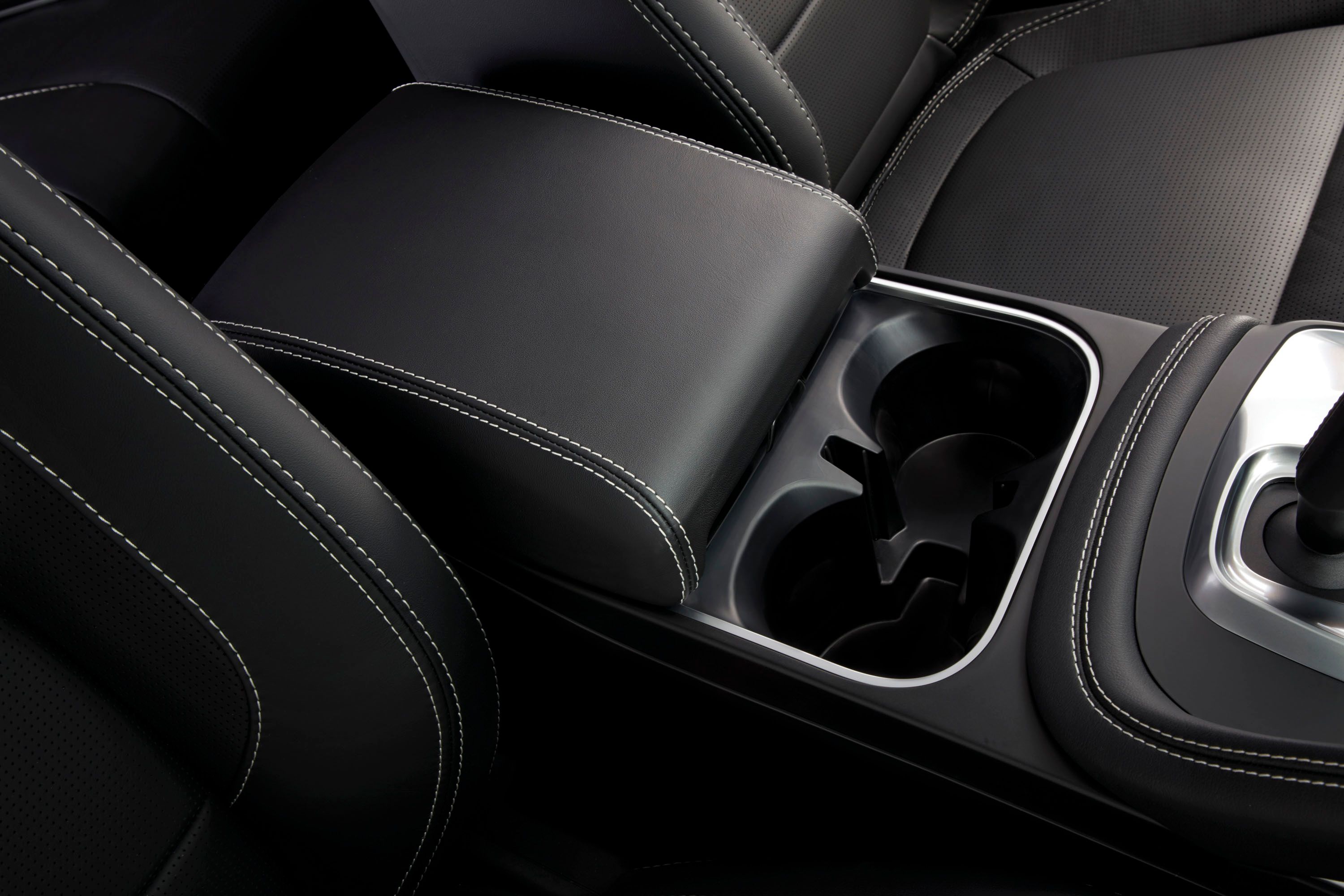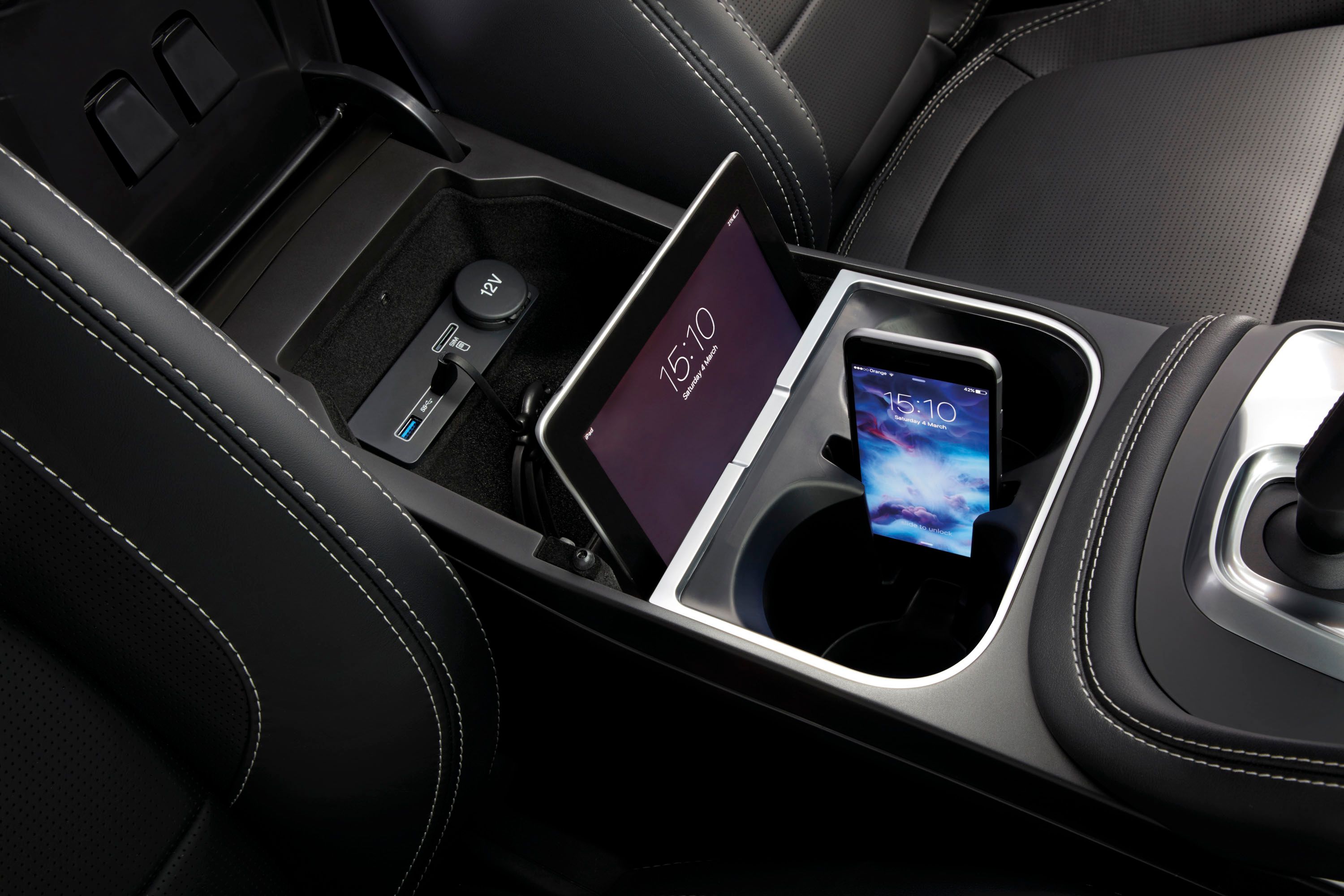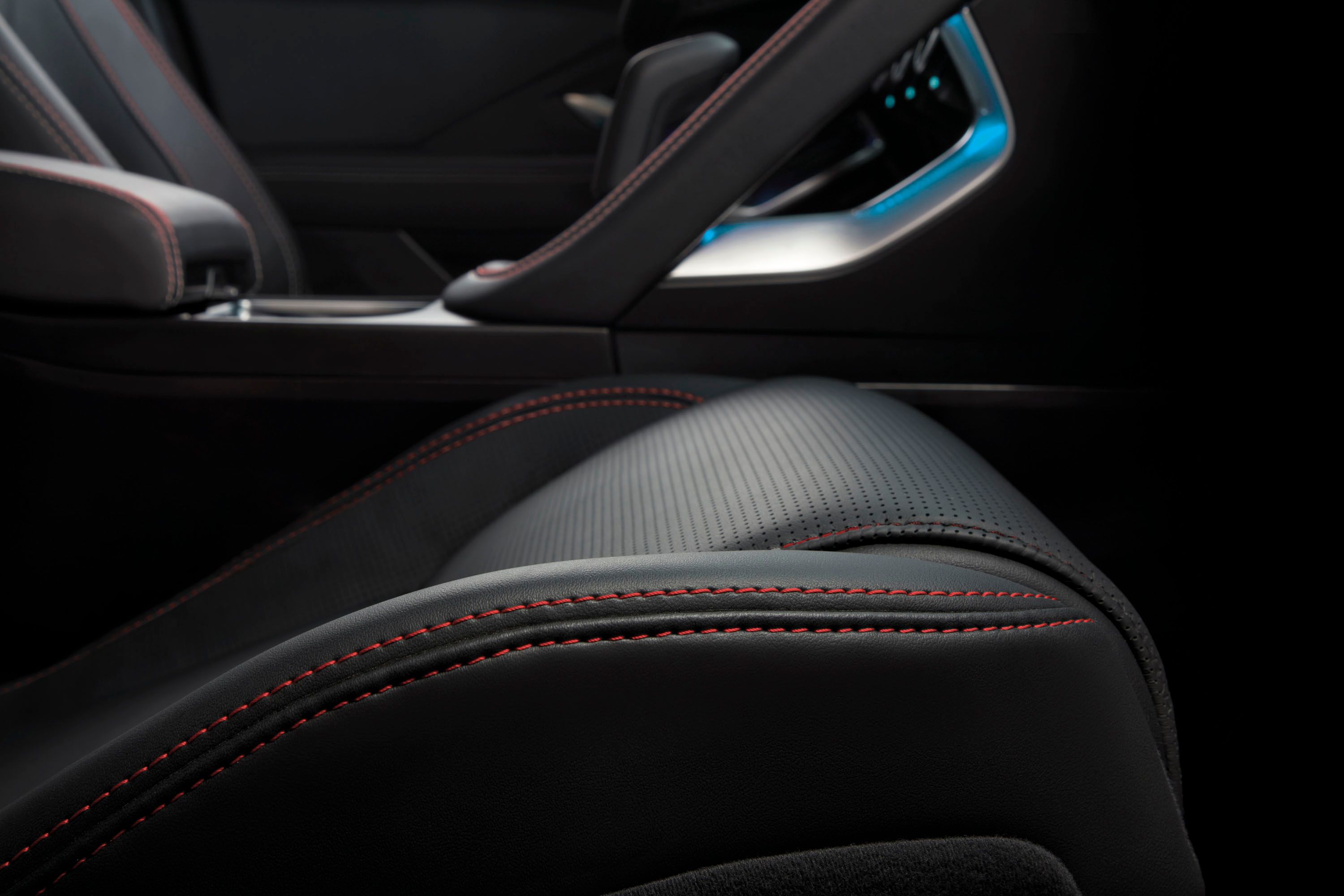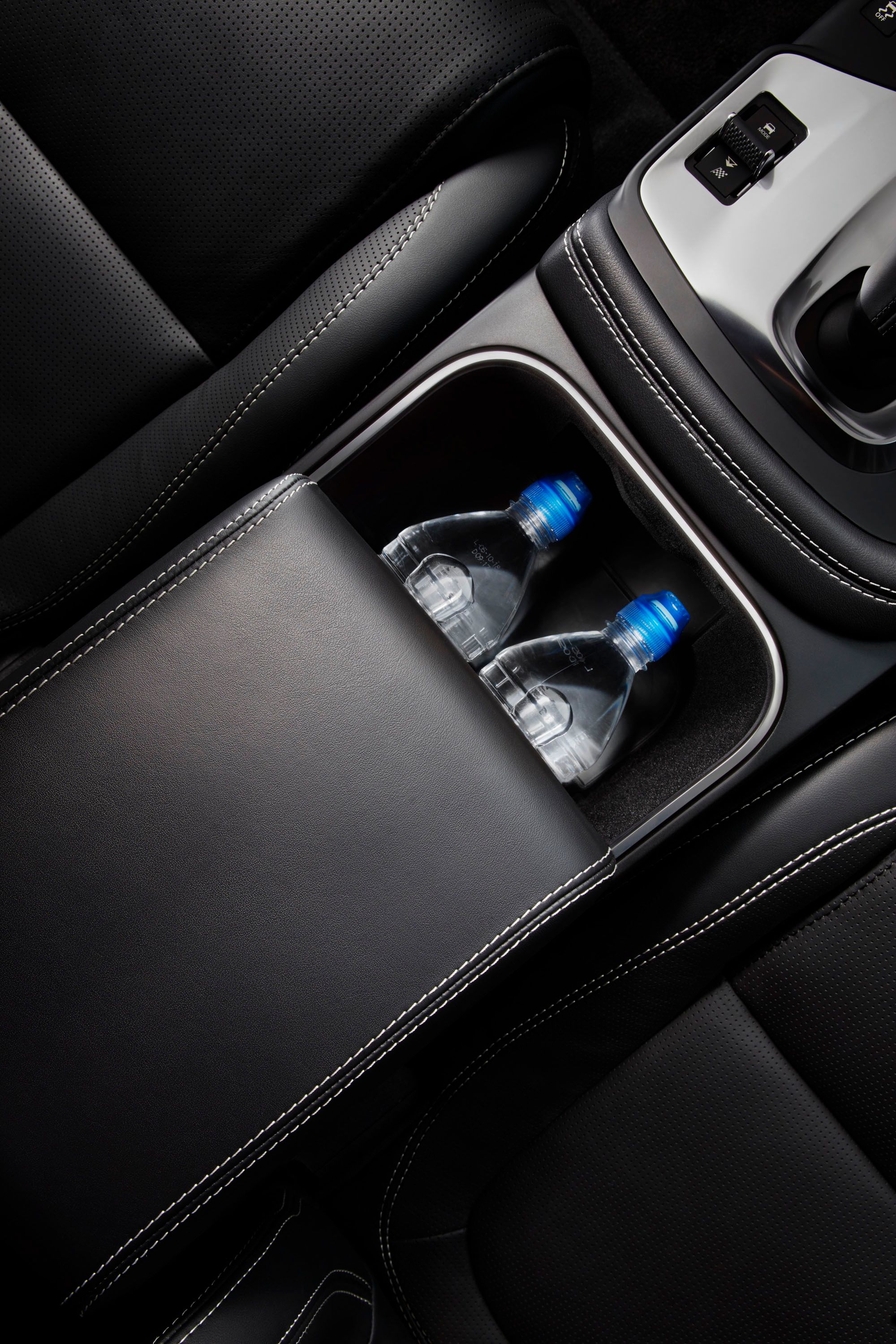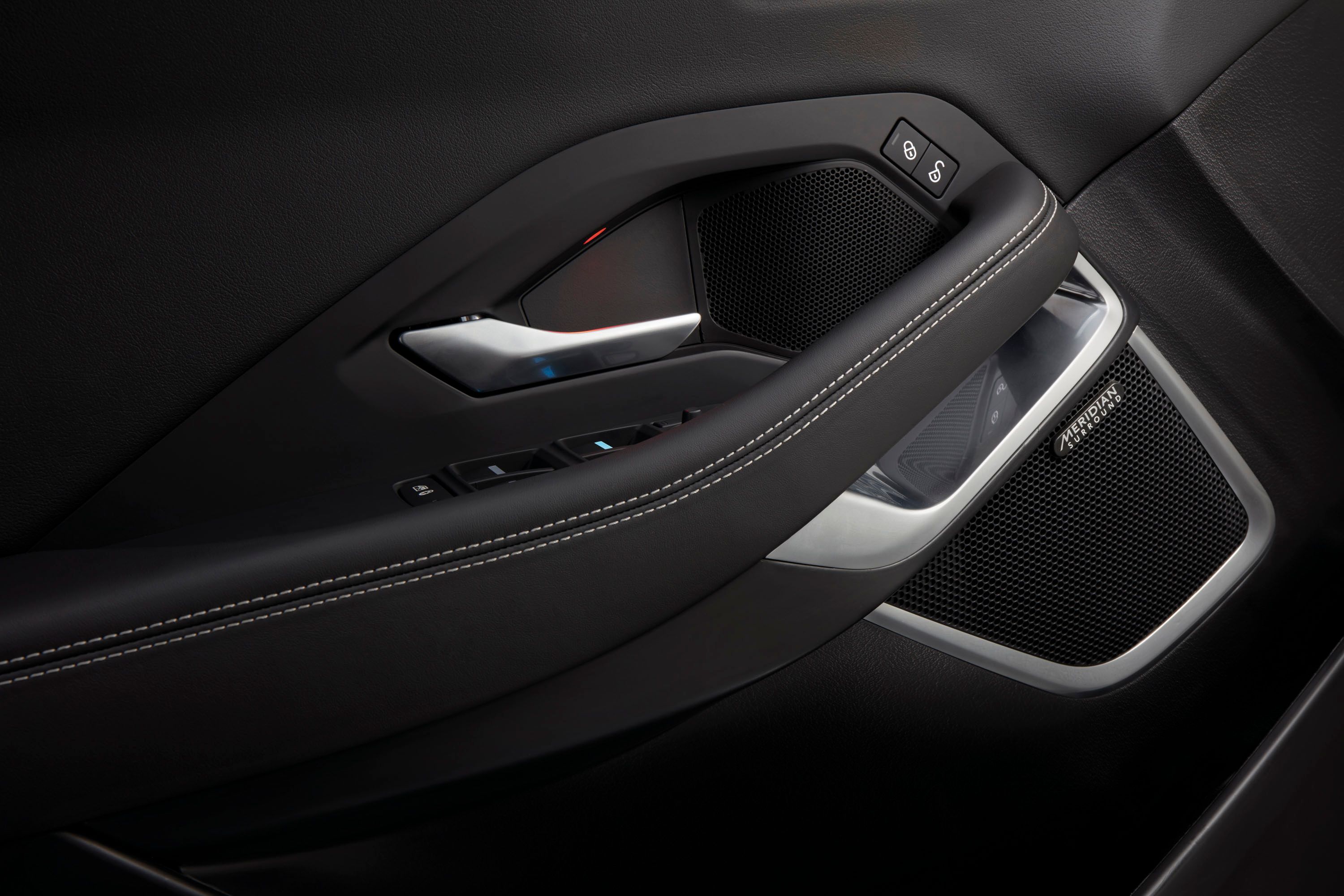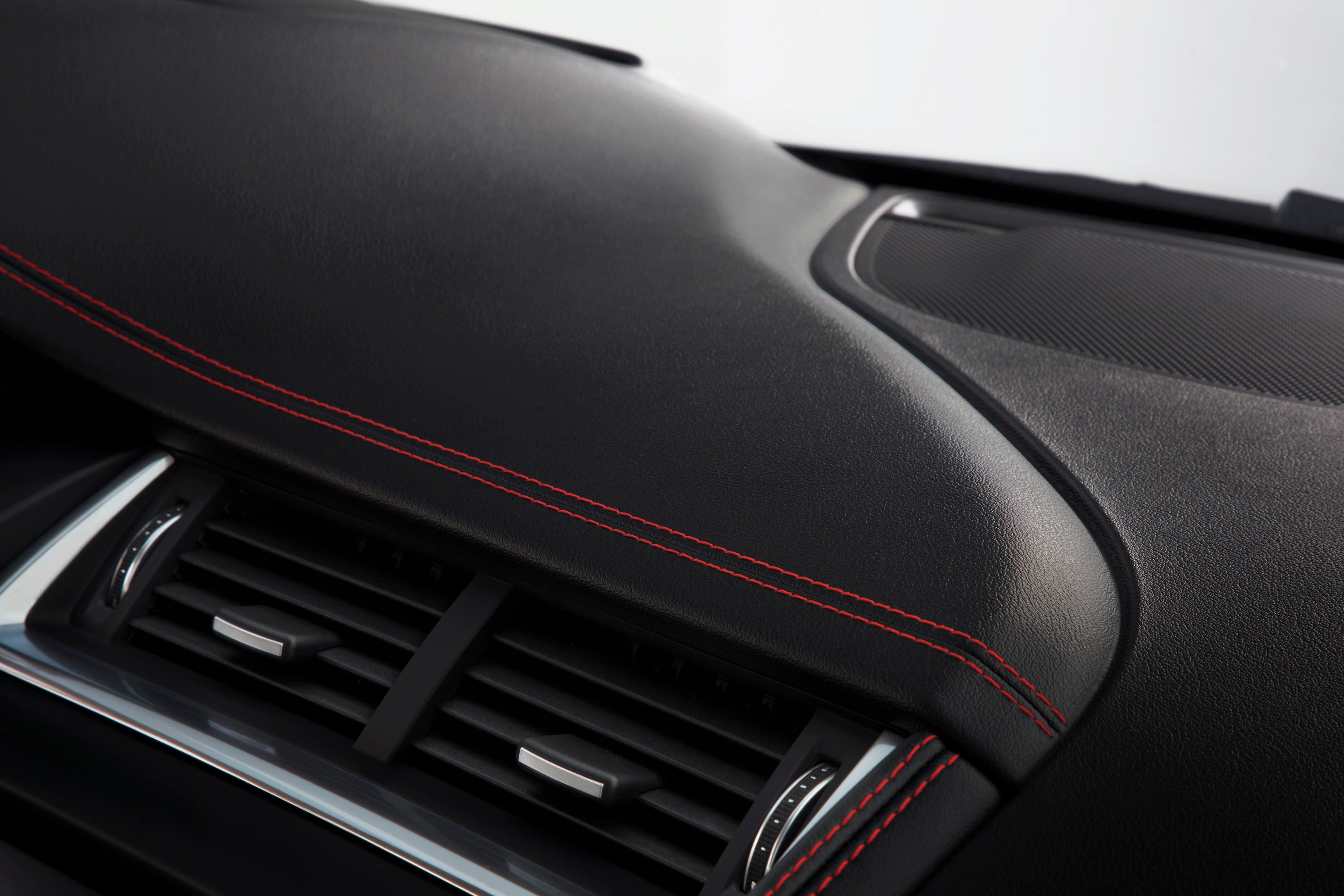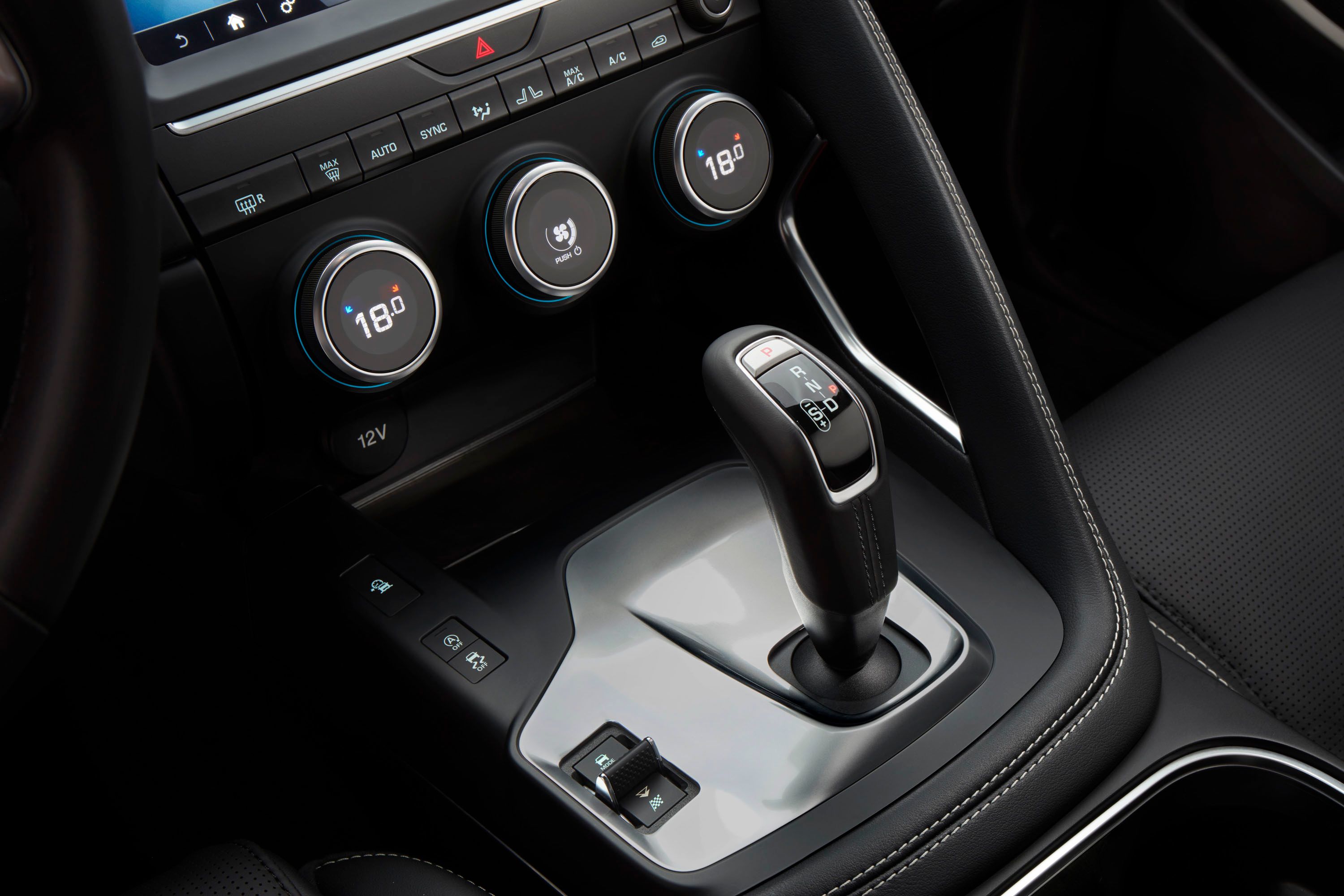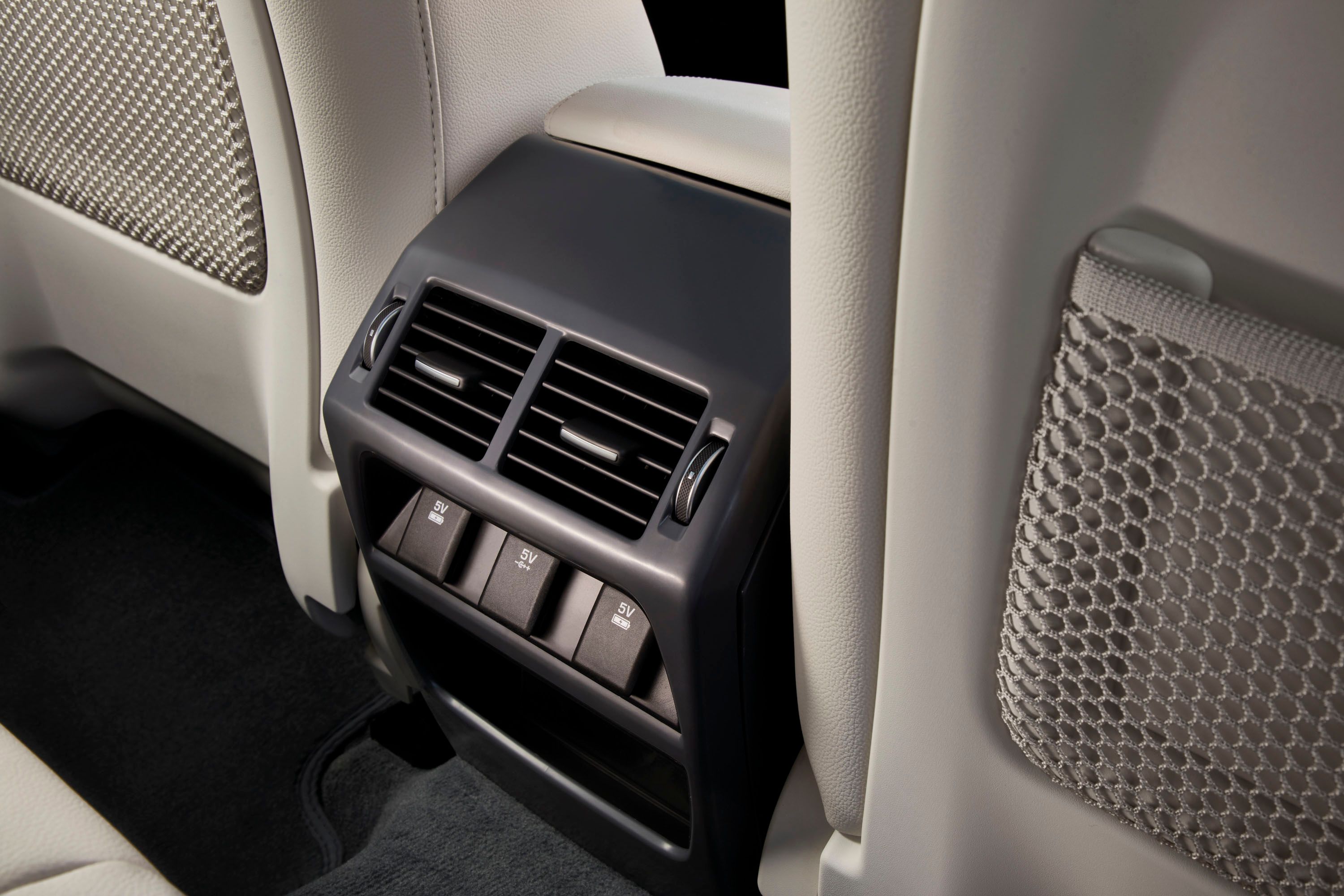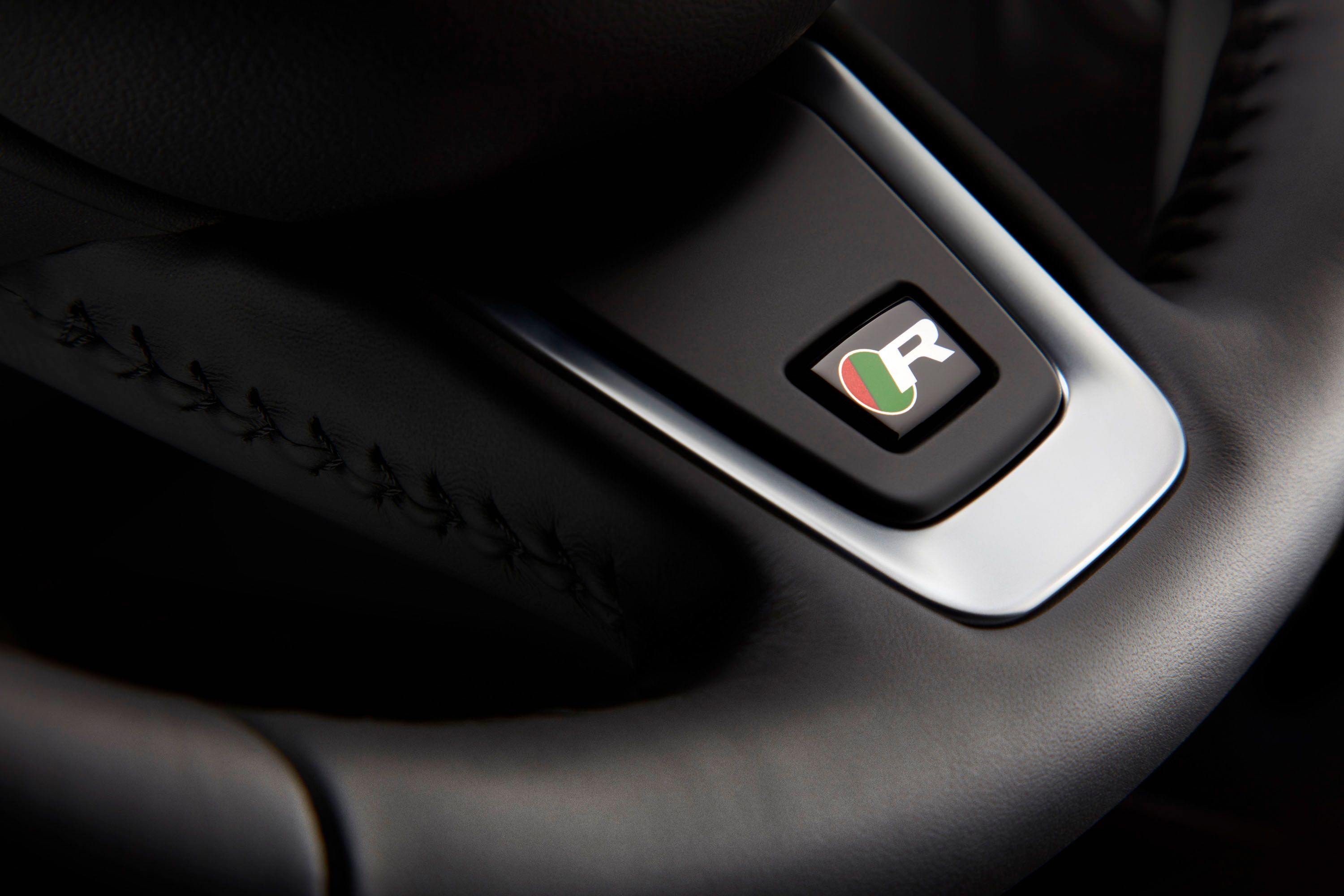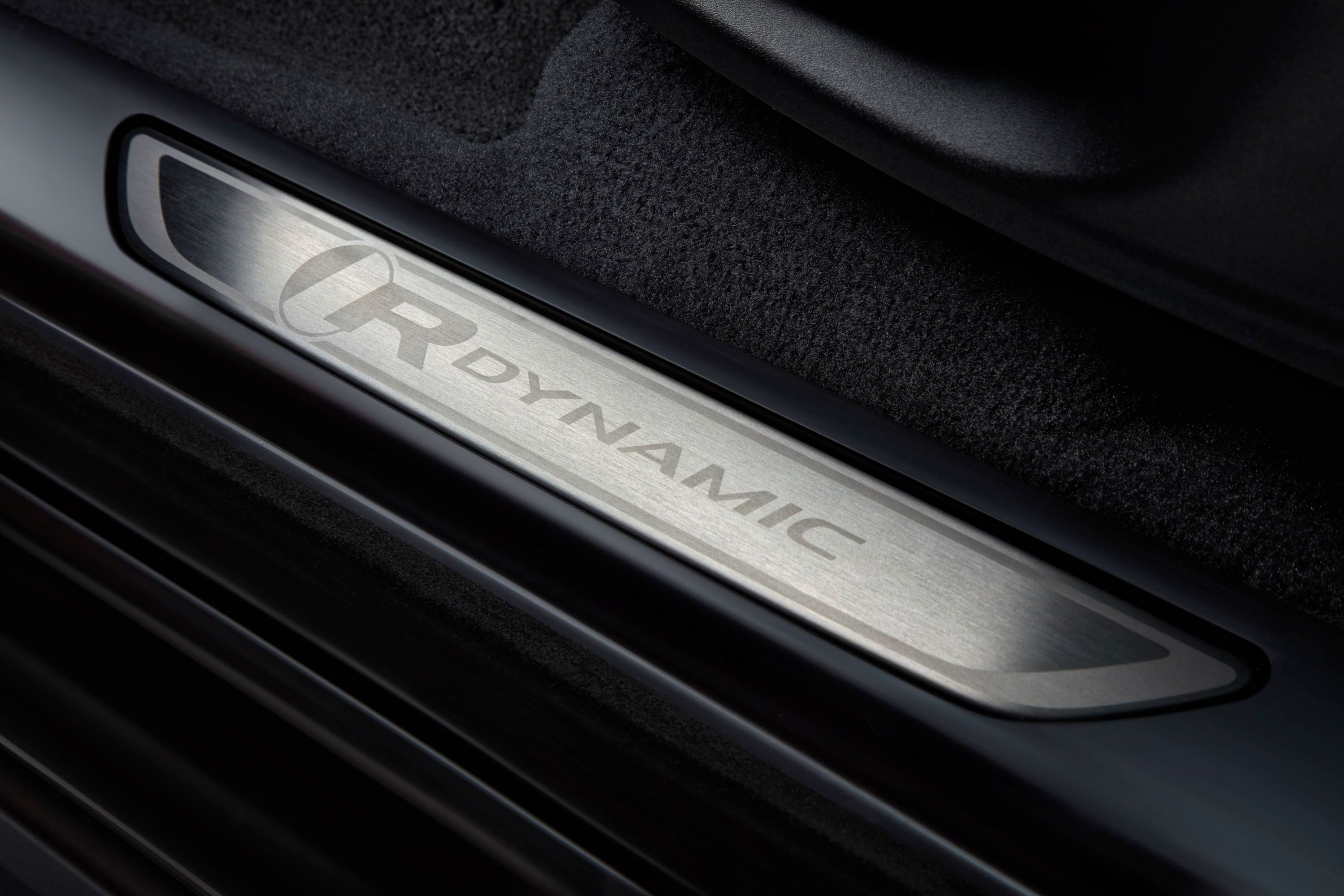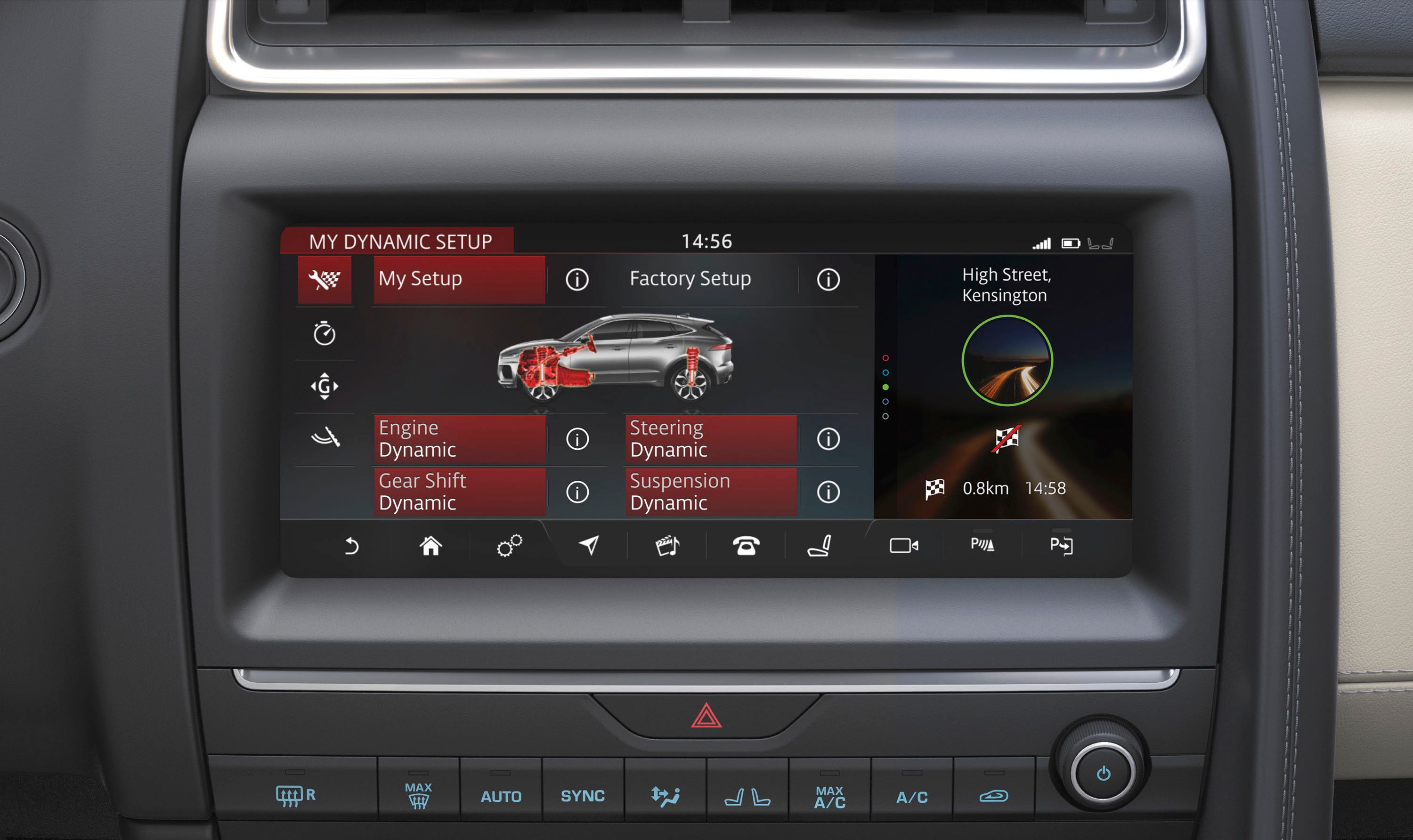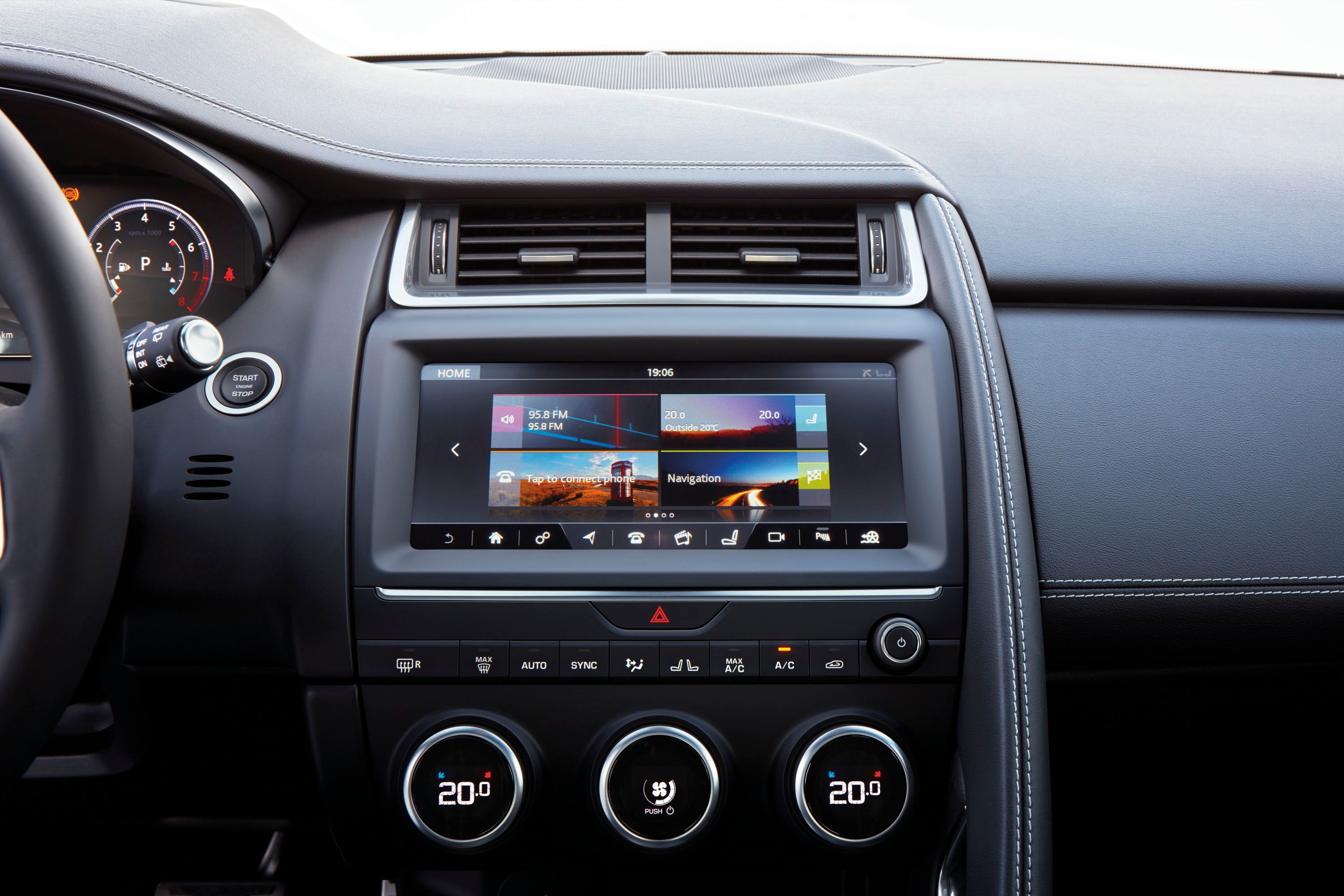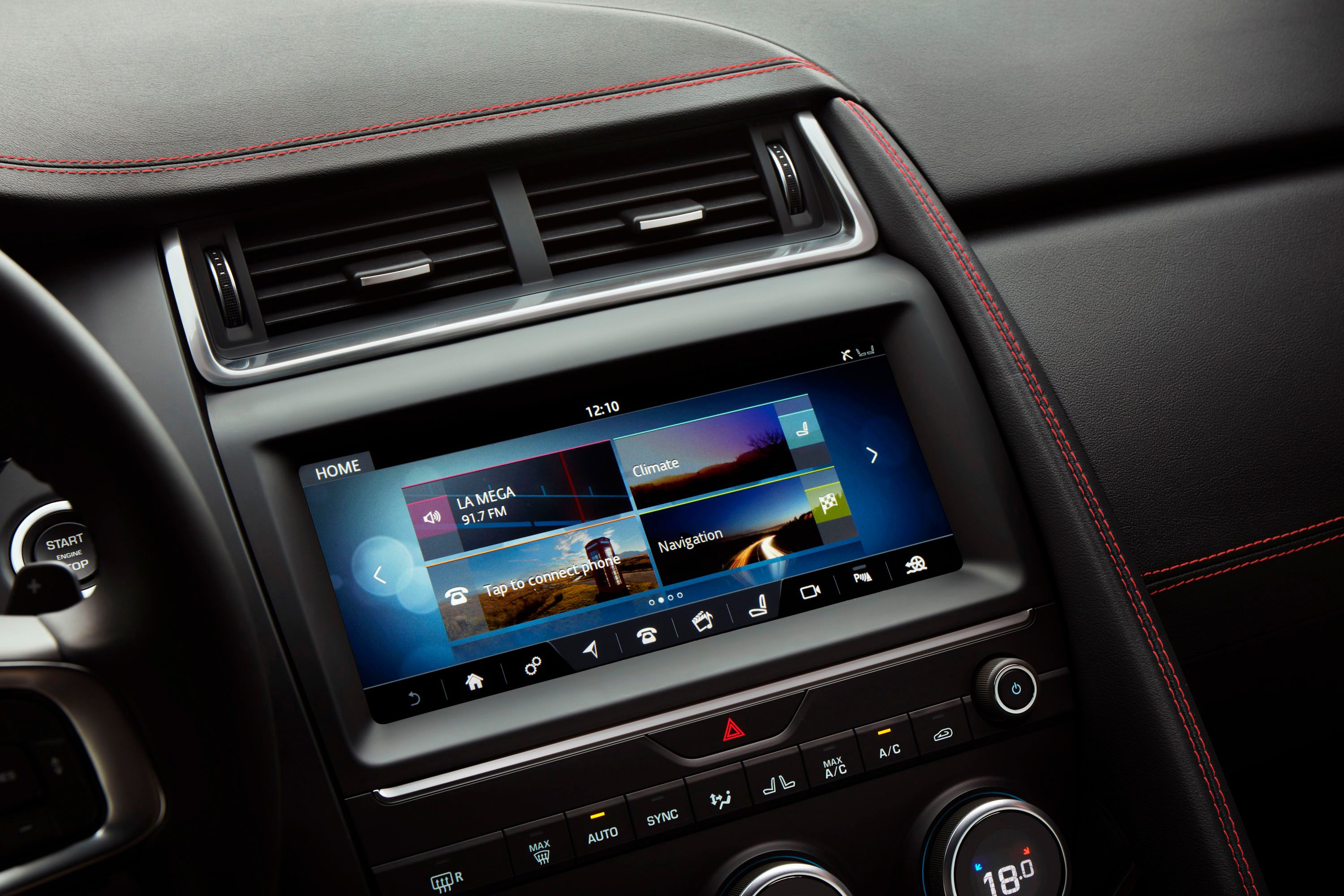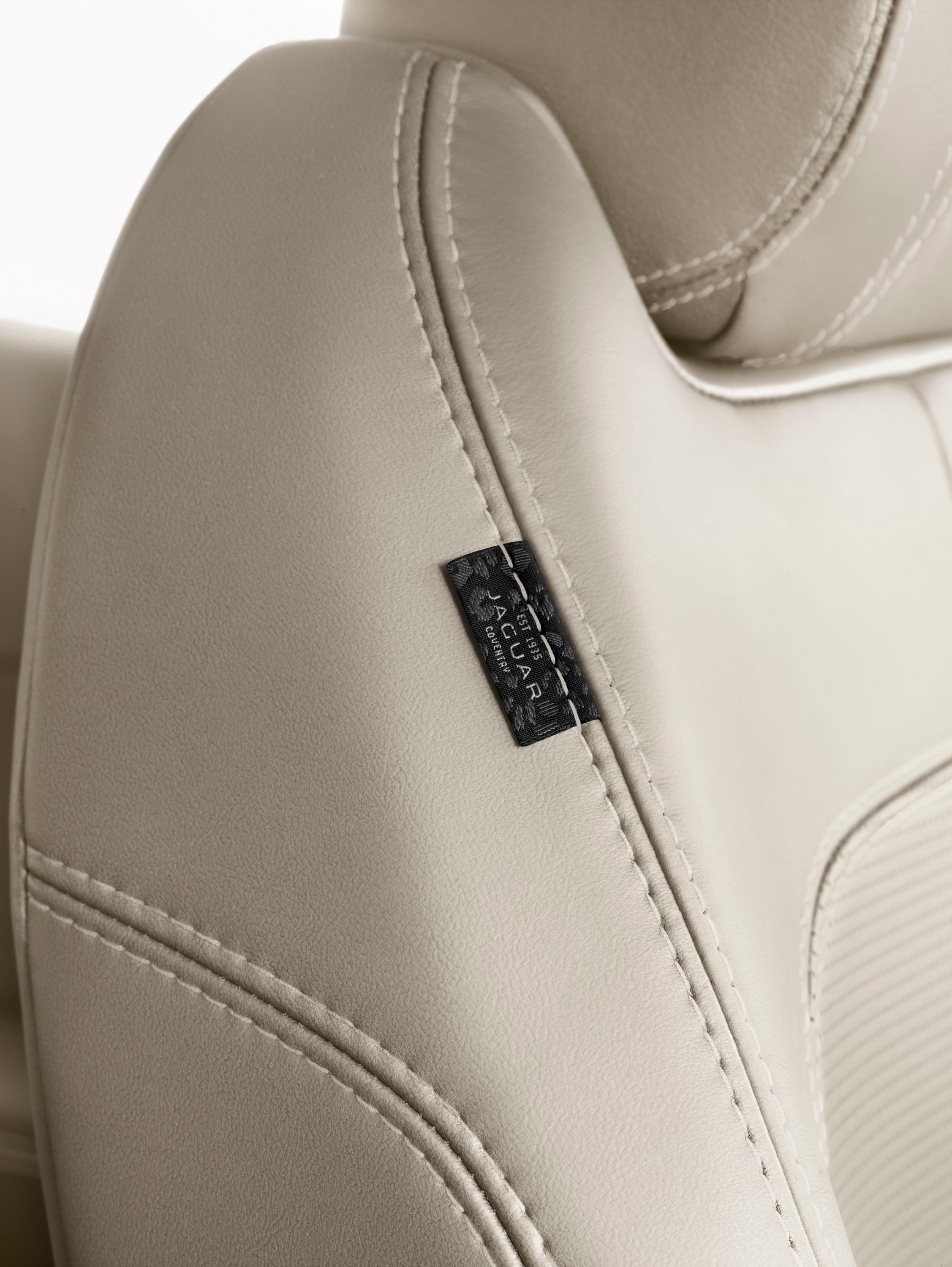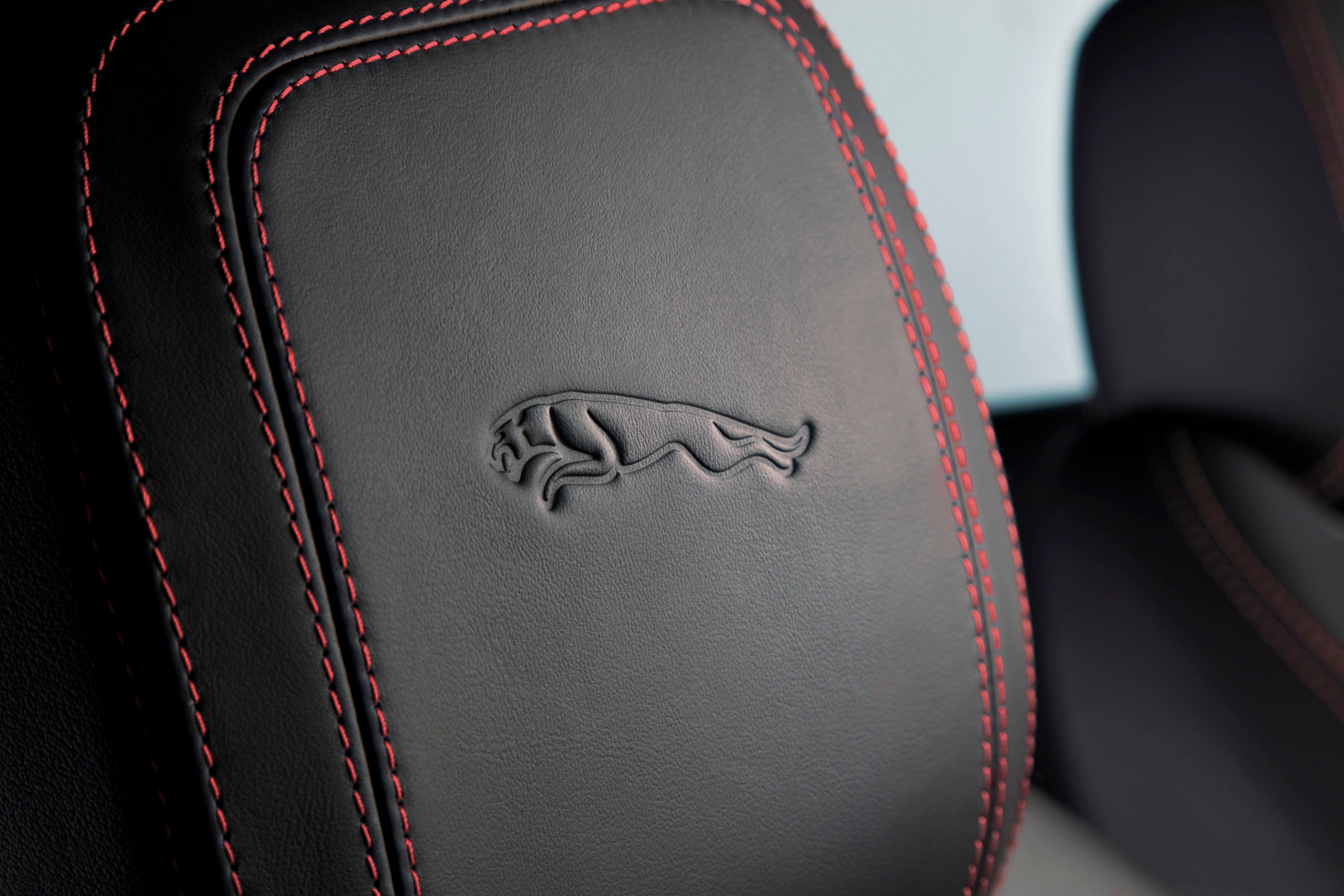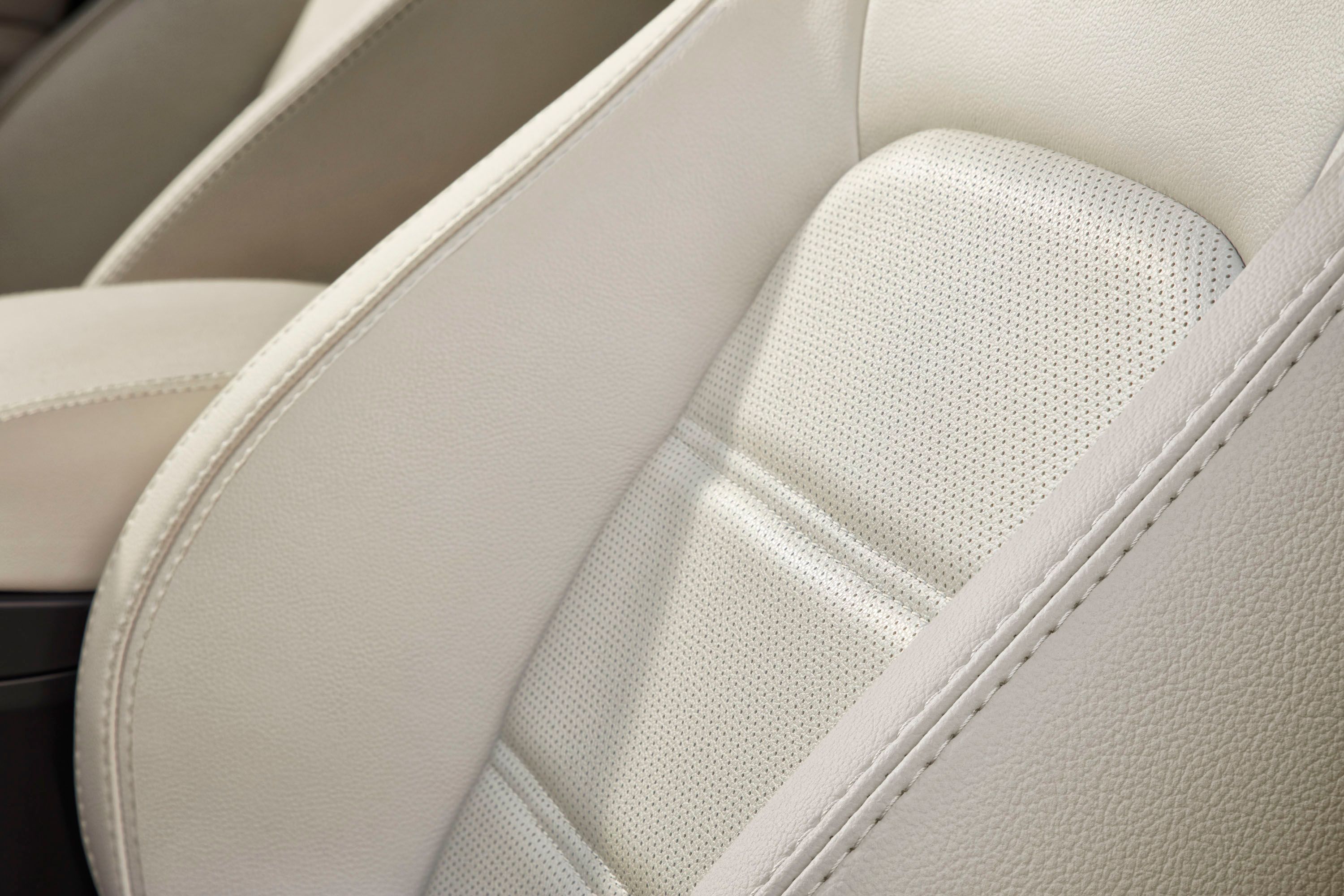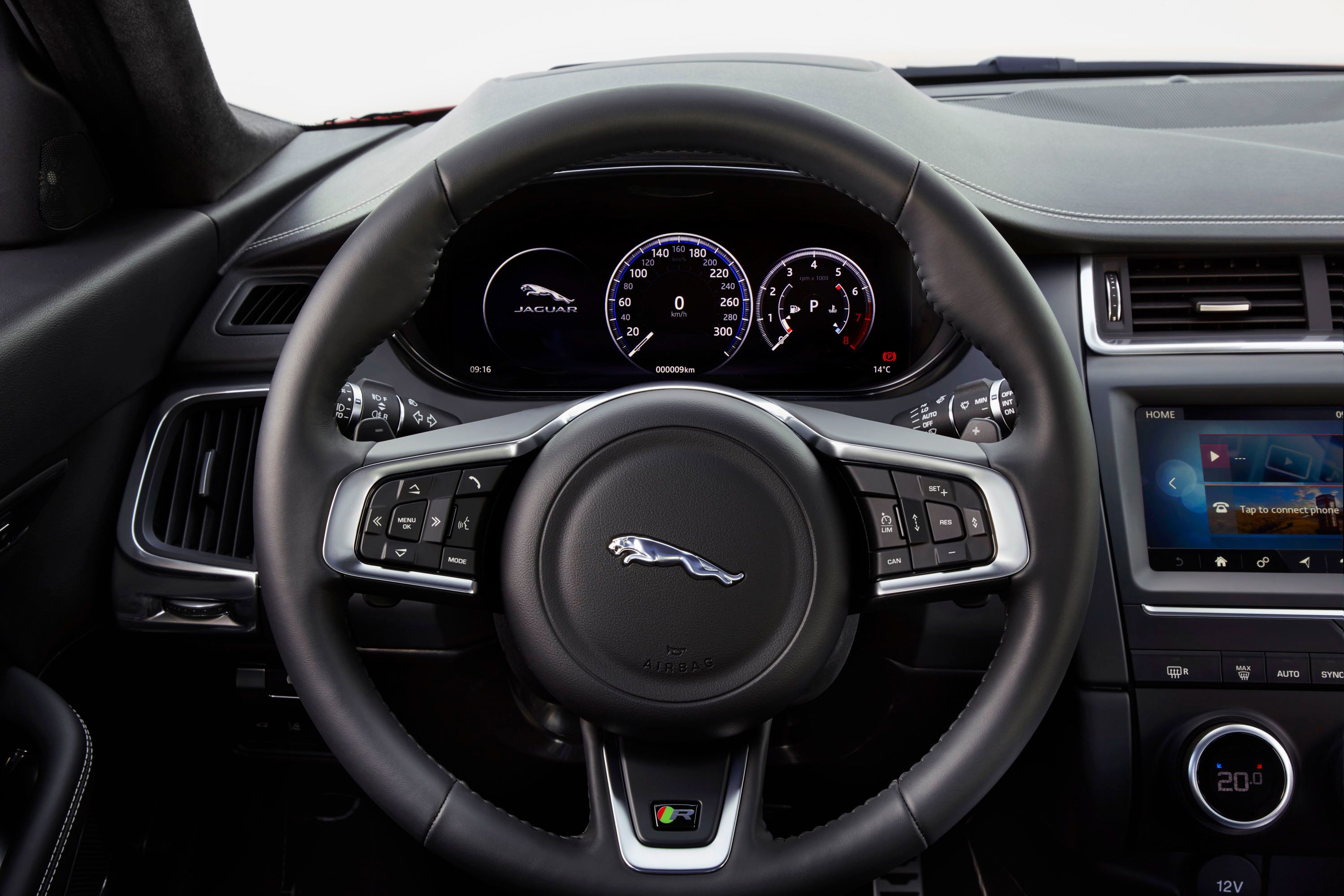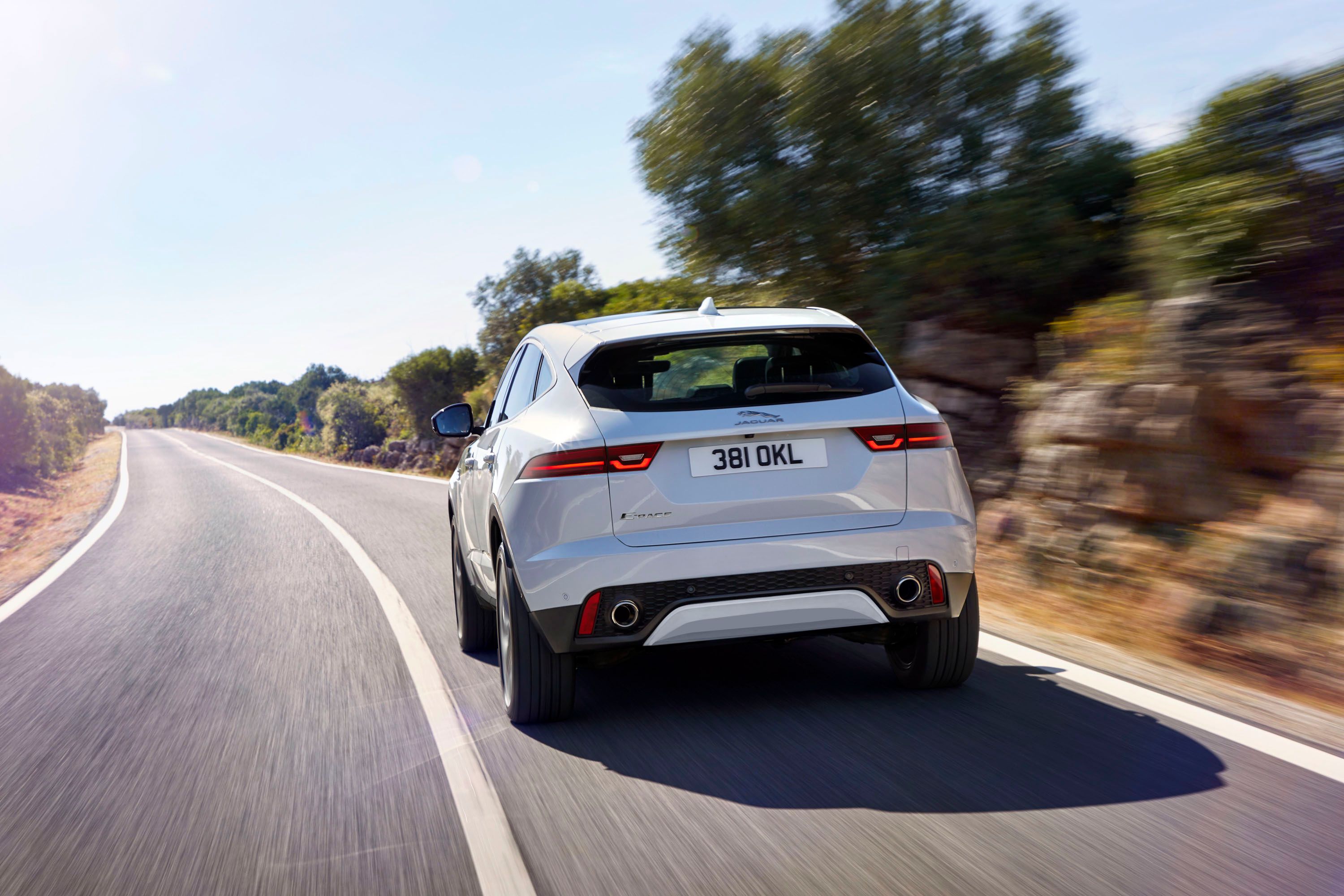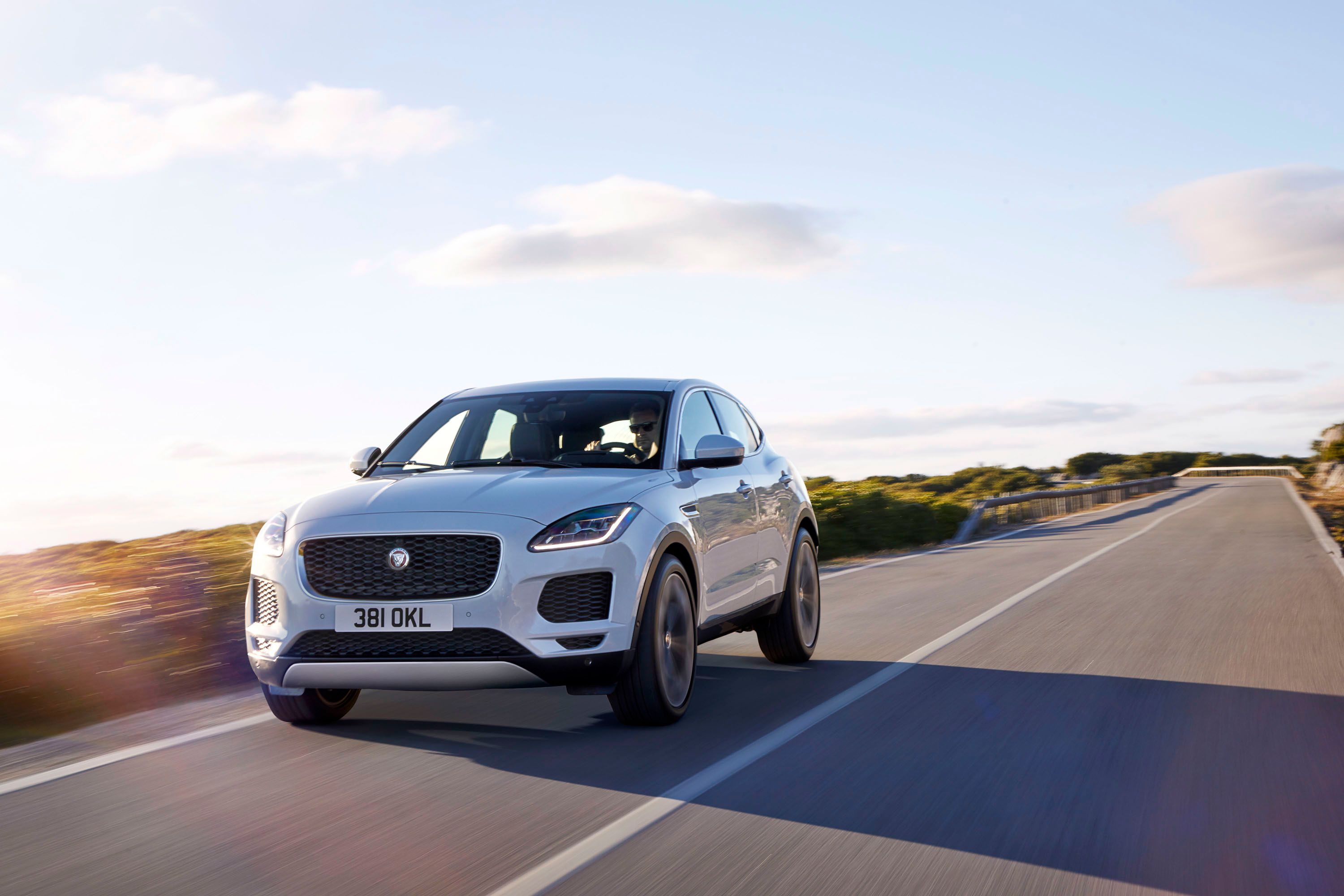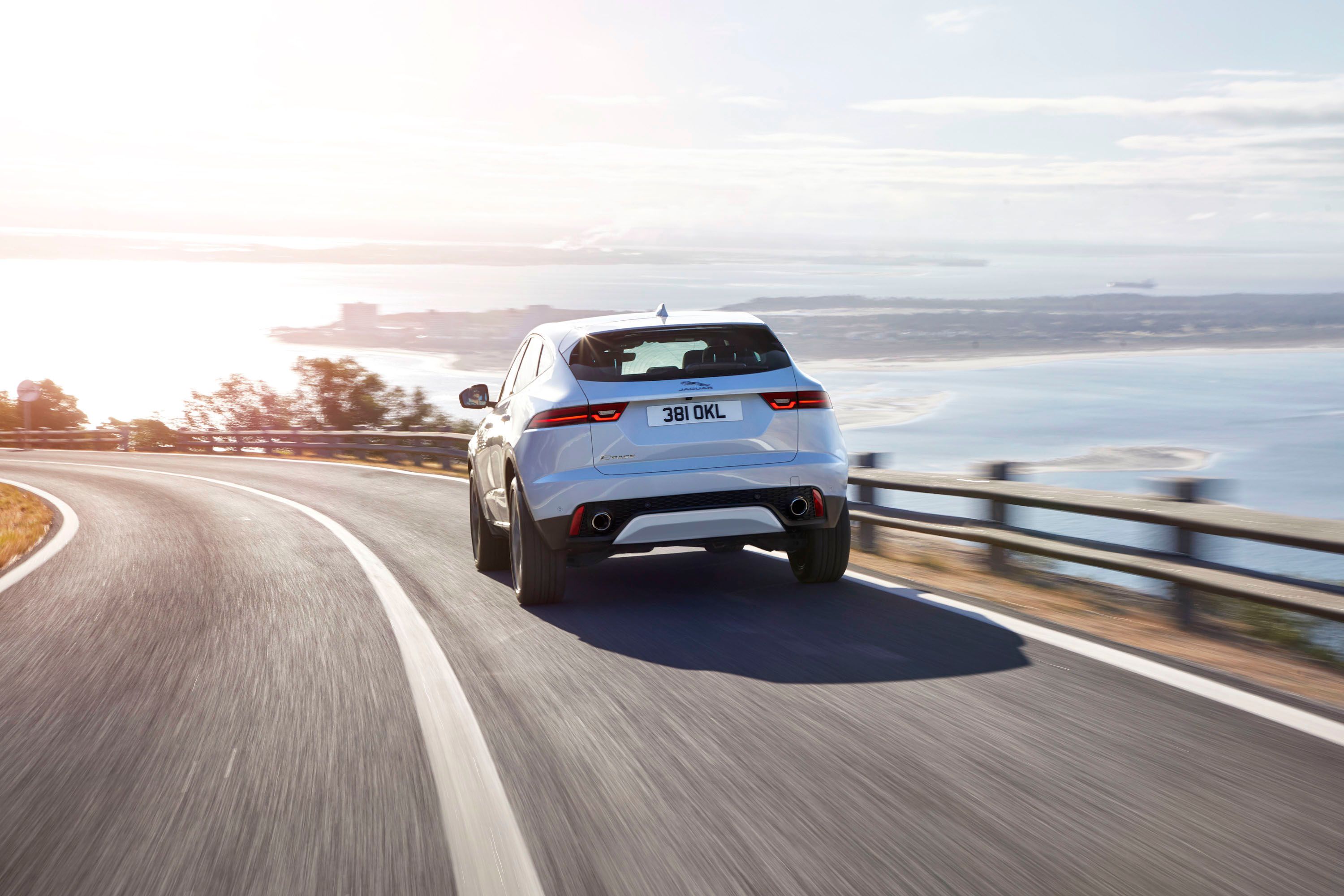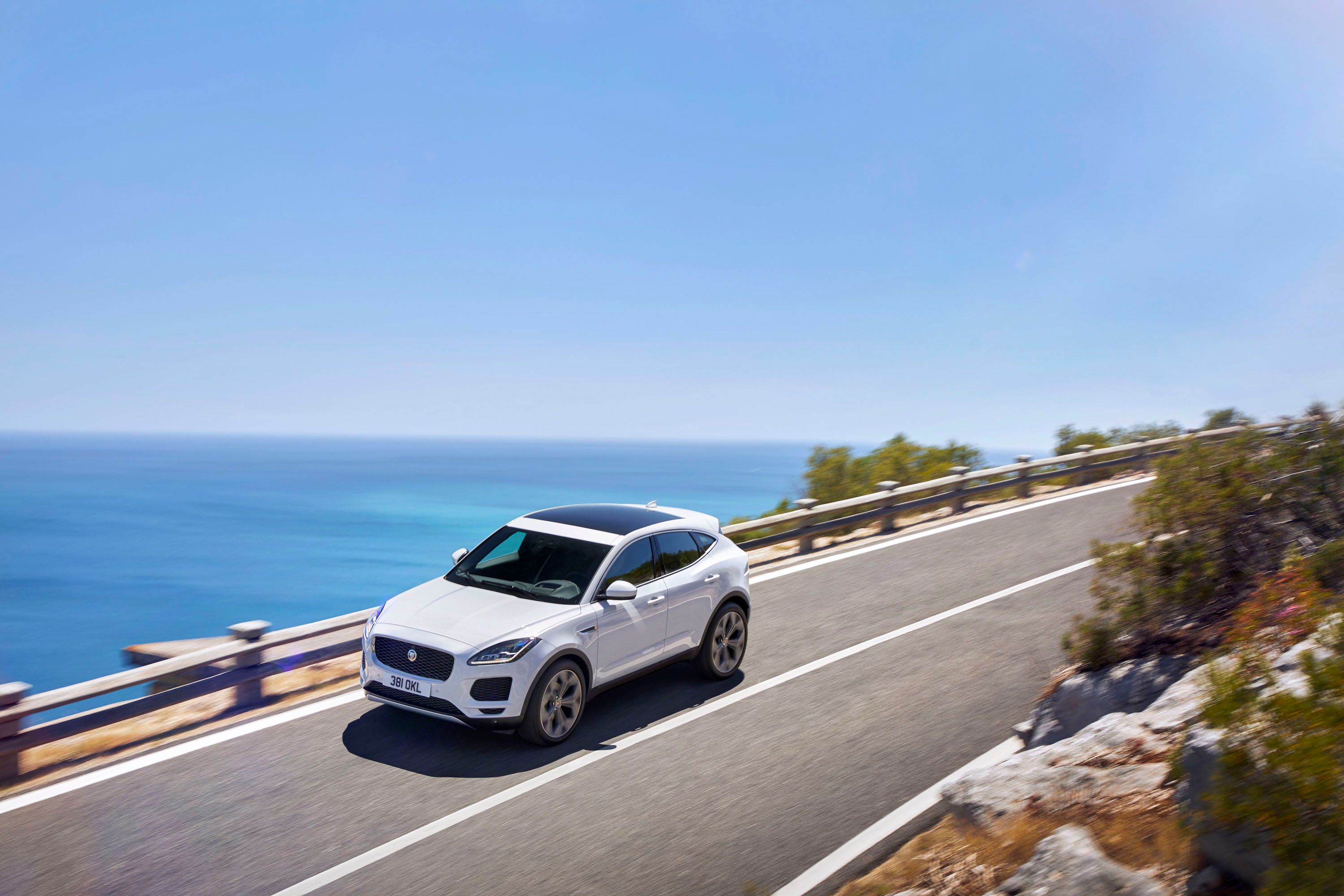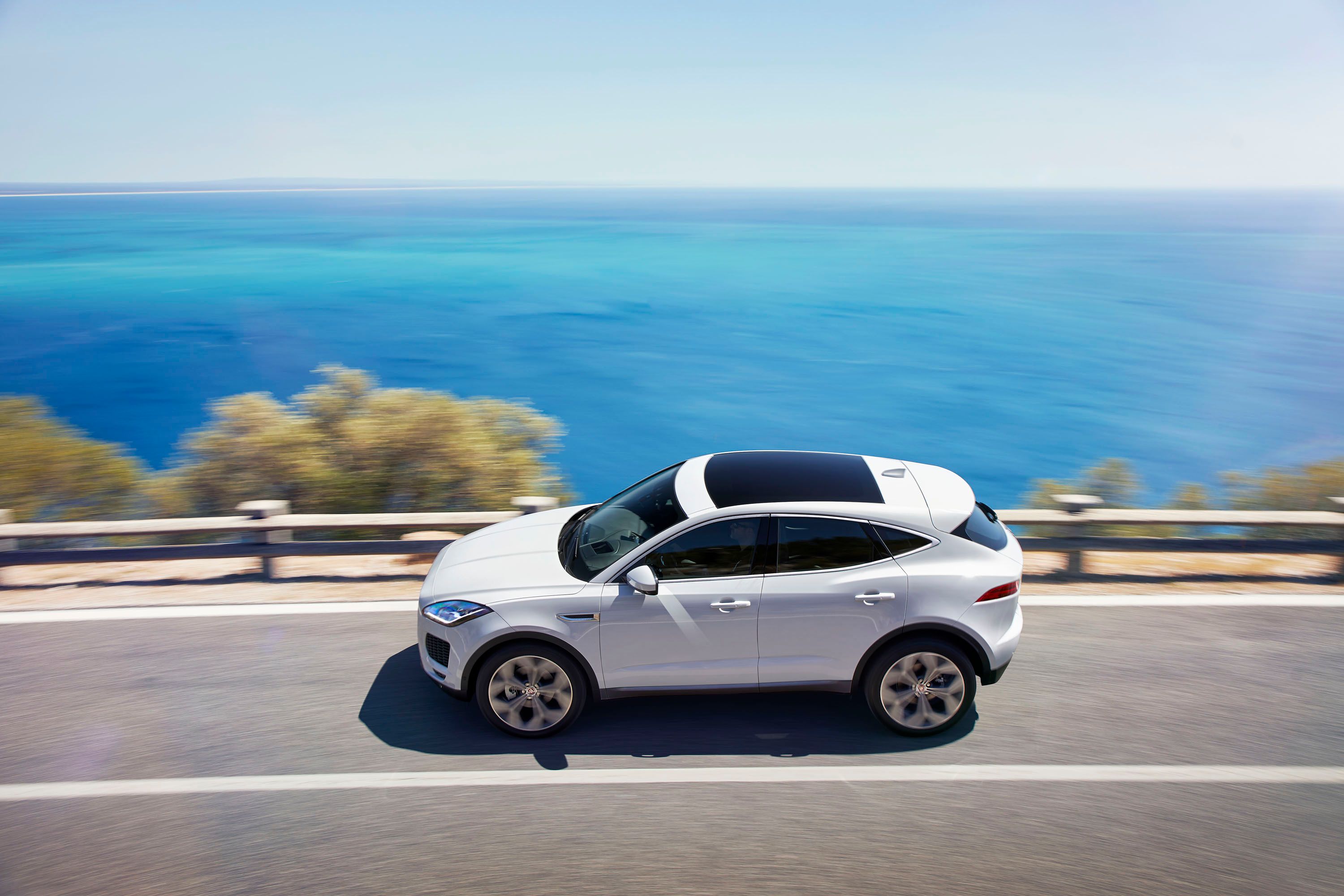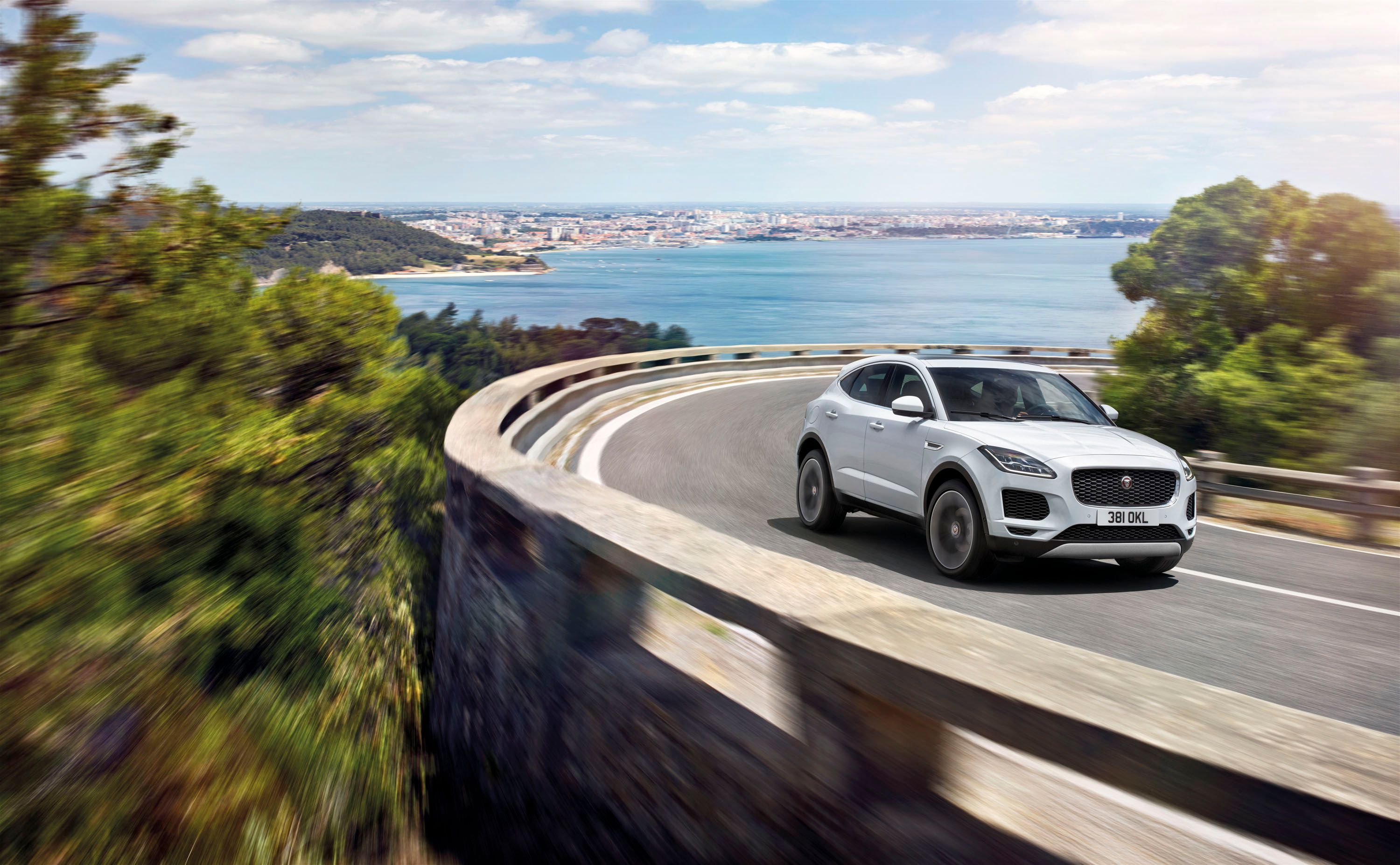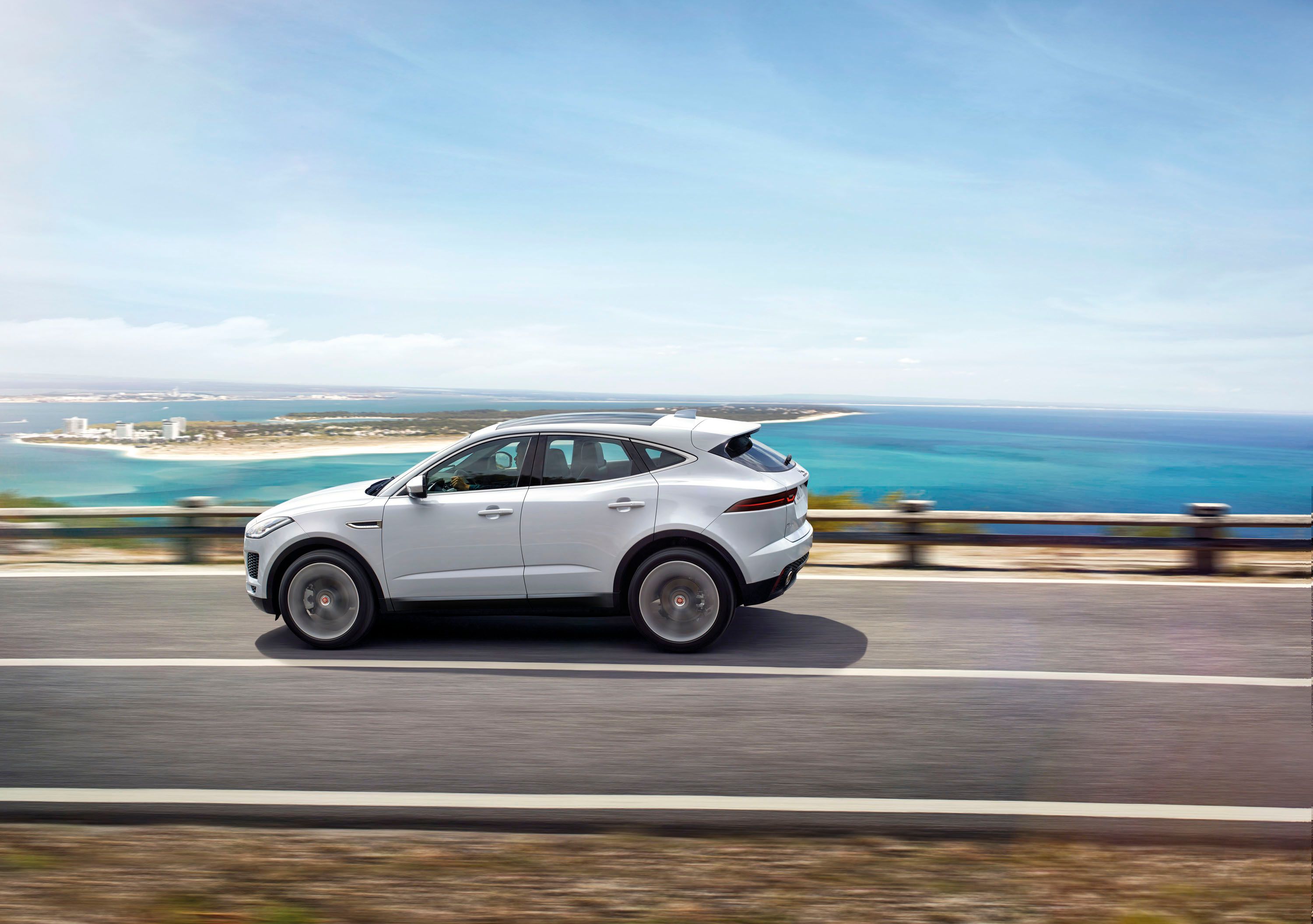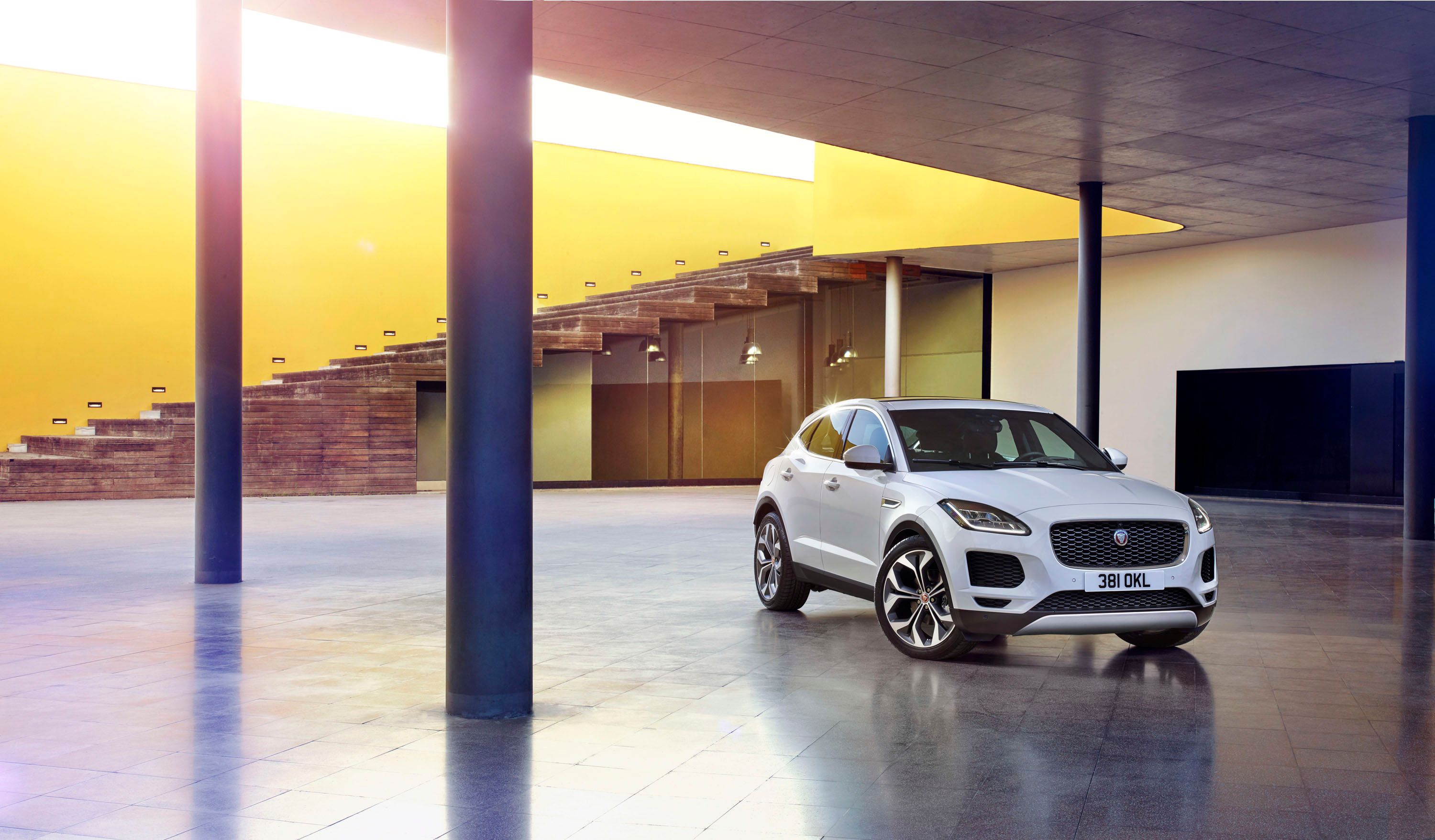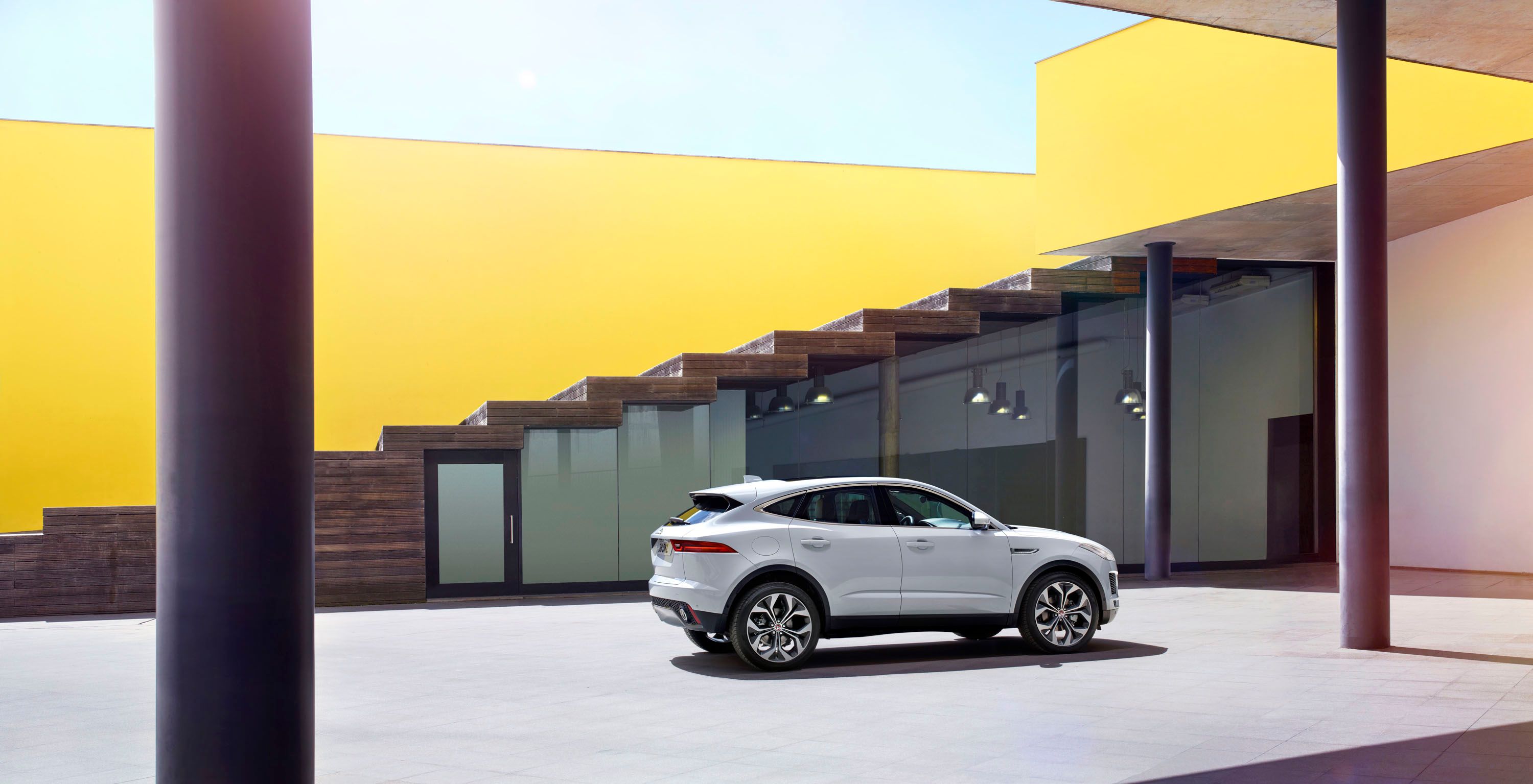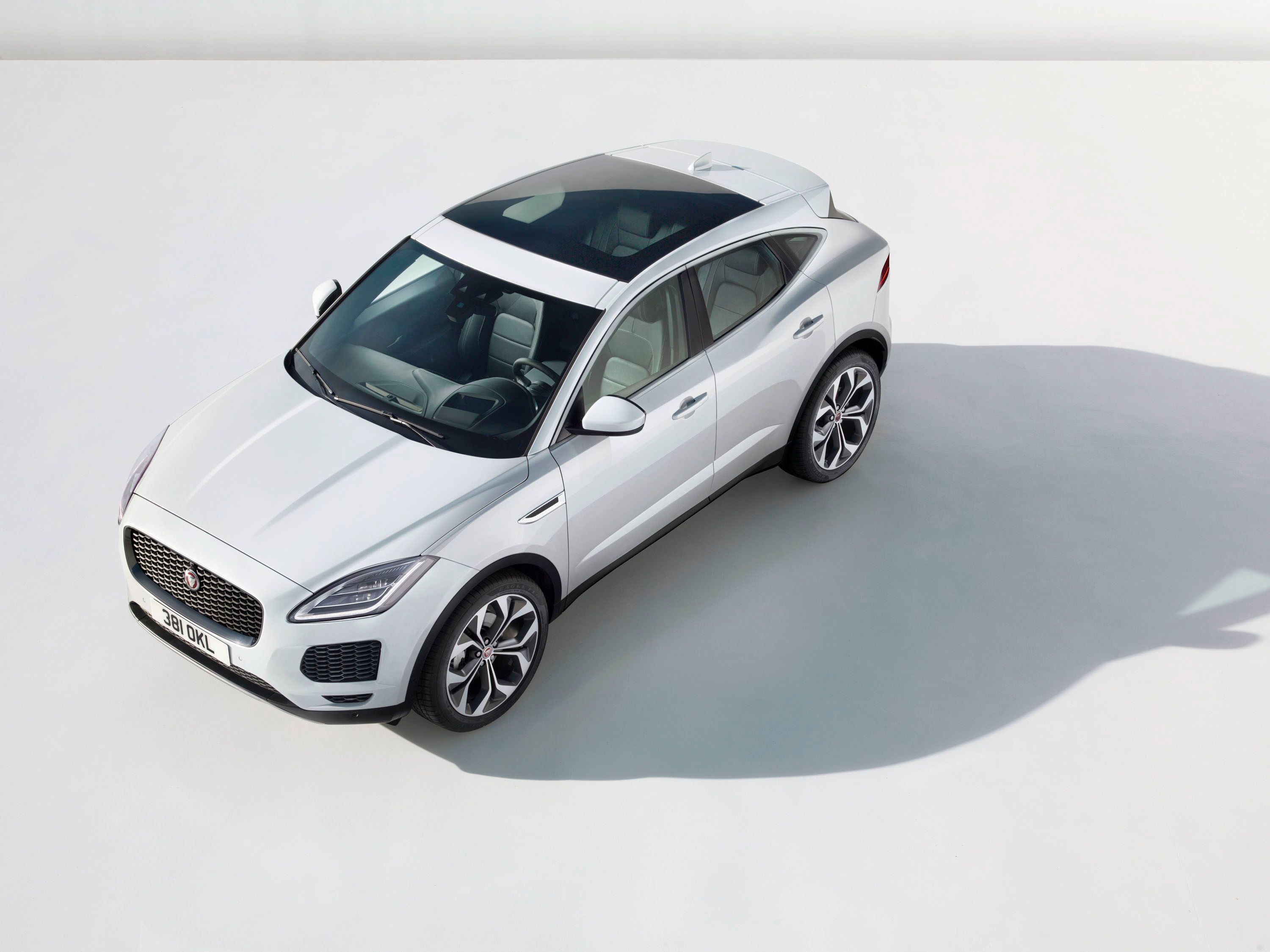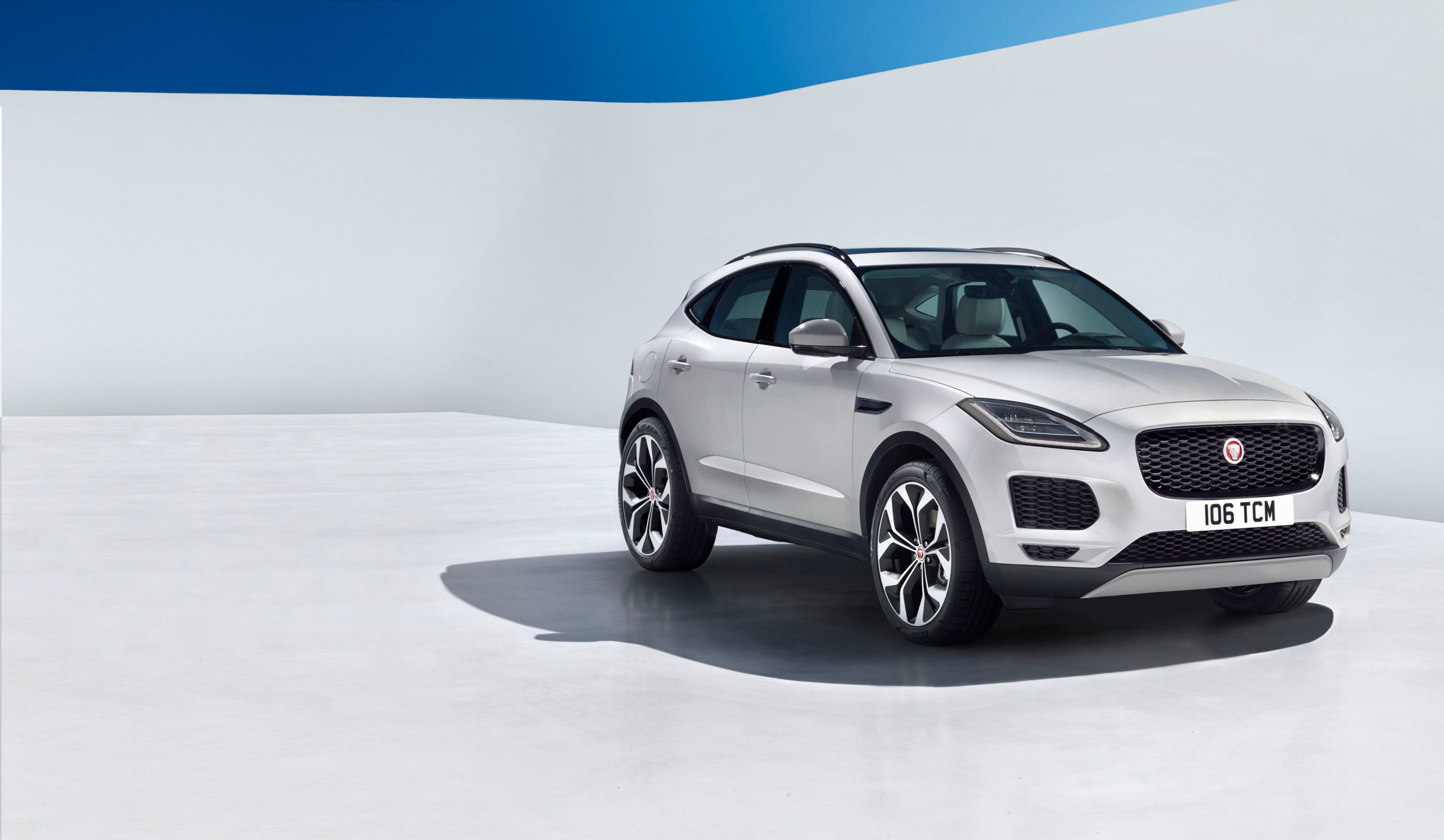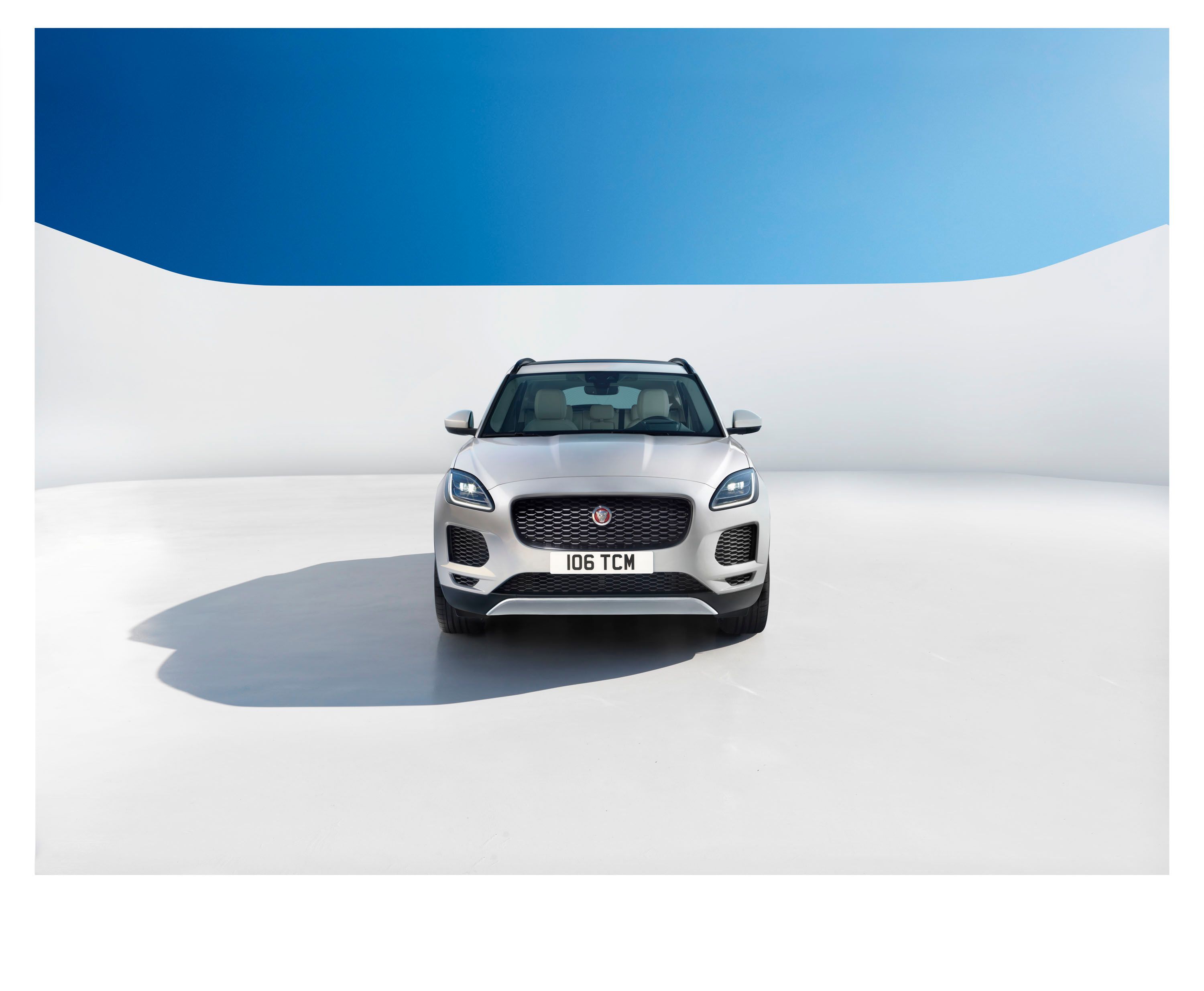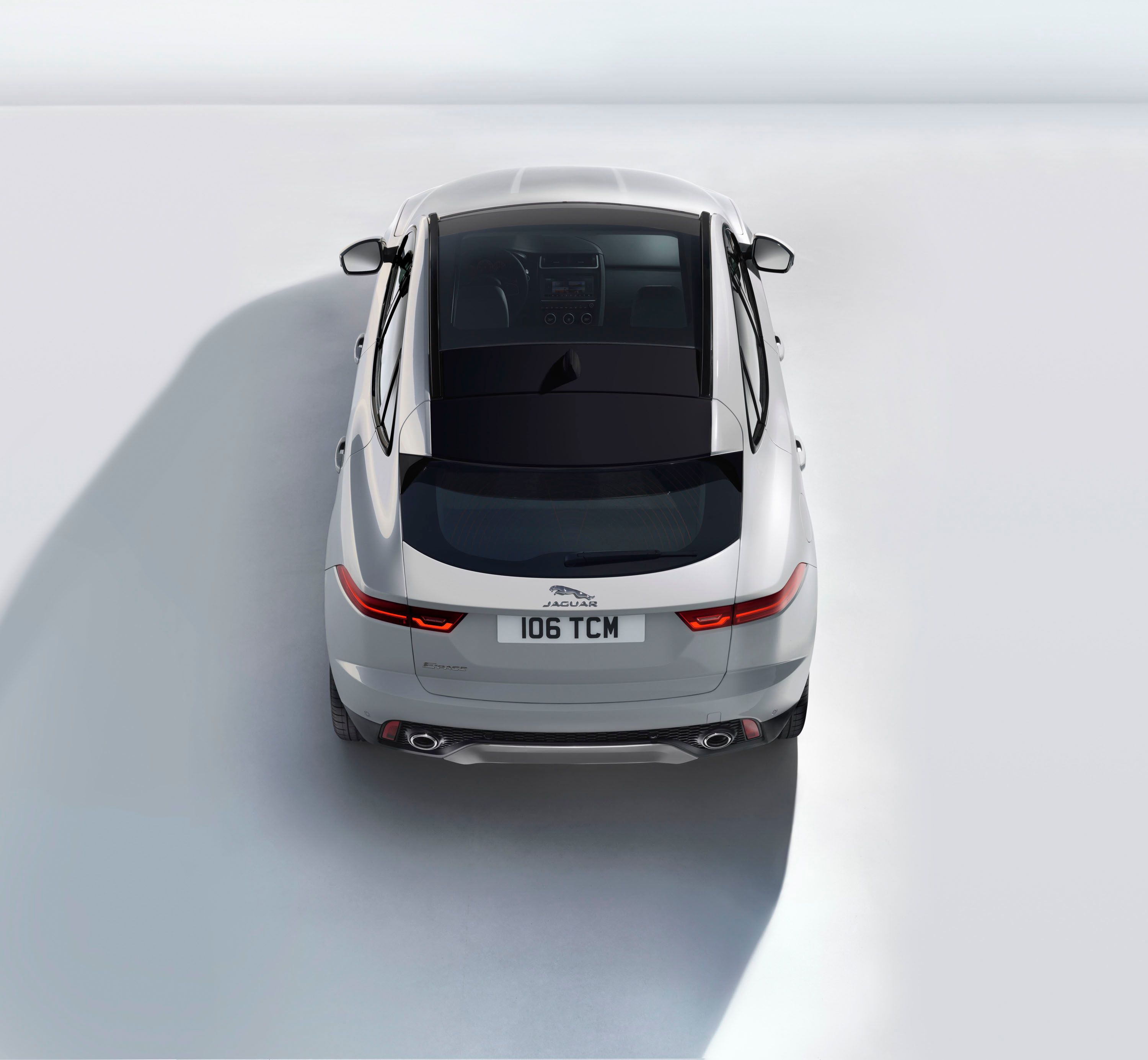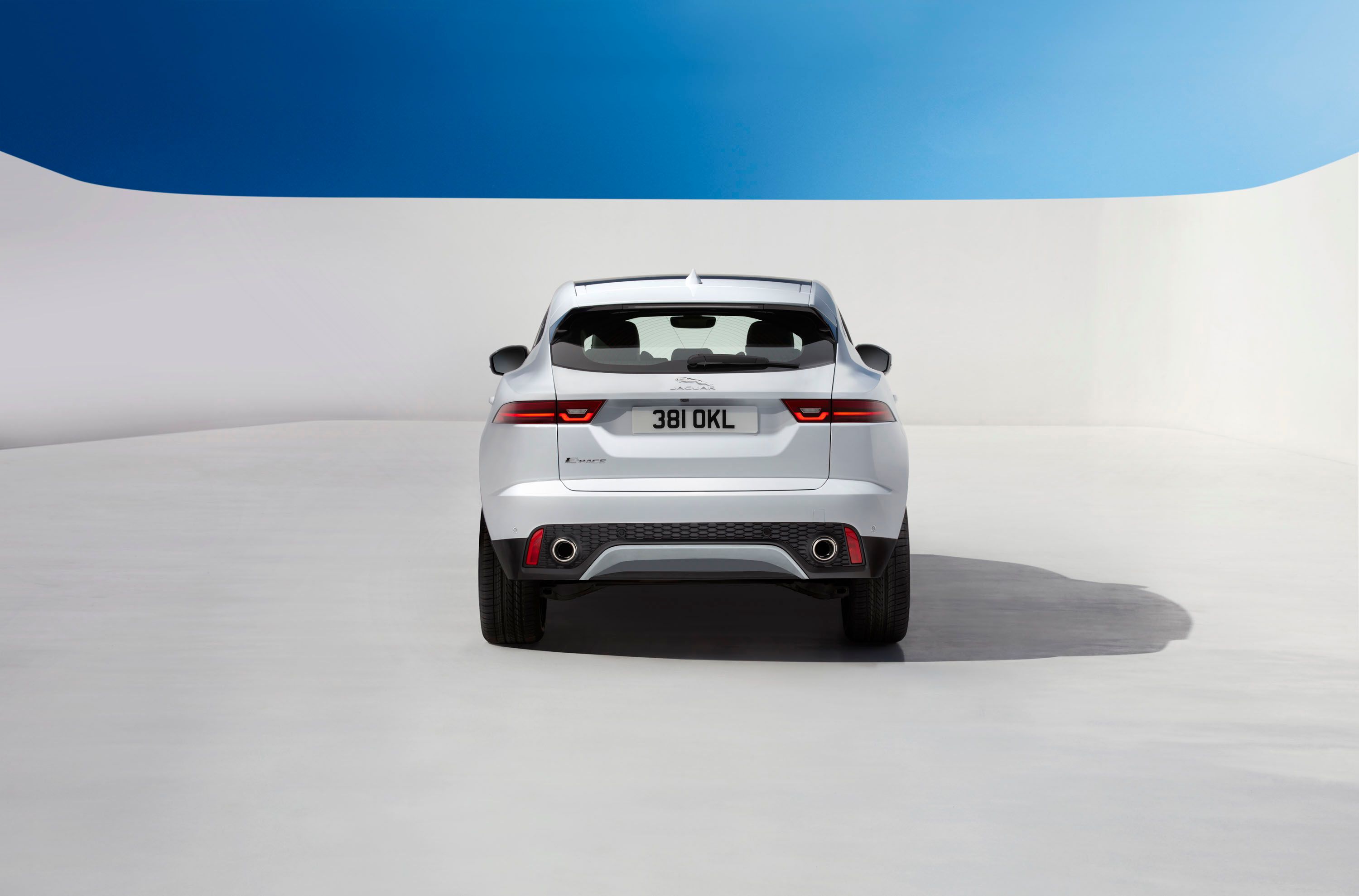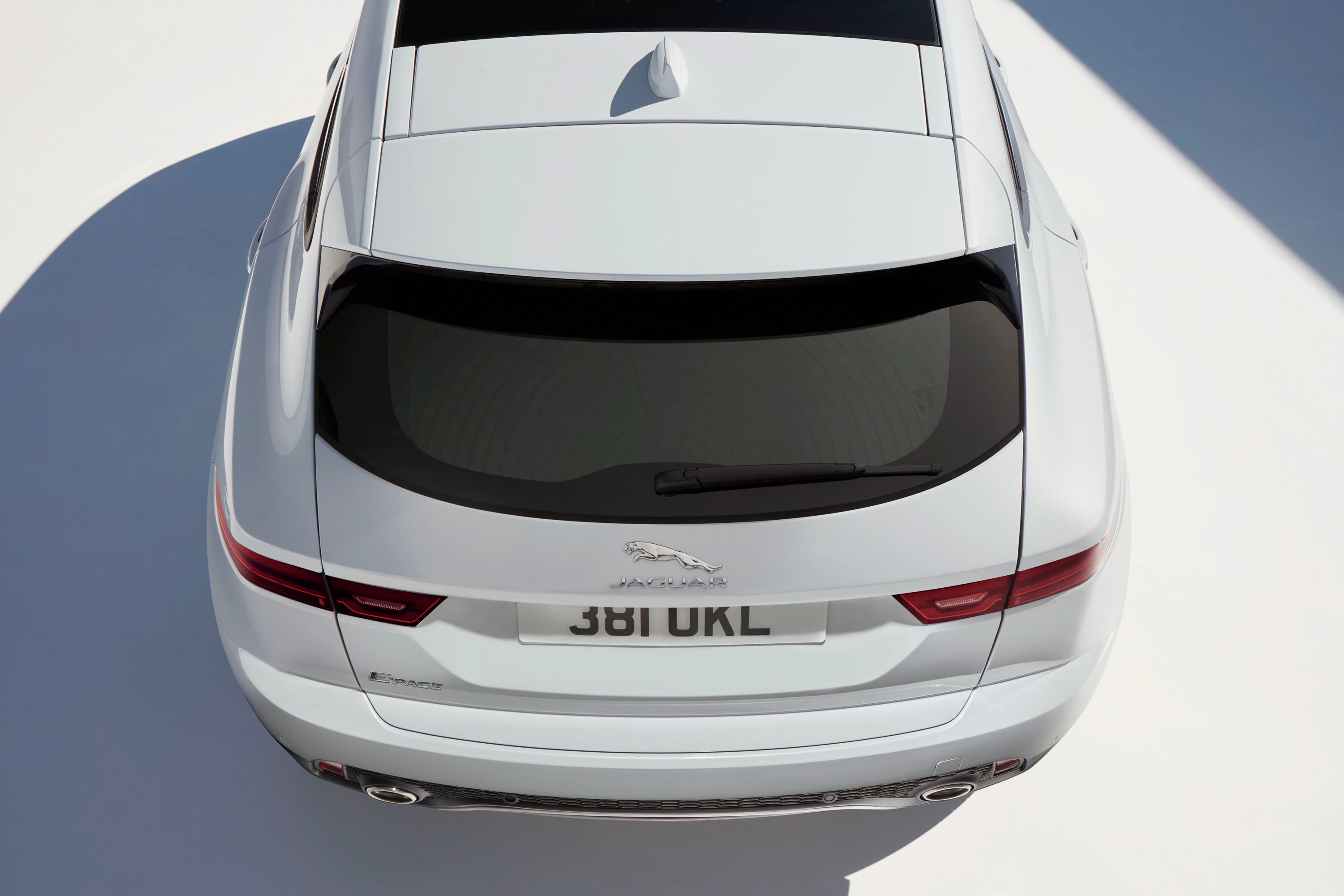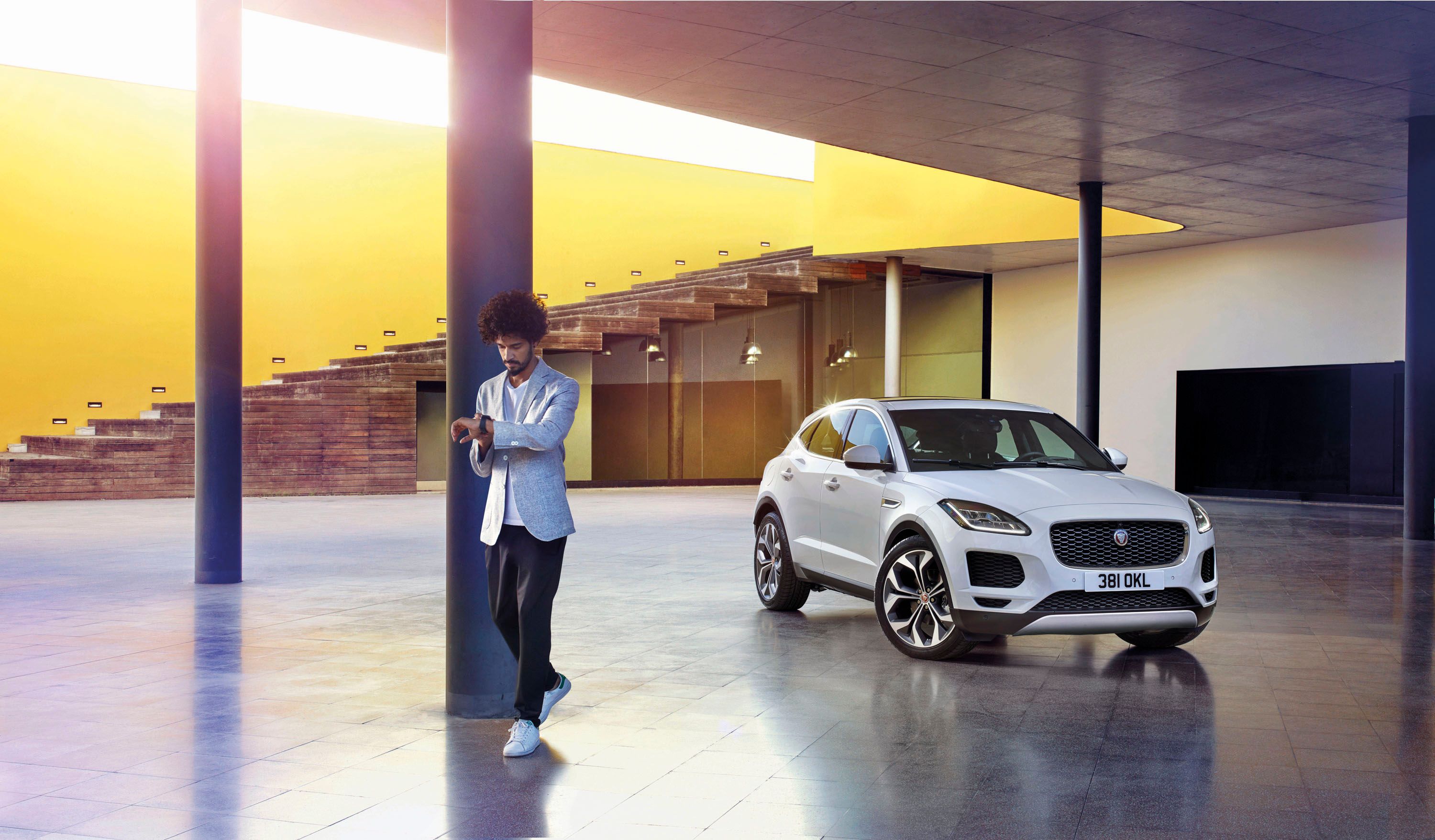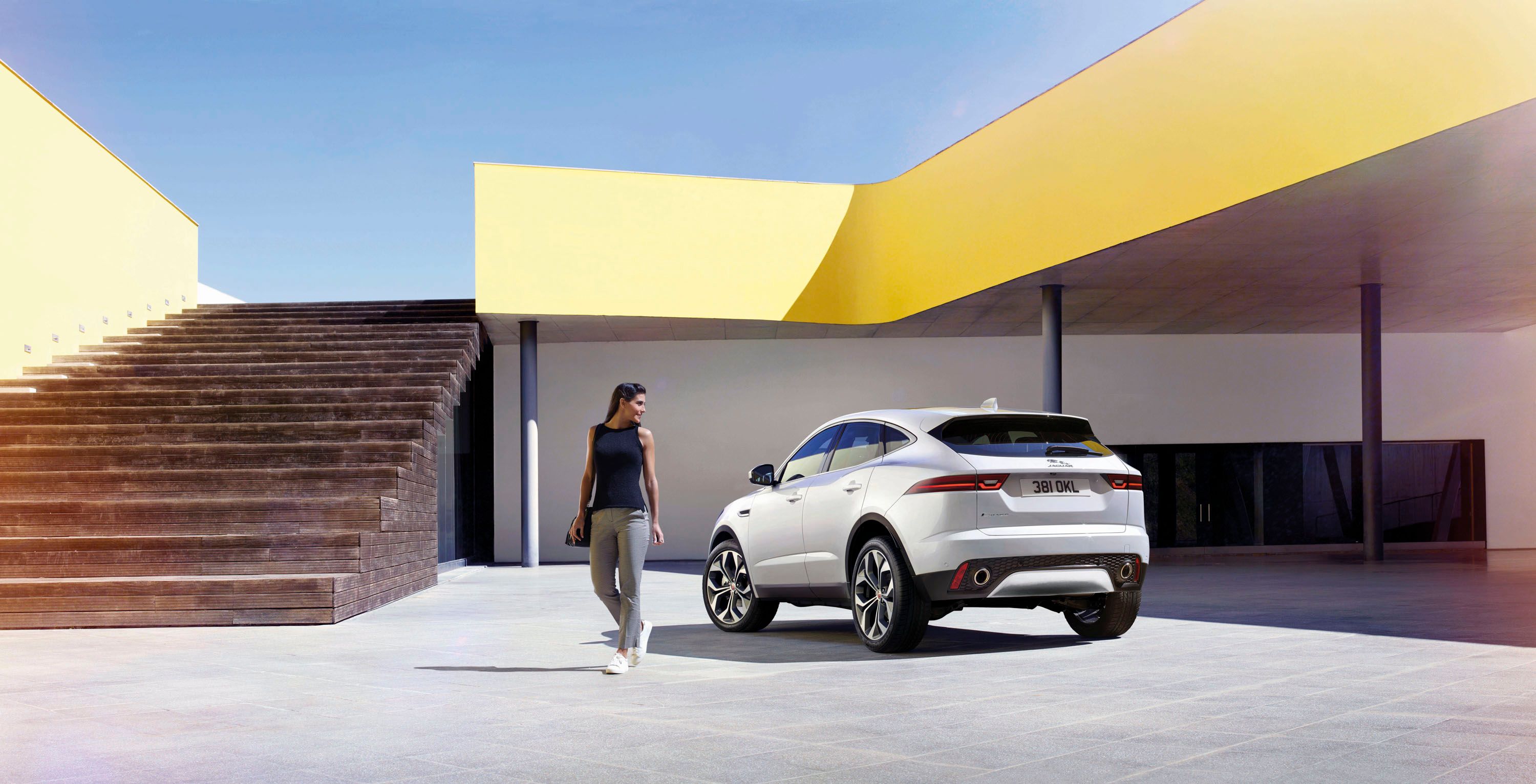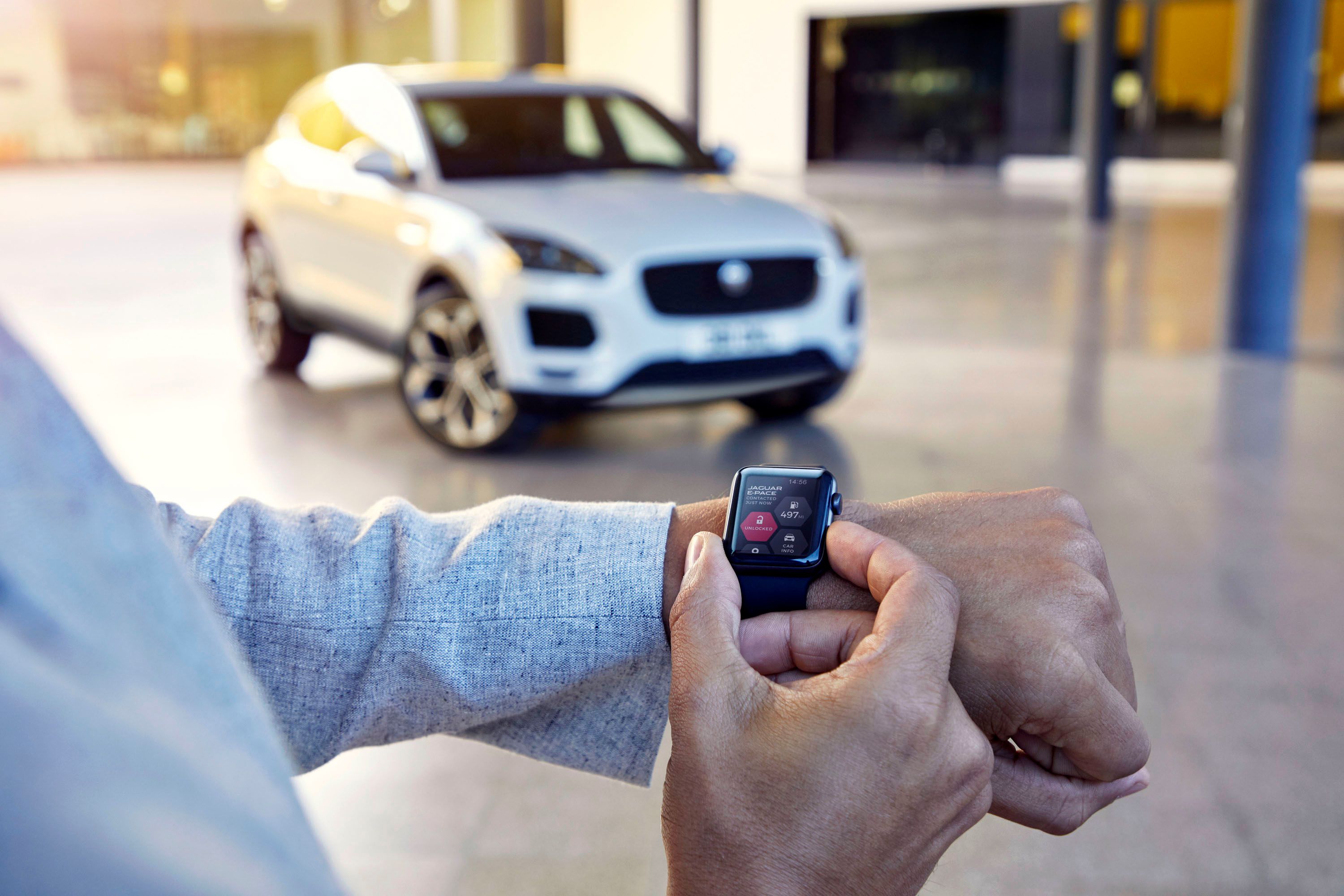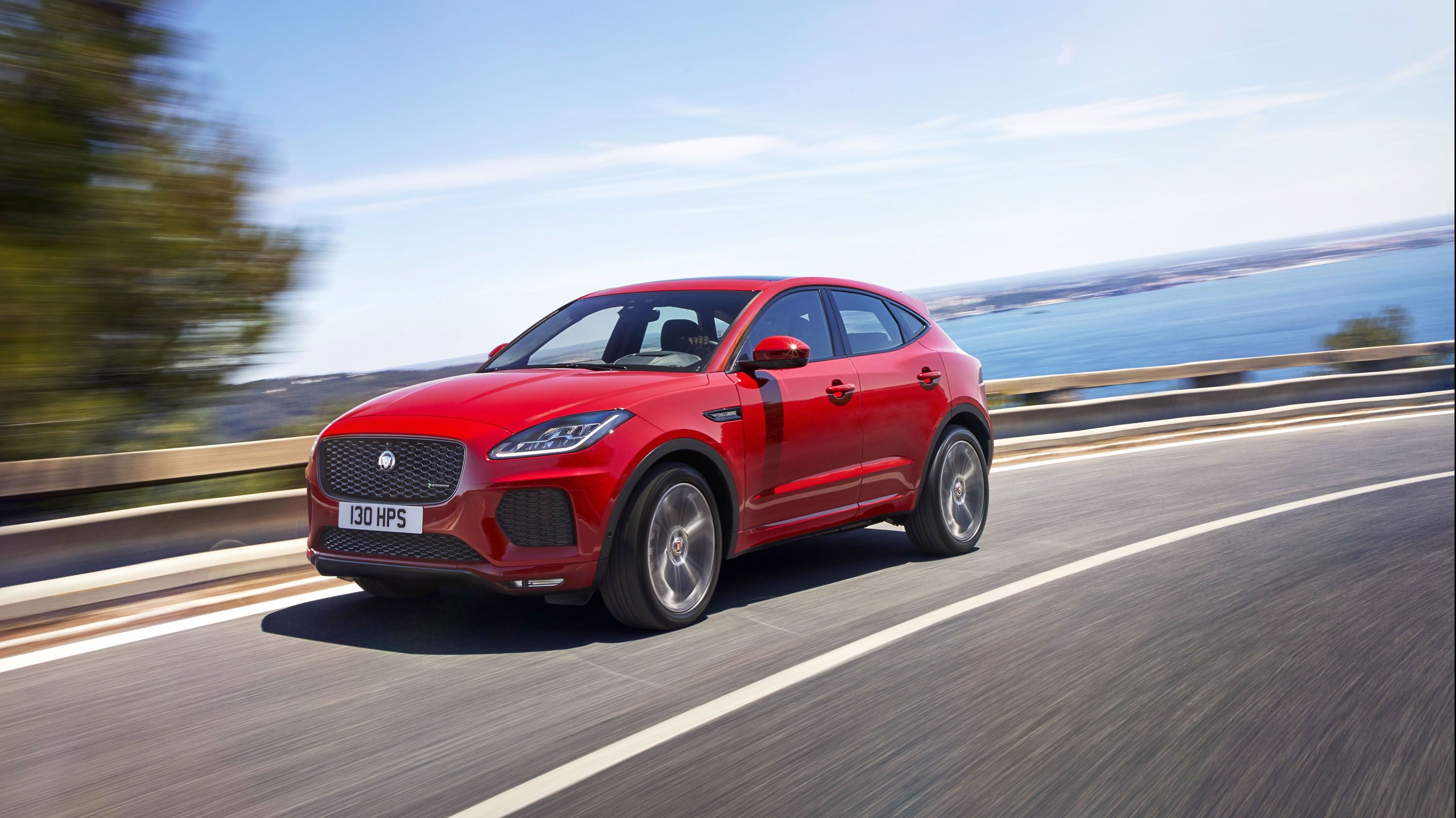Jaguar went on record back in May of 2015, saying it wanted a baby crossover to slot in below the F-Pace. It took a couple of years, and a few teasers to get to this point, but we’re finally here, and Jaguar has delivered its promise in typical Jag fashion. Sporting a simple, yet perfectly defined body and a technologically advanced cabin that’s as plush as it is attractive, Jaguar has practically redefined the compact SUV segment. With tons of interior space for its size, a sophisticated suspension system that provides a smooth ride, and a range of 2.0-liter gasoline and diesel engines that deliver as little as 147 horsepower or as much as 295 horsepower. But, there’s one major Caveat, it’s set to start out around $38,600 in entry-level form, and that puts it a bit more expensive than models like the BMW X1 and Mercedes GLA that it competes with.
With that in mind, you need to know that the E-Pace is a really big deal. It’s bigger brother; the F-Pace, has grown in sales by 44 percent through May of 2017, meaning that Jaguar’s design language and style philosophy is right in line with what the masses want. And, when you consider that luxury segment buyers are pretty picky, that’s saying a lot for a market that’s so crowded with SUVs at the current time. Needless to say, the E-Pace has a lot to live up to and, based on first impressions, I have to say this thing is going to be an amazing success, but we’ll talk more about that later. Does it have what it takes to put the X1 and GLA in their place, even with a significantly higher price tag? Well, let’s dive on in and take a good look to find out.
2018 Jaguar E-Pace
- Make: Array
- Model: 2018 Jaguar E-Pace
- [do not use] Vehicle Model: Array
Official video
Exterior
To be honest, the exterior design of the new E-Pace is very reminiscent of its bigger brother, the F-pace, but considering just how successful the F-Pace has been, you can’t argue with Jag’s logic here. On top of that, there are enough little differences to set them apart quite well. For instance, where the F-Pace has sleek, almost slanted-eye headlights, the E-Pace has units that are more cornered and open a little wider, almost reminding me of something you would see on a Porsche, really. The face corner vents on the E-Pace are also larger, giving it a slightly more aggressive look while the air dam and grille are a little larger as well. It does look good, and I honestly wouldn’t be surprised if we see some E-Pace inspiration go into the F-pace next time it’s updated. Back to the topic at hand, the E-pace features an attractive hood that doesn’t sit too high and isn’t too defined, matching overall design well, while the A-pillars are raked pretty steeping making for a longer windshield and really helping with aerodynamics. Jaguar even went so far as to hide away small LED fog lights in the lower corners of the front fascia – nice touch!
The side profile is dominated and highly characterized by a beltline that gently slopes upward toward the rear, toned rear haunches, smooth and perfectly executed front fenders, and a well-defined bottom side. The rear stationary glass comes to a sharp point, which makes the rearmost pillar thin in the rear and provides for the swooping beltline while layout of the glass itself is curved, providing just the right look, and making it a little-less boxy in comparison to the F-Pace. The front fender is relatively smooth and blends in nicely with the front fascia while the vent in the fender, well, that reminds us that this is for sure a Jag Pace model, right? The black cladding that runs along the bottom provides some protection for the body’s edges, but also provides some style as it is a little more contrast to the overall picture. It’s not too thick and not too thin – even around the wheel wells. Honestly, it’s just the right size all of the way around. Down below the body is defined just a little better than that of the F-pace, giving the E-Pace a more dominant side profile while that curved body line on the rear door and rear quarter (just like on the F-Pace) gives it a hint of muscularity.
Around back, we find an attractive and well-defined rear end. Clearly, the E-Pace hasn’t been skipping the squat rack at the gym, that’s for sure. The rear hatch is dominated by a sharp bend in the center and short glass, while the three-piece spoiler on top is optimized for aerodynamics. The taillights are sleek and sexy, being joined together by the defining bend of the rear hatch. The rear hatch has a unique bend at the very bottom, allowing it to blend in perfectly with the body lines of the rear fascia. Down below the rear fascia gets a slightly recessed insert that serves as a home for the integrated exhaust outlets and a pair of corner reflectors while the opening at the very bottom is a mirrored version of the air dam up front – a nice way to tie the front and rear ends together.
The competition
|
2016 BMW X1 |
2018 Mercedes GLA |
And this is what’s it’s all about. This segment is so competitive, with no lack of options to choose from. Two of the main contenders that Jag is going up against include the BMW X1 and the Mercedes GLA. The X1 is the oldest of the three we’re discussing today and was the model that forced Mercedes to create the GLA and Audi to create the Q3. Needless to say, the German rivalry is strong. Oddly, you’ll find that the E-Pace, X1, and GLA, all share a fairly similar look. Sure, they are all different in their own right, but that all carry some of the same styling, making your decision of which one to go for even harder. The X1 recently entered a new generation for 2016 and as a sporty yet muscular look. Up front, you’ve got the standard Bimmer Kidney Grilles, to match a larger air dam and fairly small corner intakes (especially for the automotive market these days) The side profile is dominated by elegant, strategic lines create a look of length on an otherwise small SUV. Around back, the X1 has a rather bubbly appearance with rounded headlights and a little extra body cladding down below. The exhaust outlets are integrated into the lower trim cladding but aren’t completely surrounded. All told, the X1 is attractive and sports that traditional BMW design.
|
2016 BMW X1 |
2018 Mercedes GLA |
Stopping by your local Mercedes dealership will have you looking at an attractive and sporty little crossover that really reminds me more of a taller hatchback than a crossover, especially in GLA45 form. It does, in fact, sit lower that both the E-Pace and the X1, and like the E-Pace, as a big dominant grille up front that screams supremacy. It does have larger air intakes in the front corners, but they aren’t as big as the jag, so the Jag definitely wins that award, but they do sit in harmony with the size of the air dam and the headlights. The side profile has a very dominant body line that runs from the front lights to the rear, with a smaller, smooth line in the middle of the doors for added style. What I really like the most about the GLA, however, is that from the right angles, the door glass is almost seamless. It’s very clean and attractive looking. Around back a long overhang casts some shade on the rear glass which is only half of the large hatch that pretty much dominates the rear. The fascia is sporty and attractive, and quite menacing in GLA45 form.
Interior
Open up the door to the E-Pace, and you’re going to quickly realize that this thing has class up the wazoo. There’s not much in terms of space between the seats, but the cabin is outright gorgeous. And, the best part is, that it’s actually quite different from the F-Pace, which is refreshing to see with some many copy-and-paste models on the market today. The most commonly shared feature between the E-Pace and the F-Pace is the steering wheel, which is practically identical, with the exception of the hand grips, which are much thicker on the E-Pace – more in line with what you would expect from a sports car. The dash itself features a unique look with a thin pad with a wraparound portion that resides below the glass and links up with the door panels. The lower tier of the dash is angled on the passenger side, while the pad that sits above the instrument cluster traverses across the center HVAC vents, down the passenger’s side of the center stack, and wraps around the center console, creating a cockpit-like feel for the driver. I’ve never been a fan of the passenger being somewhat blocked off from heater controls and the front of the center console, but it works surprisingly well in the Jag.
The door trim panels actually run alongside the dash but are linked into a wrap-around look thanks to the uppermost tier of the dash. The arm rests have a slight angle to them, but are padded quite well, making them exceptionally comfortable. While there’s not a lot of storage space up front for passengers, there is a relatively large cubby in each door that provides more than enough for most people. The one thing that really throws me off, though, is for an SUV that’s based solely around having a sports-car feel, the seas don’t appear to have very supportive side bolsters. That may not be the case in the higher-end models, but it’s certainly the case with the specific example we see here.
As far as technology goes, you’ll get a 10-inch, Touch Pro touchscreen interface as standard equipment and, as an option, you can choose a 12.3-inch TFT instrument cluster as well. You can choose between two audio systems developed in coordination with Meridian while a TFT head-up display is available as an option and provides clear graphics on the windshield for safer driving. This system display all essential information, including navigation instructions. Finally, the E-Pace also comes with a wearable activity key that is water and shockproof, allowing you to leave your main key in the vehicle without worry. Depending on the trim level you can have up to four 12-volt charging points, five USB connections, and a 46 Wi-Fi hotspot. There’s no word on the wattage of the available audio systems or the passenger room, but we’ll be sure to update this information as it becomes available.
The Competition
|
2016 BMW X1 Interior |
2018 Mercedes GLA Interior |
Both competitors offer pretty nice cabins with it being a hard toss up between which is better. The X1 gets a two-tier dash with a separated center console while the GLA’s dash is more of a single-piece design. Both come complete with soft-touch surfaces and leather seating, while the GLA can be equipped with Alcantara in the GLA45 trim. Both the X1 and the GLA can be had with digital instrument clusters if you’re willing to pony up the cash. Neither model has a dated look really, but you’ll find the Mercedes GLA to be a little more modern. The infotainment display is more tablet-like than that of the BMW and actually floats ahead of the dash as opposed to on top of it. Both models offered up rather supportive seating in higher trims but don’t expect the seats in the lesser models to hold you all that well if you really decide to get frisky.
As far as passenger and cargo room goes, you’ll find that the BMW X1 wins hands down between the two. With 41.9 inches of headroom, it beats out the GLA by 3.6 inches, while it takes the leg room award by 0.2 inches up front and a staggering 9.9 inches in the rear. As far as shoulder room goes, the GLA actually wins up front by 0.4 inches but loses out back by a whole two inches. The X1 has a cargo capacity of 27.1 cubic-feet to as much as 58.7 cubic-feet while the GLA comes in far short with 14.9 to 41.8 cubic feet. We don’t know what kind of room the E-Pace is working with yet, but it looks like the X1 could be a clear winner here – we’ll just have to wait and see.
Drivetrain
The E-Pace is offered with a range of diesel and gasoline 2.0-liter engines that will offer anywhere between 147 horsepower and 295 horsepower. On the diesel front, you can choose between three different motivators – a 147-horsepower engine, a 177 horsepower engine, or a 236-horsepower unit. On the gasoline front, you can choose between 245 horsepower and 295 horsepower. At this time torque figures have yet to be released, but you can bet that the diesel engines will win in that department, hands down. Performance figures are also scant at this time, but Jaguar reports the 295-horsepower gasoline engine being capable of a 60-mph sprint in 5.9 seconds or 6.5 seconds to 62.1 mph while it tops out at 150 mph thanks to an electronic limited. Performance figures for the other engines will be announced closer to launch, so you’ll have to check back then. Shifting duties for all engines appear to be handled by a ZF nine-speed automatic.
As far as the driveline goes, there are two systems available, depending on which engine you choose. The standard system, which is available the 147 horsepower and 177-horsepower diesel engines, or the 245-horsepower gasoline engine. It is a permanent all-wheel-drive system that distributes torque between the front and rear wheels to maximize stability or economy, depending on conditions. When needed, nearly all of the engine's torque can be sent to the rear wheels, if necessary. Meanwhile, those equipped with the 236-horsepower diesel or the 295-horsepower gasoline unit will get a Jaguar’s Active Driveline system. Much like the permanent all-wheel-drive system, it can send most of the engine’s torque to the rear wheels if necessary, but in normal operating conditions, it gives the E-Pace a rear-wheel bias for more of a sports-car feel. In the rear differential, two wet-clutches are used to distribute torque between the rear wheels in a full spectrum. Furthermore, when you’re cruising along the highway, the system will send power only to the front axle, reducing parasitic loss of torque throughout the system and saving fuel economy. Should AWD be needed on demand, the system will re-engage automatically within 0.3 seconds.
In addition to this, the E-Pace also gets brake torque vectoring, effectively monitoring conditions and balancing the distribution of between all four wheels when corning, while using the brakes as needed at each individual wheel to get the vehicle back into the intended path in an over-steer or under-steer condition. A low-speed cruise control system known as All Surface Progress control is available to help the E-Pace get going on icy or otherwise slick conditions. The system will automatically adjust engine and brake settings on automatic models, at speeds of between 1.1 mph and 18 mph. It also works as a hill ascent and descent system as well. This system works from a standstill, allowing the driver to get rolling without having to touch either pedal and will hold at a steady speed if needed.
The Competition
|
2016 BMW X1 Engine |
2018 Mercedes GLA45 Engine |
Here in the U.S., the competition has a real problem – the lack of powertrain options. The X1 is available only 28i form, which means you get a 2.0-liter four-cylinder that’s good for 228 horsepower and 258 pound-feet of torque. It is mated to an eight-speed automatic transmission and can be had in all-wheel drive if you pony up and extra $2,000 for the xDrive28i. It can hit 60 mph in 6.6 seconds on the way to a top speed of 131 mph while fuel economy sits at 23 mpg in the city, 32 mpg on the highway and 26 mpg combined.
Over in the Mercedes stable, you’ll be looking at the GLA250, the only non-AMG version of the GLA available here in the States. IT also gets a 2.0-liter four-cylinder that pumps out a mundane 208 horsepower and 258 pound-feet of torque. With the standard, seven-speed dual clutch transmission, you’ll get to 60 mph in 7.2 seconds and achieve fuel economy somewhere in the neighborhood of 24 mpg in the city and 33 mpg on the highway. When it comes to the GLA, however, you do have one other option, and that’s the GLA45. It comes in about $17,000 more expensive than the two-wheel drive GLA, but it will get you more go-juice than anything BMW or Jaguar has on offer right now. As an AMG model, it gets a hand-built 2.0-liter that’s good for a staggering 375 horsepower and 350 pound-feet of torque. It gets AMG’s 4Matic AWD system and the Speedshift seven-speed dual clutch transmission and can hit 60 mph in just 4.3 seconds. It manages to attain 22 mpg in the city and 28 mpg on the highway, so you don’t really sacrifice all that much in fuel economy.
Pricing
When the E-Pace goes on sale, it will start out at $38,600. The S trim or SE trim will set you back even more at $41,500 or $44,300, respectively. The R-Dynamic model which is available in the first year of sales can be had in S trim for $47,250, SE for $50,050, or HSE for $53,100. In comparison to the competition, the Jag comes in a bit more expensive, with the X1 starting out at $33,750 for the sDrive28i or $35,750 for the xDrive28i. For the GLA you’ll have to pony up $33,400 for the two-wheel-drive model or $35m400 for the 4Matic, AWD model. Going with the GLA45, which is the only way you can beat out the Jag at this point, will get you a starting price of $50,600.
Another Option
Audi Q3
The Audi Q3 debuted for the 2012 model year and was revamped for the 2015 model year when it came to the U.S. the Q3 is Audi’s smallest SUV and is based on the Volkswagen Tiguan. In current form, the Q3 comes with a 200 horsepower, TFSI, gasoline powered engine. Power is routed to Audi’s Quattro all-wheel drive system via a six-speed Tiptronic transmission. At the time of this writing, the Q3 retails for $33,700 in base form, with the range-topping trim starting out at $38,600. Considering the E-Pace will probably hit dealers in 2018, the Q3 will also see an update by then as well. It will be interesting to see how the two compete.
Read our full review on the Audi Q3 here.
Conclusion
I have to say that the E-Pace comes off as a pretty impressive machine with a wide range of engine options and a pretty nice interior. However, it’s also a bit on the pricier side if you compare to any other compact luxury crossovers like the X1, GLA, and Q3. However, it also offers the most power you can get without paying out $50,000 for the GLA45. Does Jaguar have a real winner here, or will the higher price be a big setback for the brand’s latest SUV? Let us know what you think in the comments section below.
Pre-Release Teaser
So, as you can see, we have two teasers – one that depicts the rear quarter/ taillight area of the new performance SUV and another that shows off the side profile next to that of the I-Pace Concept (goes into production next year) and the F-Pace SUV. Based on the teaser of the rear quarter, we can see that the E-Pace will, indeed, be muscular in the rear haunches and will feature some rather attractive body lines that really help to give it character and separate it from the rest of the “Pace” SUVs. The taillights are sleek but attractive, with a defining and angular LED strip that screams class. Meanwhile, the side profile shows off taillights that are longer and set into the corners more than on the others, which really matches the elevated waistline and sloping roof. We can’t make out much of the front from either of the teasers, but the hood does have a bubbly appearance to it while the bumper looks to sport some pretty serious corner intakes, assuming they actually serve a purpose outside of aesthetics, that is.
Outside of the teasers, most official information is still classified and only available to the powers that be over at Jaguar, but we have been informed that the E-Pace will come standard with all-wheel drive, and an “all-Ingenium line-up of petrol engines.” There will also be a whole “suite” of connected technology and convenience features. So, to break that down a bit, expect a range of engines that likely includes turbocharged four-cylinders, and maybe even a six-cylinder for the range-topping model. Features should include a Wi-Fi hotspot, an infotainment system with app store access, the usual phone connectivity suites, navigation, and a few driver assistance features like automated cruise control and parking assist. But, we’ll find out more about that in the coming weeks and will be sure to give you the full update as soon as Jaguar spills the beans on July 13. Until then, let us know what you think about the E-Pace so far in the comments section at the end of this article.
Spy Shots
April 5, 2017 - Jaguar E-Pace caught testing at the ''ring
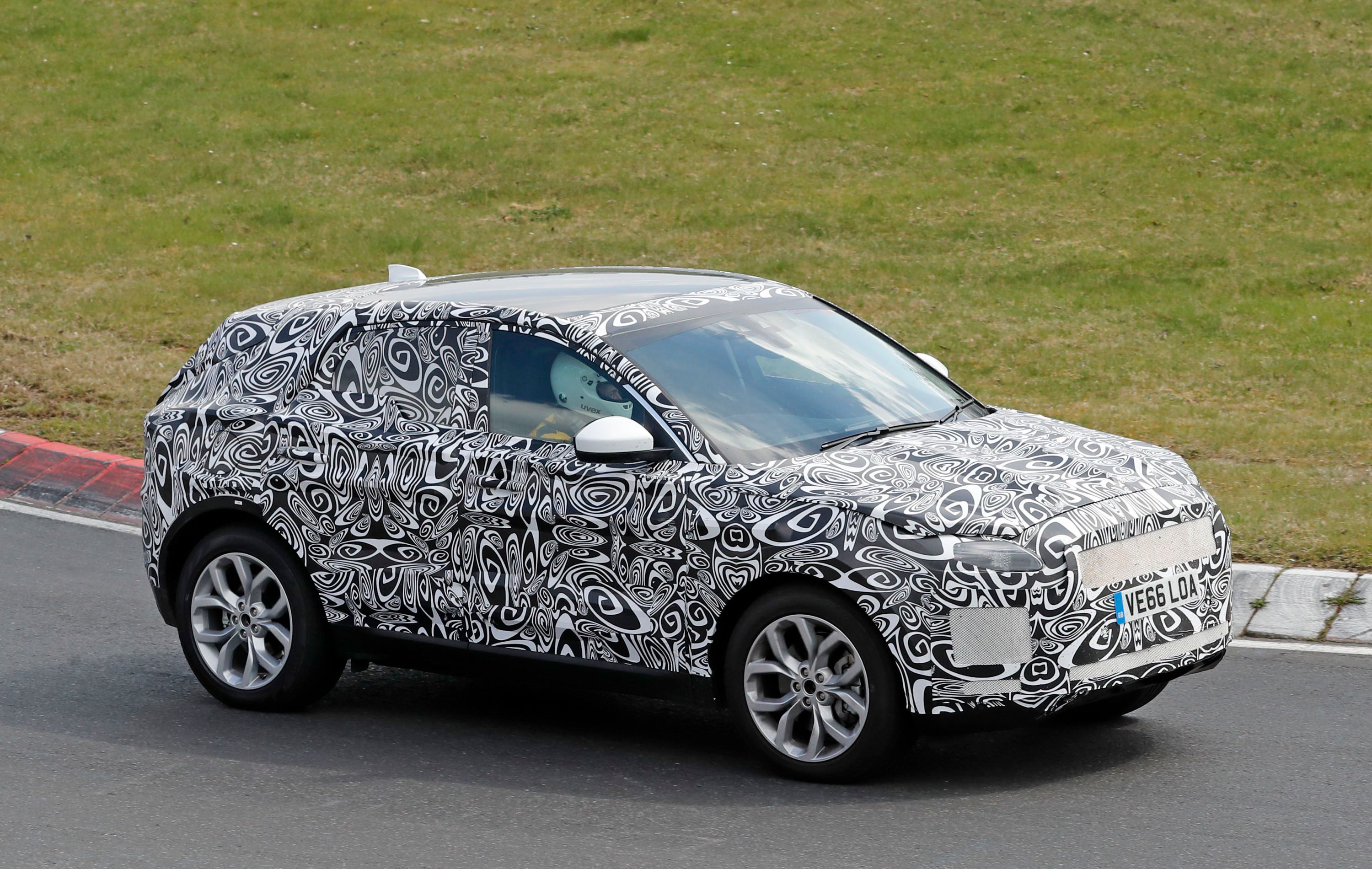
|
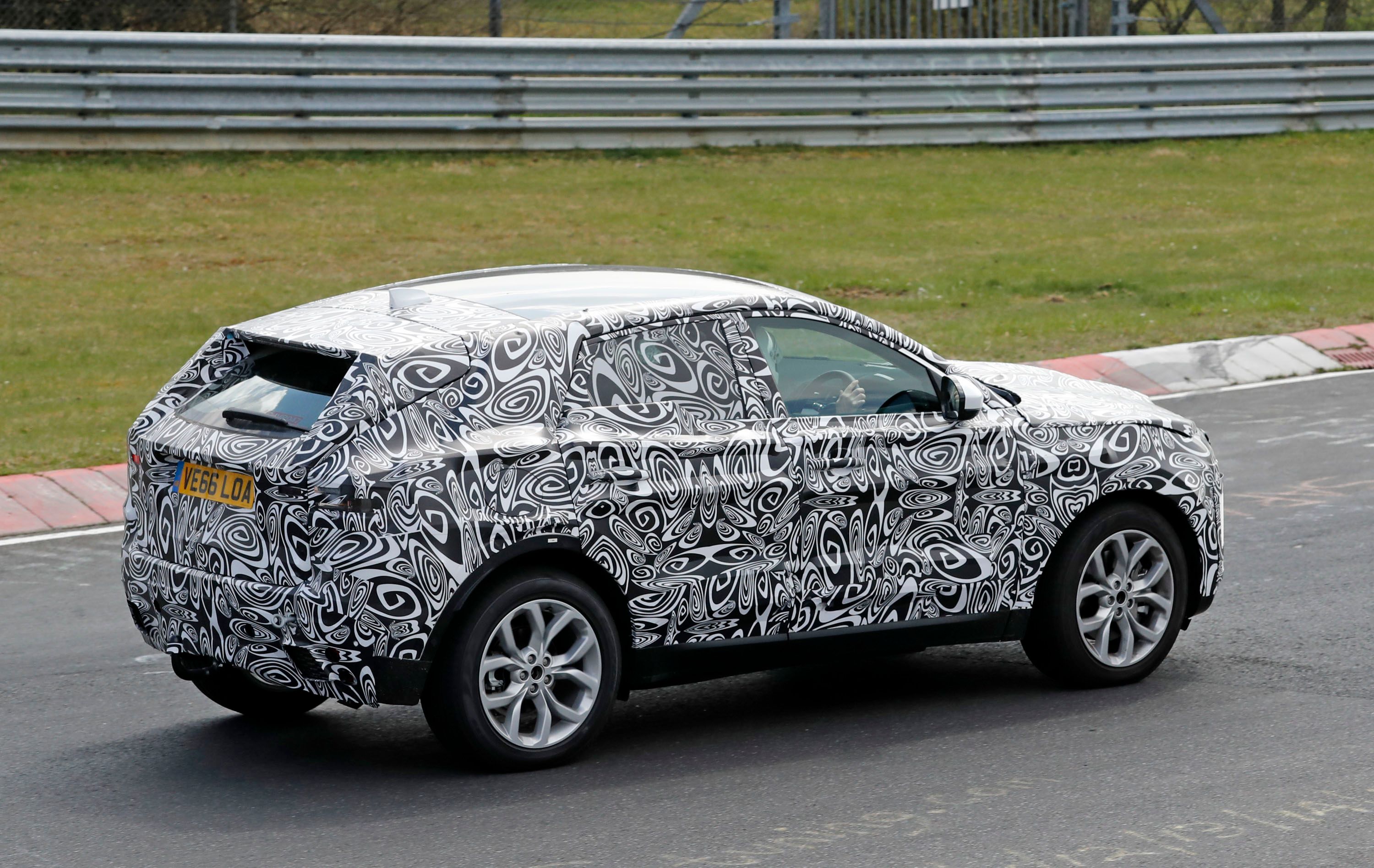
|
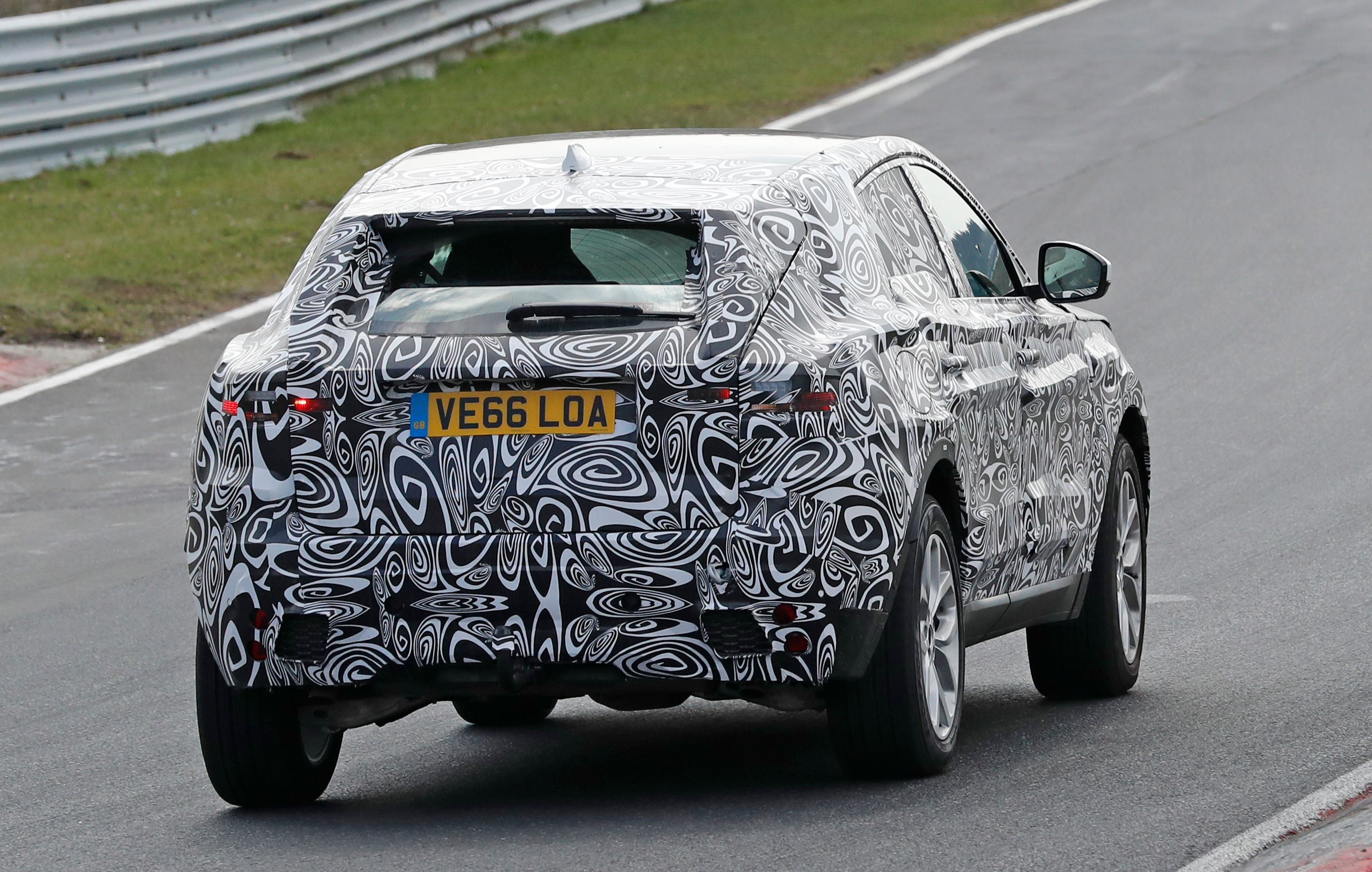
|
January 19, 2017 - Jaguar E-Pace goes for another testing session
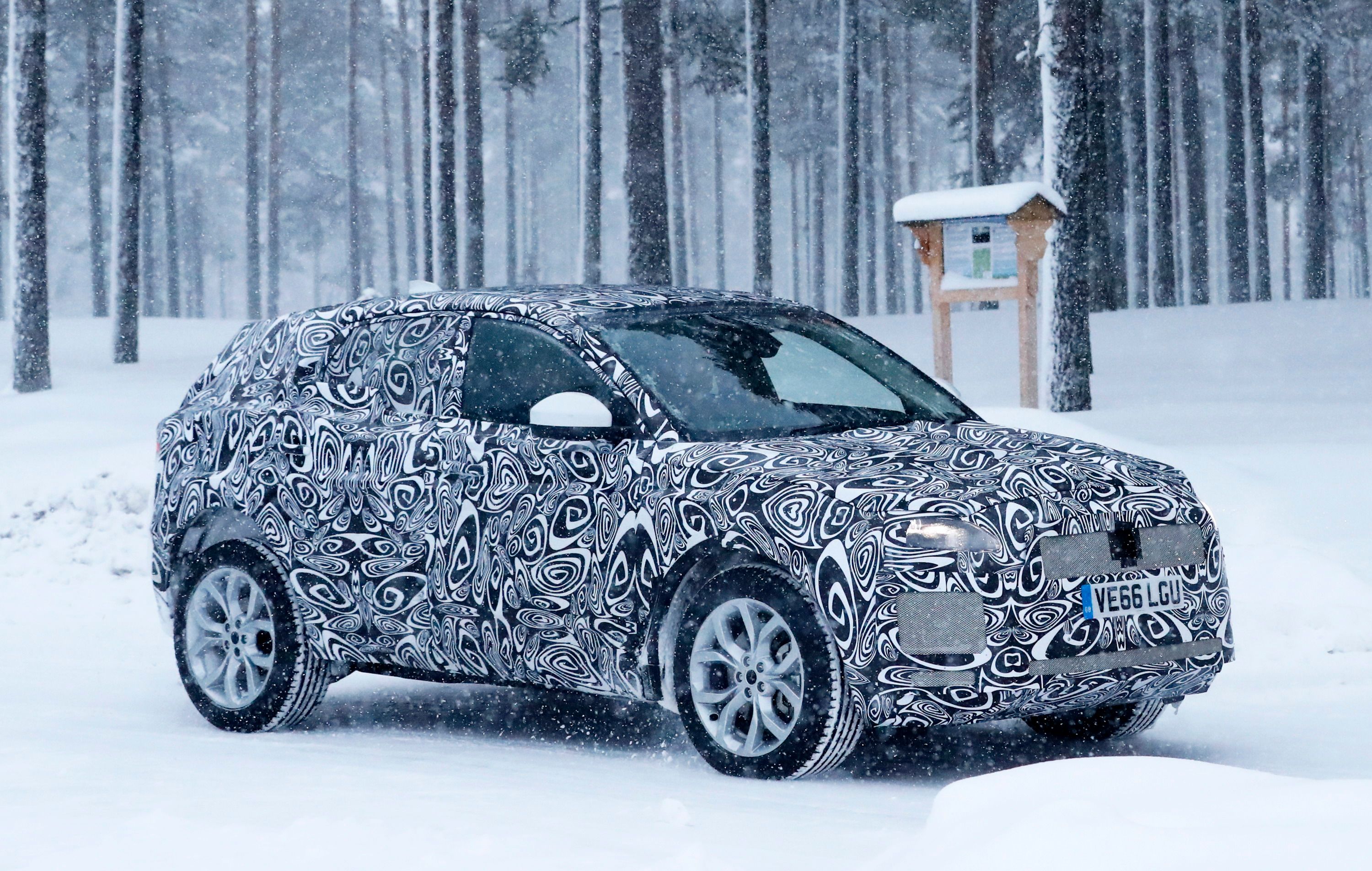
|
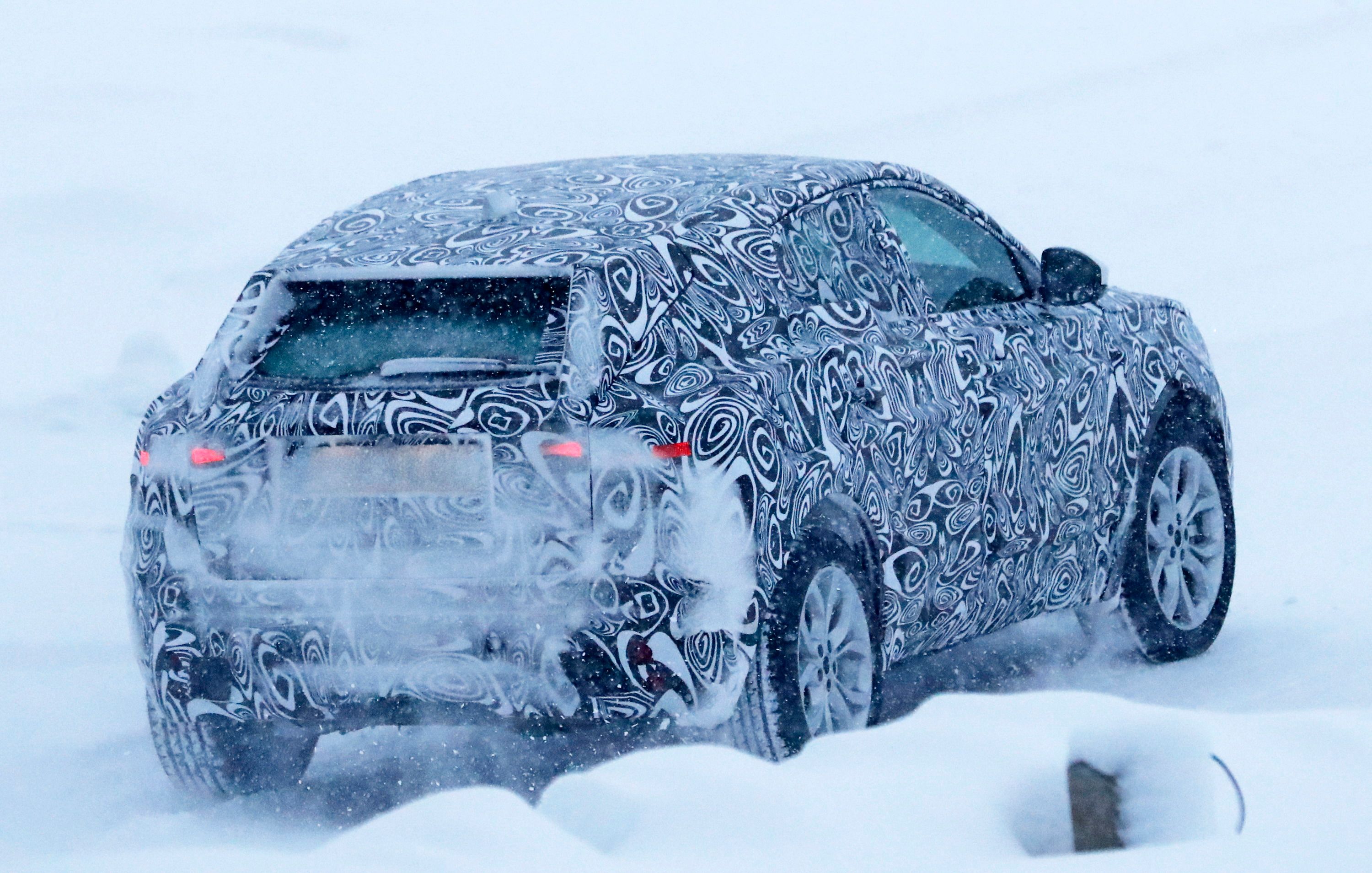
|

|
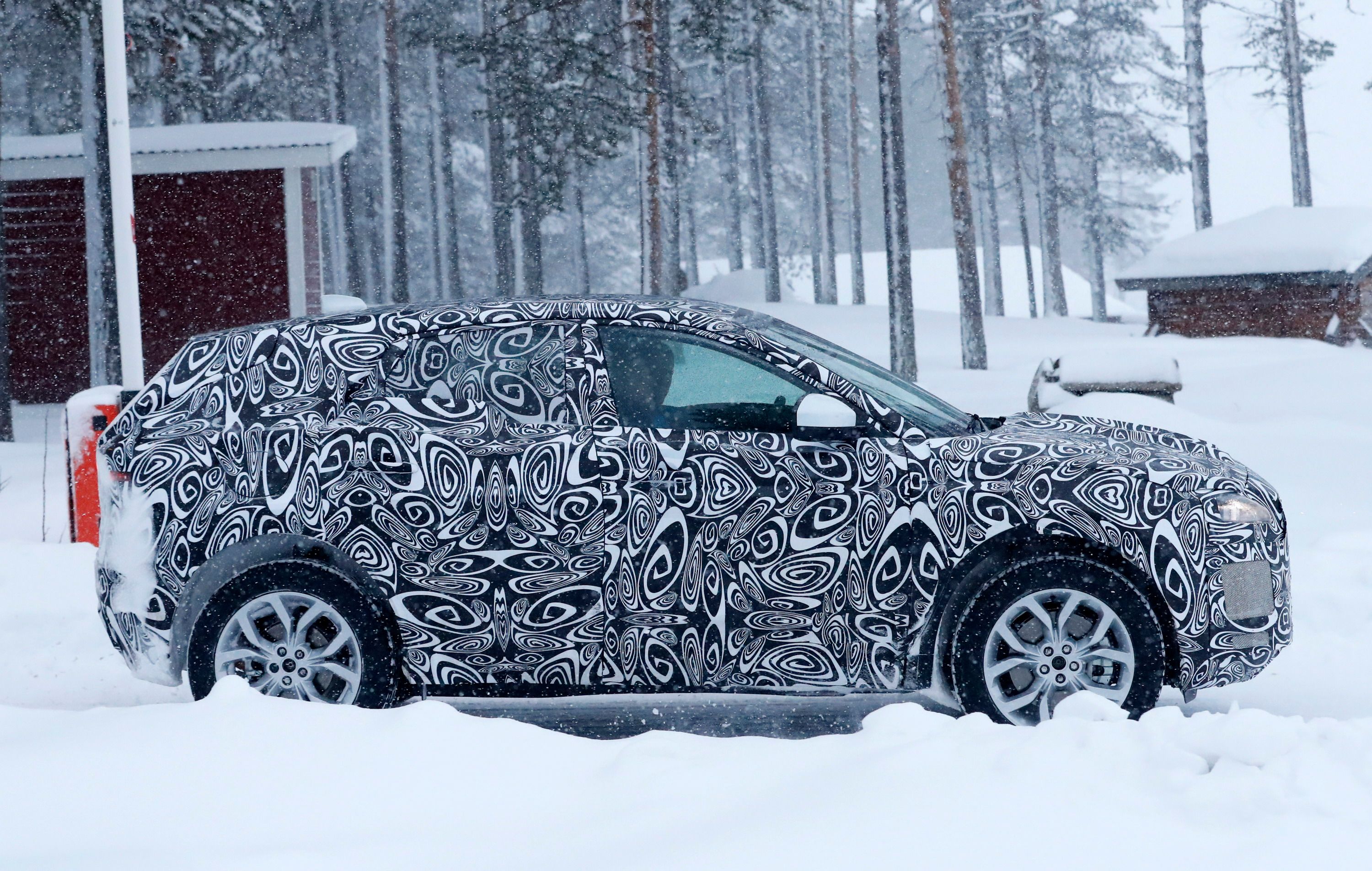
|
February 15, 2016 - First testing session
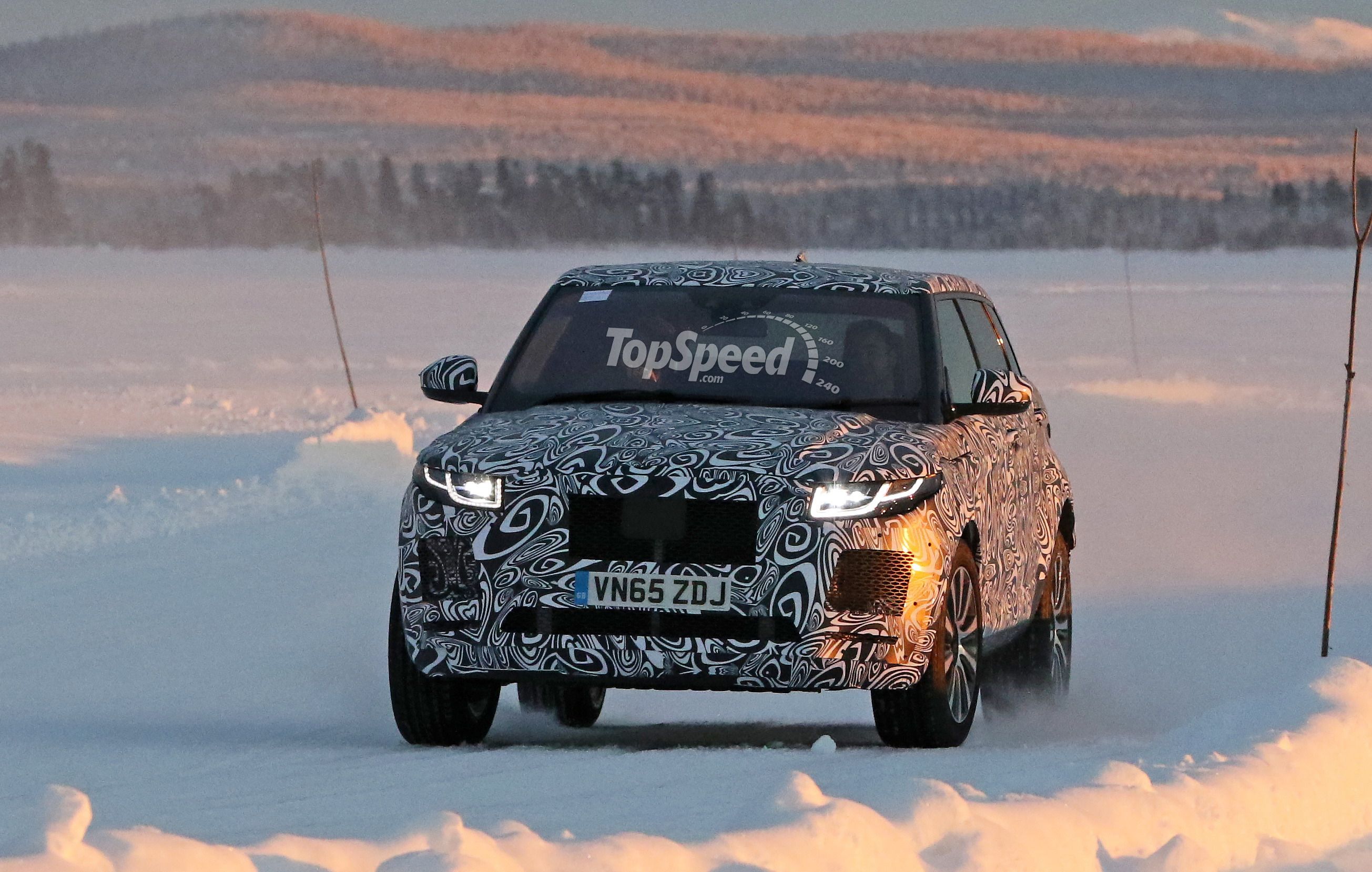
|
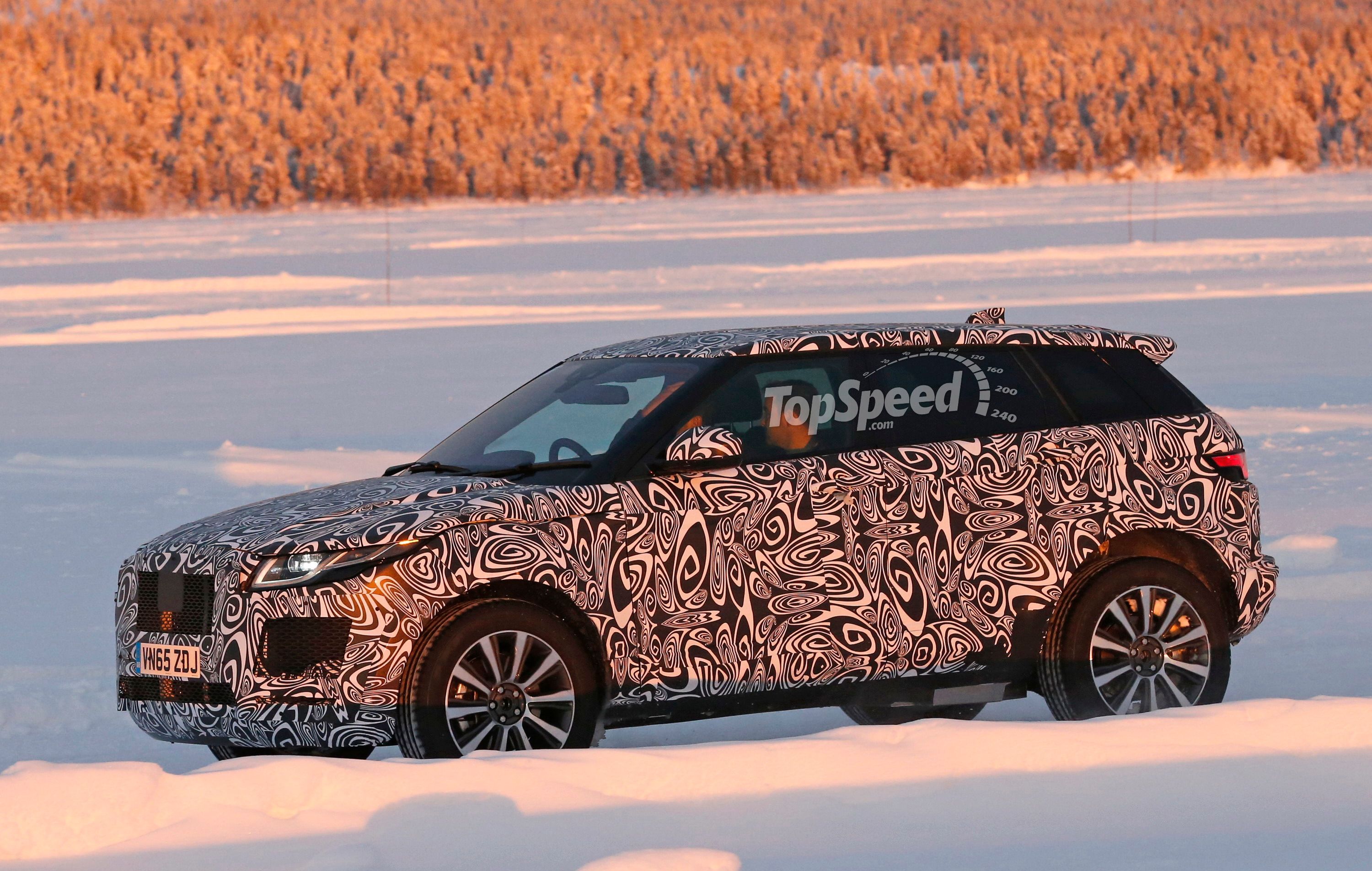
|
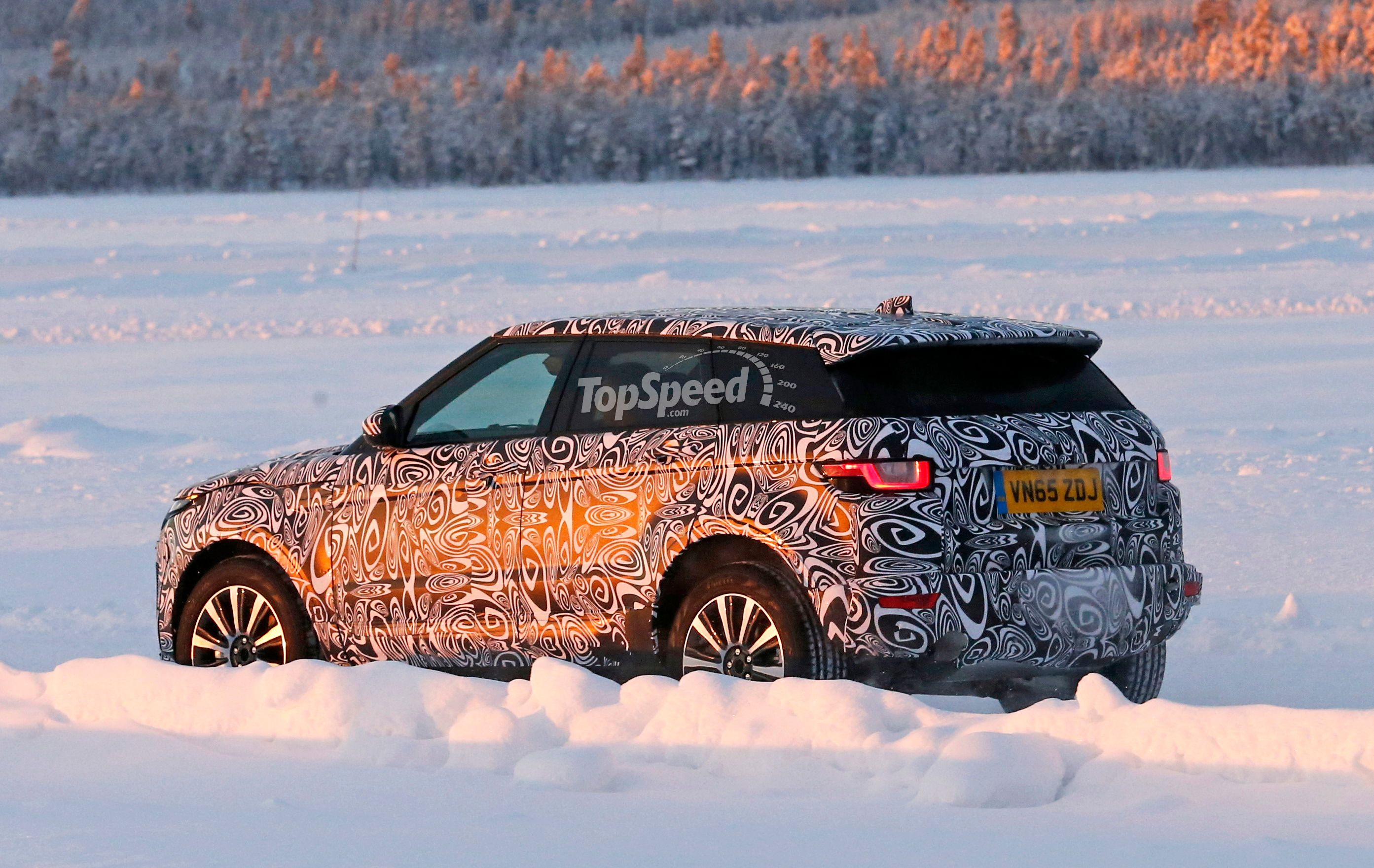
|
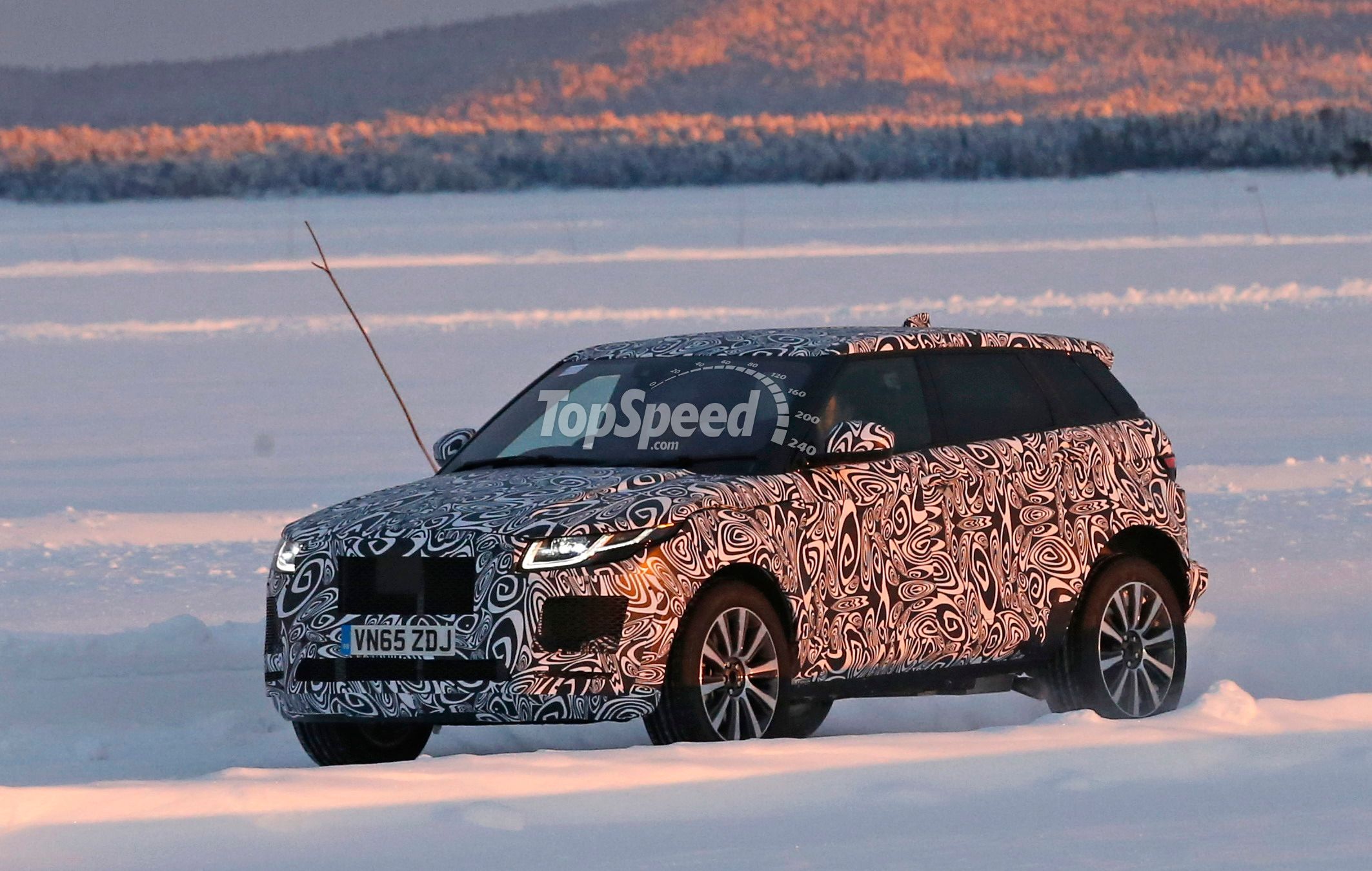
|
Update History
Updated 01/19/2017: Our spy photographers caught the upcoming Jaguar E-Pace out for a new testing session, this time during cold, winter conditions. Also, new rumors suggest that the new model could be released sometime in mid-2017.
Updated 02/22/2016: Based on the recent spy shots and rumors we decided to create a rendering for the upcoming E-Pace. Let us know in the comments section below what do you think about it.





